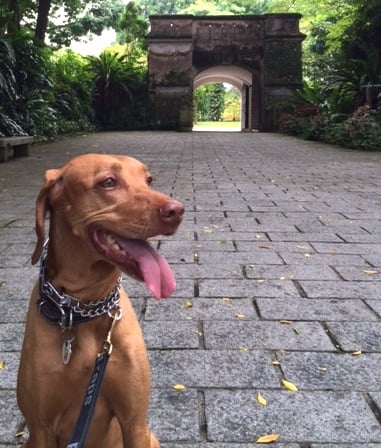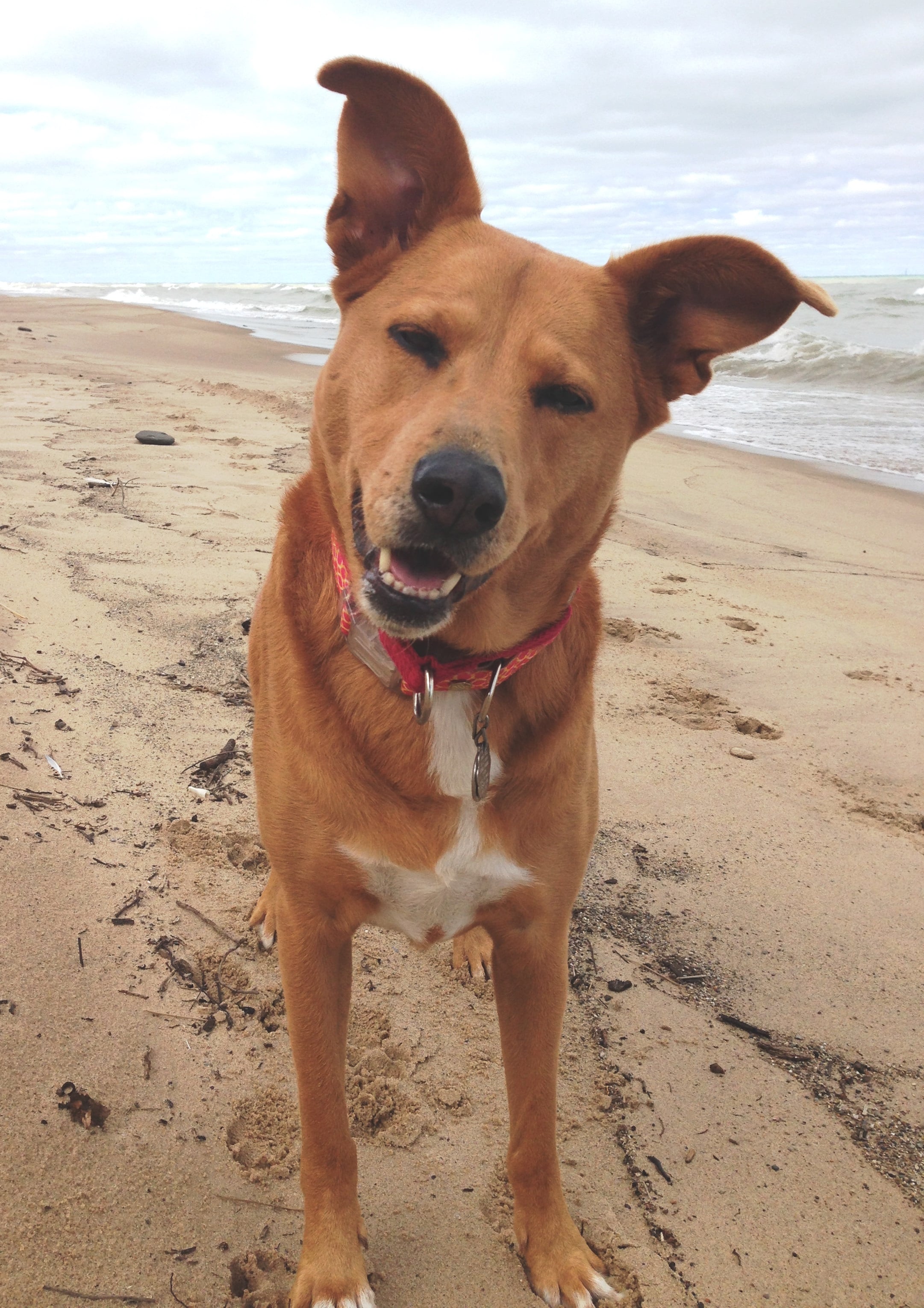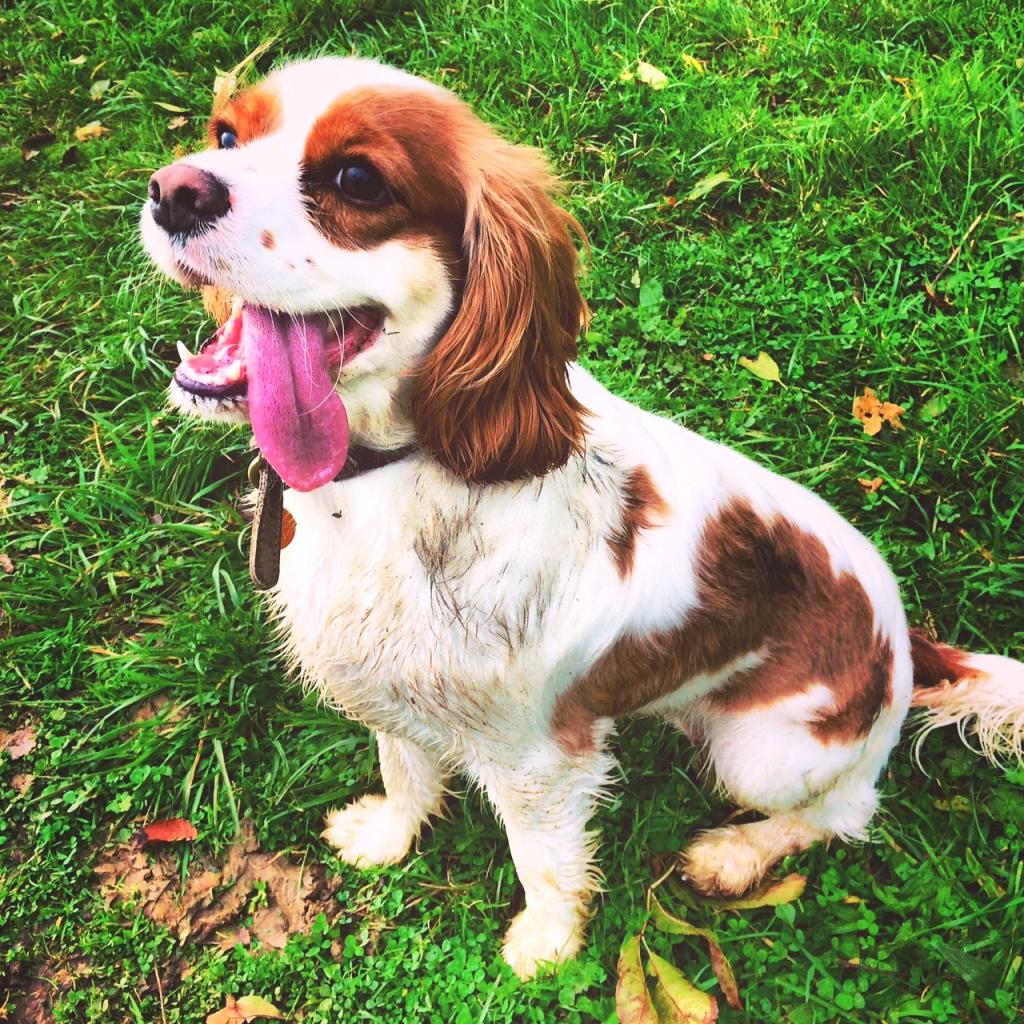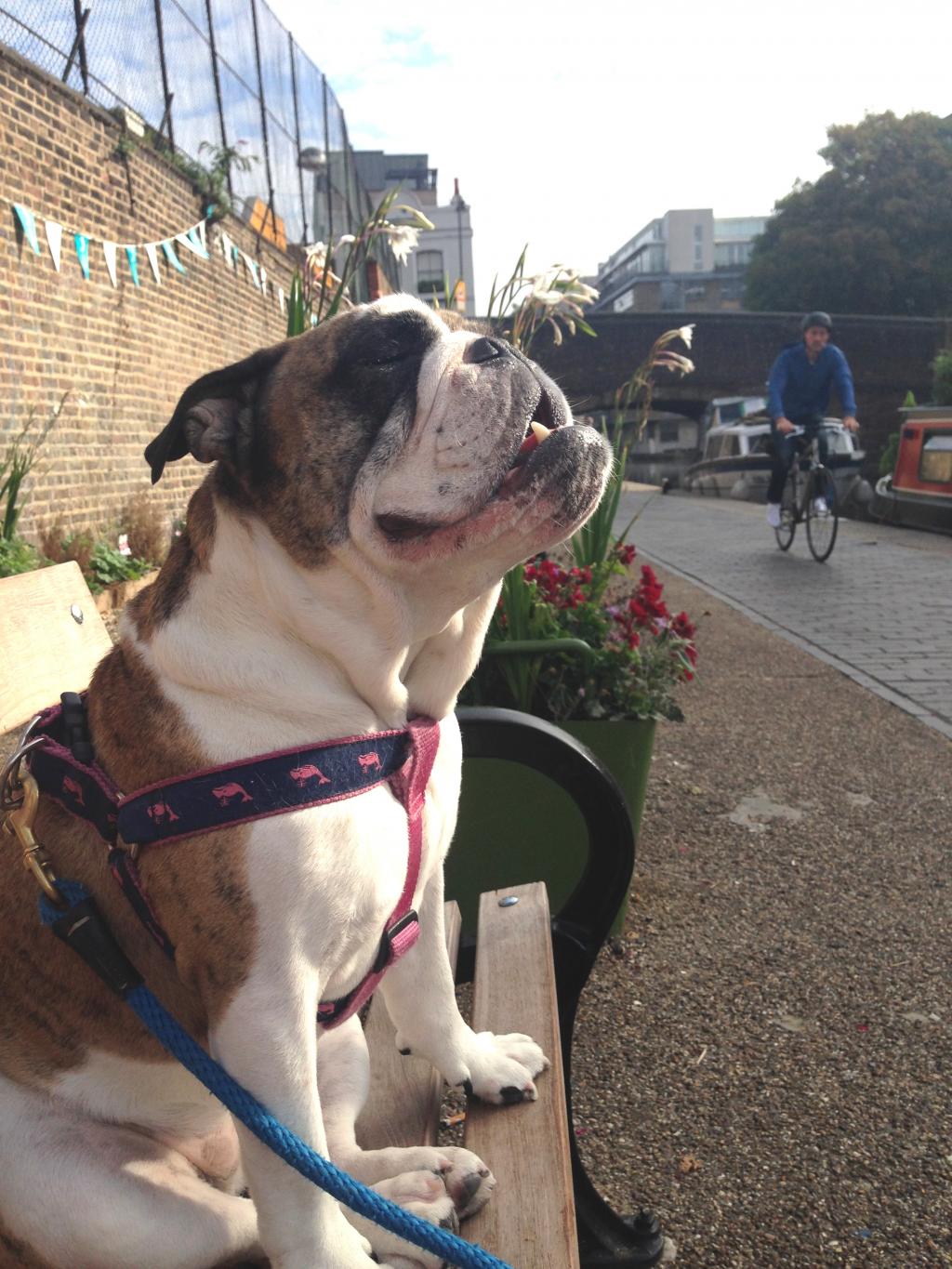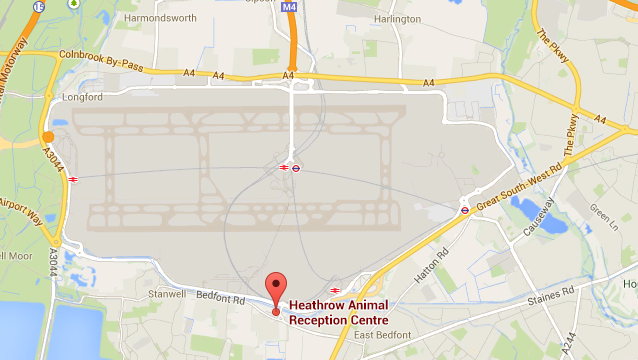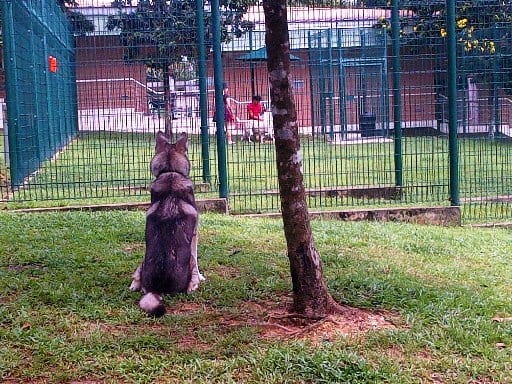Pit Bull Travel: Understanding Breed Specific Legislation and Destinations | PetRelocation
Your guide to countries that accept pit bulls and other commonly banned dog breeds.
Calling all globetrotting pet parents. The United States updated pet import rules effective August 1, 2024, with a transition period through July 31, 2025. These changes are meant to keep travel safe and rabies free while making most moves easier. At PetRelocation, we have brought thousands of pets home to the US and we are ready to guide you through the update.
The updates focus on stronger documentation and rabies protection.
- Designated Ports for High Risk Countries: Foreign vaccinated dogs that have been in a high risk rabies country within the last 6 months must enter at one of six airports with CDC registered Animal Care Facilities. Reservations are required for exams and possible revaccination. Current facilities include ATL (Dandie Scottie Kennel), LAX (Kennel Club LAX and Rue’s Kennels), MIA (Pet Limo), JFK (The ARK Pet Oasis), IAD (Pender Pet Retreat), and PHL (Gateway Animal Care Center).
- CDC Dog Import Form: Required for every dog. Submit online in advance. The receipt is valid for six months as long as the departure country stays the same.
- Rabies Vaccination Certification: CDC now requires specific forms. Vets complete either the US or Foreign Certification form. USDA endorsement is required for US issued forms when returning from a high risk country.
- Import Permits: Not required for personal pets. Only commercial or resale dogs need a USDA APHIS permit.
LET'S GET PACKING: A STEP BY STEP GUIDE
Pre Departure Prep (start early)
- Vaccinations: Rabies is required for all dogs. It must be given after microchip implant and the dog must be at least 6 months old. Other common vaccines are recommended.
- Certification Form: Work with your vet to complete the correct CDC form.
- Health Check: Most requirements are built into the CDC forms.
- ACF Reservation: Required for foreign vaccinated dogs coming from high risk countries.
Shortly Before Takeoff
-
Submit the CDC Dog Import Form and bring the receipt.
-
Confirm you have the certification form, microchip proof, and any ACF details needed.
CURRENT ENTRY SCENARIOS
Scenario 1 – US Vaccinated Dog
- Any airport is allowed.
- Dog is 6 months or older and microchipped.
- CDC Dog Import Form receipt.
- Certification of US Issued Rabies Vaccination. USDA endorsed export certificates are accepted only if issued on or before July 31, 2025.
Scenario 2 – Foreign Vaccinated Dog from Low Risk or Rabies Free Country
- Any airport is allowed.
- Dog is 6 months or older and microchipped.
- CDC Dog Import Form receipt.
- Certification of Foreign Rabies Vaccination and Microchip or the DMRVV free or low risk certification.
Scenario 3 – Foreign Vaccinated Dog that Has Been in a High Risk Country
- Must use one of the six ACF airports and book in advance.
- Dog is 6 months or older and microchipped.
- CDC Dog Import Form receipt.
- Certification of Foreign Rabies Vaccination and Microchip form completed by the vet.
Option A (recommended): Valid rabies titer from a CDC approved lab. This allows exam and a US rabies booster at the ACF with same day release in most cases.
Option B: No titer or results not available. Dog will need an exam, booster, and a mandatory 28 day quarantine at the ACF at owner cost.
KEEPING EVERYONE HEALTHY
- Rabies is the only federal focus for dogs. Cats have no federal rabies rule, but airlines and states may require vaccination.
- Quarantine exists only for foreign vaccinated high risk entries without a titer. No home quarantine is allowed.
- States may add their own rules. We check these for every move.
Useful Resources
- CDC Bringing a Dog into the U.S. main page: https://www.cdc.gov/importation/dogs/index.html
- CDC-registered Animal Care Facilities list: https://www.cdc.gov/importation/dogs/approved-care-facilities.html
- High-Risk Country list: https://www.cdc.gov/importation/dogs/high-risk-countries.html
Feeling overwhelmed? We have got your back. These rules are stricter on paper but easier day-to-day with the right partner. Contact us for a custom plan https://www.petrelocation.com/arrange
Bringing pets to United States?
Here’s what to know about moving pets to United States.
Author:
PetRelocation TeamUpdate on Importing Pets into the United States:
The United States updated pet import rules effective August 1, 2024, with a transition period ending July 31, 2025. These focus on rabies prevention while simplifying for most travelers. Always check CDC and USDA sites for latest details.
Key Changes in US Import Regulations:
-
Designated Ports for High-Risk Countries:
- Foreign vaccinated dogs from high risk rabies countries (in last 6 months) without a valid titer must enter at one of 6 airports with CDC registered Animal Care Facilities (ACFs) for exam and possible revaccination. Book reservations early to avoid holds. Airports and ACFs: ATL (Atlanta Dandie Scottie Kennel), LAX (Los Angeles Kennel Club LAX or Rue’s Kennels), MIA (Miami Pet Limo), JFK (New York The ARK Pet Oasis), IAD (Dulles Pender Pet Retreat), PHL (Philadelphia Gateway Animal Care Center).
-
CDC Dog Import Form:
- Required for all dogs entering or returning to the US. Submit online in advance (up to 6 months ahead for multiple trips from same country). Receipt valid 6 months if details unchanged.
-
Endorsed Rabies Vaccination Certificate:
- Dogs from high risk countries need specific forms: US vaccinated use USDA endorsed Certification of US issued Rabies Vaccination. Foreign vaccinated use Certification of Foreign Rabies Vaccination and Microchip. Vaccines must follow microchip implant. Dogs 6 months or older.
-
Import Permits:
- Import permits are no longer required to bring your dog into the US. The CDC Dog Import Form simplifies the process.
Bringing a Dog Into the US
Bringing dogs to the USA is manageable if you follow these steps:
-
Pre-Departure Prep:
- Vaccinations: Rabies required (current, after microchip). Optional include distemper, hepatitis, parvovirus, parainfluenza, bordetella. For high risk countries, get certified form from vet or USDA.
- Health Certificate: Obtain a health certificate from a licensed veterinarian stating your pet is healthy for travel. This usually involves a physical exam and may require additional tests depending on your pet's origin country.
-
Shortly Before Takeoff:
- CDC Dog Import Form: Complete and submit the online form well before your pet's arrival. Keep your receipt.
- Documentation Double-Check: Ensure you have all required documents: health certificate, CDC Dog Import Form submission receipt, and (for high-risk dogs) endorsed rabies vaccination records.. See CDC guide here: https://www.cdc.gov/importation/dogs/low-risk-countries.html.
.png)
Koko moved from Mexico to the United States
Bringing a Cat Into the US
- A veterinarian issued a health certificate to state your pet is healthy and fit to fly. This certificate must be completed within 10 days of travel. (not required by the CDC or the USDA, but may be required by the airline)
- Cats are not required to have proof of rabies vaccination for importation into the United States. However, some states require the vaccination of cats for rabies, so it is a good idea to check with state and local health authorities at your final destination.
- Optional vaccines include Feline enteritis (Feline panleukopenia or Feline distemper), Rhinotracheitis, and Calicivirus.
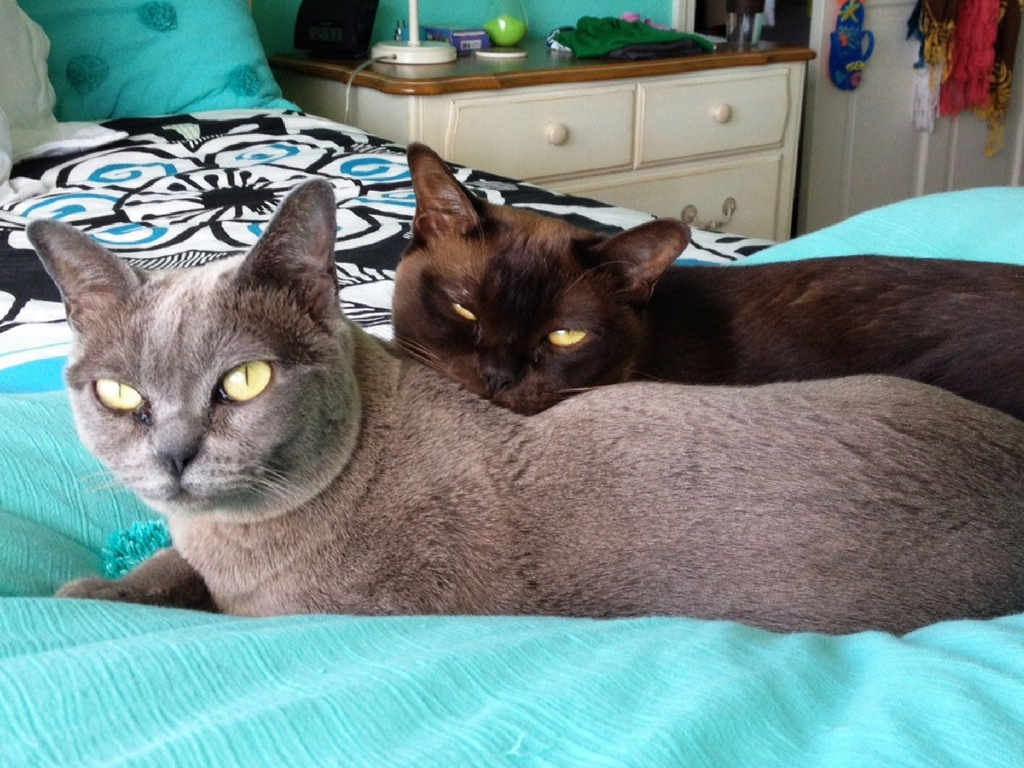
Charlie and Chloe moved from Germany to the US
Importing Other Pets to the USA
If you plan to bring a pet other than a cat or dog to the US, you can find more information on the USDA APHIS website.
Other Requirements to Consider
Moving pets cross-country:
With airline limits on breeds and crates, consider ground transport for domestic legs or if flying into major hubs only.
Preparing your pet for export from your current residence:
Always check with your country of origin to determine export requirements for any pet. Most countries require a government endorsement/export permit for pets to leave or some official government veterinarian inspection before departure. You can determine export requirements by contacting your departure country’s Ministry or Department of Agriculture.
Make sure you meet individual airline requirements for pet travel:
Some airlines, including Delta, require additional documentation for live animals under certain circumstances. If booking pet travel independently, check with your airline to ensure all paperwork requirements are met.
If you need to import a dog to the USA or any other pet for that matter, we would love to help. If you have a question we didn't answer above!
If you're ready to work with a PetRelocation consultant to build your unique move plan and get a quote, start arranging your move today!
Bringing pets to United States?
Here’s what to know about moving pets to United States.
Author:
PetRelocation TeamUSA Domestic Pet Transportation
Many airlines have tightened regulations on several breeds and species that could previously fly via their pet cargo programs within the United States. The good news is we can help, and we've moved many pets across the country via ground transportation. Including Guinevere, who moved to Florida from Wisconsin!
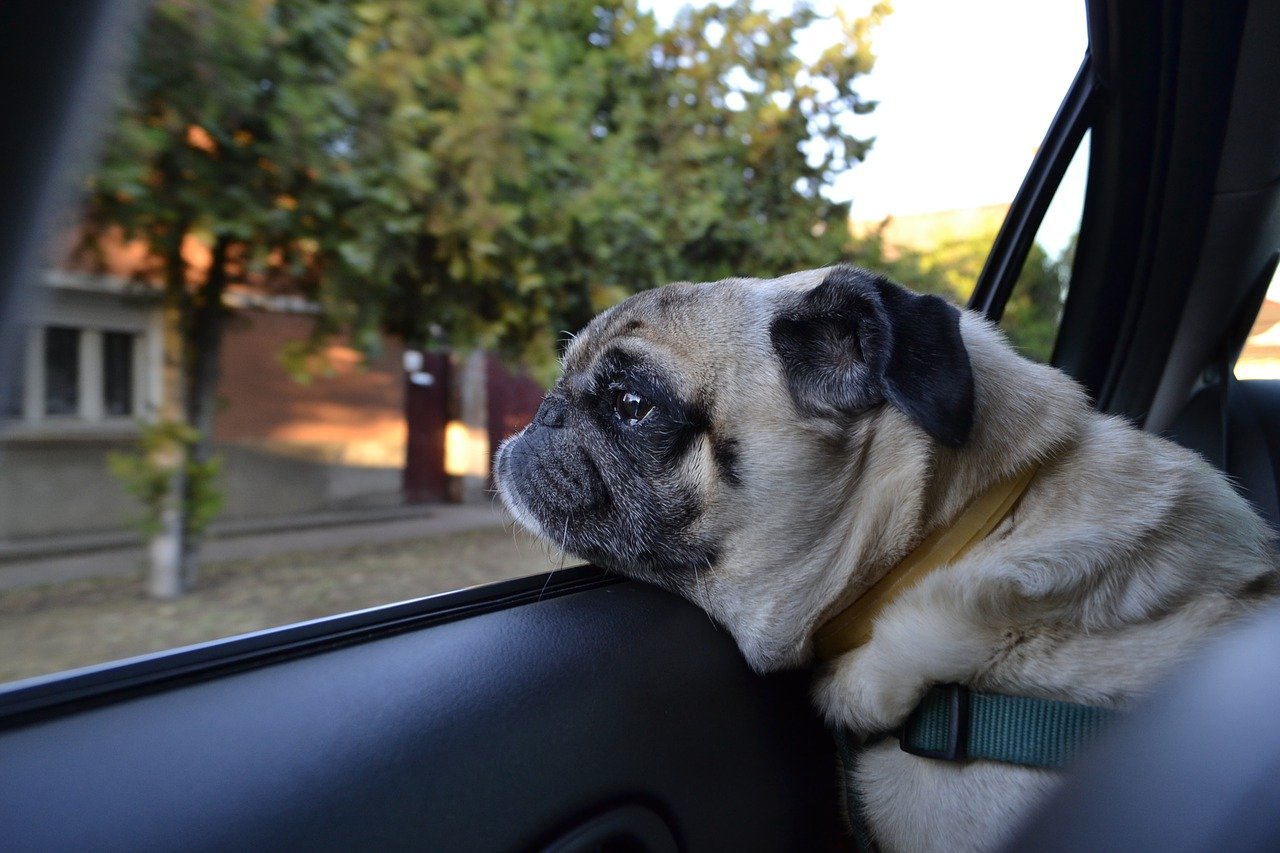 Not sure if your pet falls within this category? Animals that fall under these new restrictions include:
Not sure if your pet falls within this category? Animals that fall under these new restrictions include:
Snub-nosed breeds:
Many airlines have had bans on snub-nosed breeds (think pug, french bulldog, boxer, Persian). With United Airlines following suit in 2018, our ability to transport these breeds using their PetSafe program ceased.
Large Breeds:
While it is possible to fly larger breeds (based on crate size) on some airlines domestically, the limited routing that can accommodate them can create a bit of a logistical puzzle while researching air travel. If you need to determine your pet’s crate size, check out our guide on choosing the right pet travel crate. Another consideration for airlines that accept large pets is heat: embargoes out of warmer weather ports (like Phoenix) may have all pet travel embargoed during summer when high temperatures create a safety hazard.
Species other than dogs and cats:
With dog- and crate-specific restrictions also came new rules regarding species other than cats and dogs. Limited air travel options for birds, rabbits, turtles, pigs, and more have resulted in these pets falling under our growing group of ground transportation clients.
While we can’t circumvent airline regulations, we have relationships with pet transportation companies nationwide and remain dedicated to moving our clients’ pets to their new homes in the safest way possible. For this reason, we offer full management of a private ground relocation. It is not the only option; we feel it is the best. If you’re beginning your research and want to know your choices, here’s a brief explanation of some travel arrangements you could make for your pet.
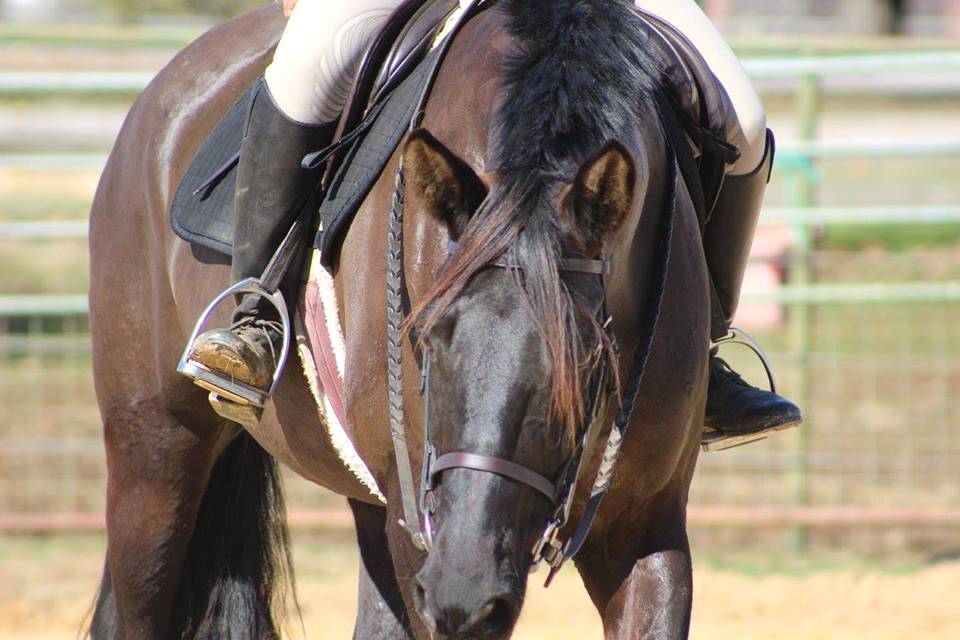
Mattie moved from Texas to South Carolina.
Your Options: Types of Ground Transportation
Private Ground (our preferred method):
Our private ground transportation service includes a driver for just your pets (no pets other than your own will be added to this driver’s itinerary), which allows for personalized attention and care, consistent updates and expectations throughout the drive, and the elimination of added stress from unfamiliar pets.
Dedicated stops are provided every 2-4 hours to ensure your pets are walked, get a bathroom break, and have fresh water. Dogs are not required to travel in a crate if they are comfortable traveling in a vehicle. You can pack favorite items (bedding, home bowls, bags of food/treats, toys, etc.) to help make your pets more comfortable during the journey. Medication can be administered as prescribed if needed. We have a preferred partner network that goes through our training to uphold our high standards. You will also have the driver’s number and your relocation coordinator’s; photos will be provided along the trip (updates provided 2-3 times per day!).
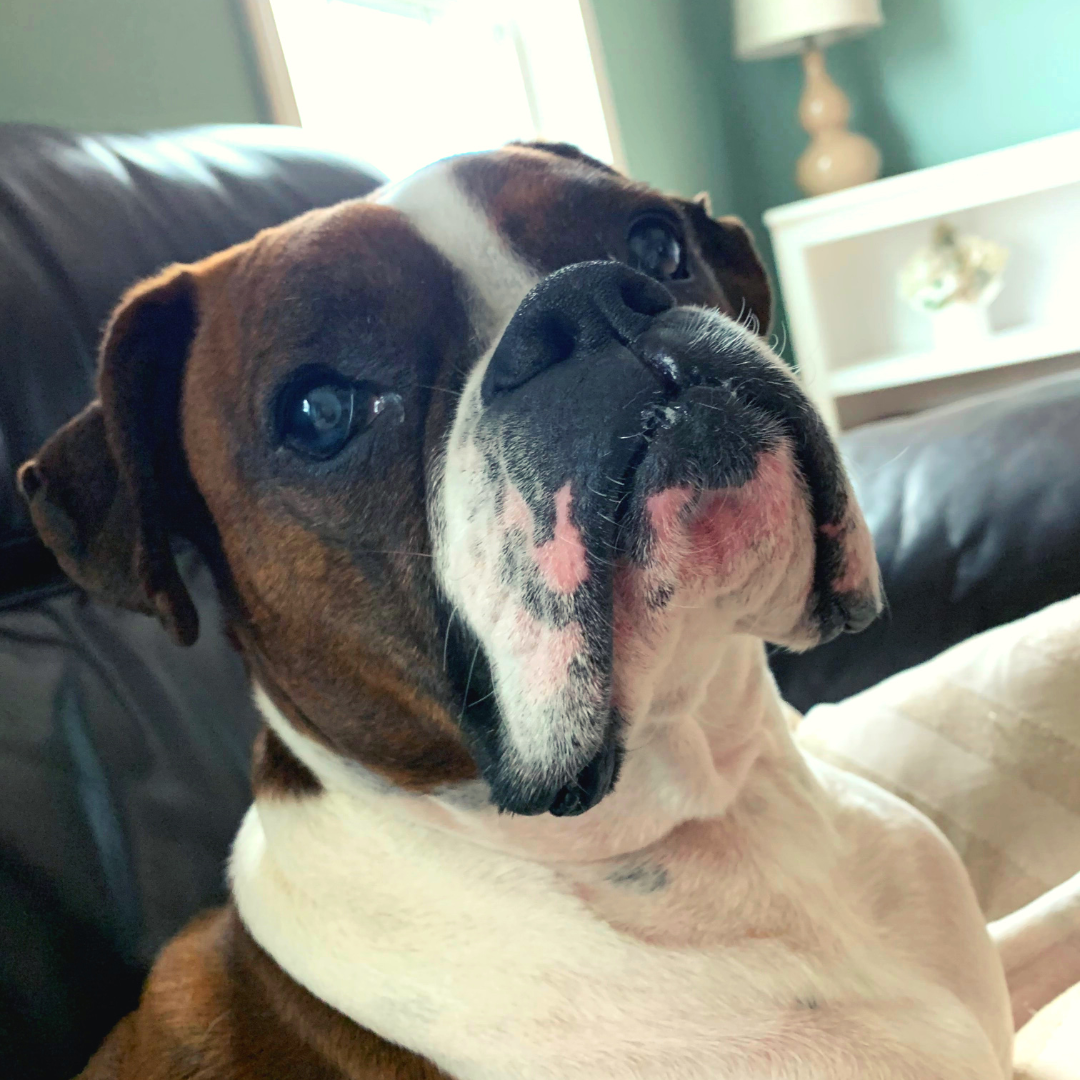
Zoey traveled from Boston to Miami on a PetRelocation private drive.
Another benefit of ground is the lower cost of adding multiple pets (compared to air). Since drivers are paid by the hour and not based on the size and weight of each pet, a larger fur family of three or four can travel together for a more nominal increase in the overall cost, which can be a relief to those with the ground as their sole option.
What are the costs incurred for private ground transportation? Costs will vary depending on vehicle size needed, how many miles traveled, if an overnight pet hotel is needed, and duration of your pet’s trip.
Shared Ground:
Some companies provide what we call “shared ground transportation”. As a pet owner, your role in the process would be to request a shipment to be transported (in this case, your pet), connect with a driver from within that company’s network, and then determine individually whether to move forward with enlisting his or her services.
While this is certainly a lower-cost option than private ground, we do want pet owners to be aware of a few key differences:
The potential of MULtiple stops, other animals
To streamline costs and create delivery efficiencies for drivers, some companies will combine shipments headed in the same direction. This presents a possibility that your pet will be one of the multiple deliveries, which could add to the duration of an already extended trip by car. This may not be a good fit for pets that experience anxiety or pet owners who want to keep the journey as short as possible.
Training and Certification Requirements
Drivers hired through shared shipping services may not be formally trained to transport and handle animals or may not meet the certification standards to which PetRelocation holds its private ground drivers. This isn’t necessarily bad, but know that the likelihood of experiencing varied results is higher than if a shipper is vetted and qualified to be a pet shipper.
Less control over desired travel dates
Even though shared drives come with a lower price tag, this does mean that your move date may need to be flexible. Since other pet families may request to travel on a particular week, it may not always align with the week of transport you might be hoping for. Therefore, a shared drive would need you to be lenient on timing to coordinate with a driver’s schedule.
If lowering costs is critical for your pet’s move, the shared ground is something to look into—each move and situation is unique, and we know that private does not work for everyone!
Ensuring the safety and well-being of pets during ground transportation is crucial for pet transportation services. As a pet owner, you must ensure your furry companion is transported safely and securely. We recommend looking for the following information:
- Driver qualifications and experience: A reputable pet transportation service should provide information on the driver's qualifications and experience. This can include details such as their driving record and any certifications they may have. Knowing that the driver is qualified and experienced gives you peace of mind that your pet is in good hands.
- Type of vehicle used: The vehicle used for pet transport is an important consideration. Specialized vehicles equipped with climate control, safety restraints, and other features designed specifically for pet transportation can provide a safe and comfortable environment. Be sure to ask the pet transportation service about the type of vehicle they use and what features it has to ensure your pet's safety.
- Pet restraints: The use of pet restraints during transport is an essential safety measure. Whether it's through the use of kennels or other specialized restraints, pet owners want to know that their pets will not move around during transport and potentially get injured. Make sure to ask about the type of restraints used and how your pet will be secured during transport.
In conclusion, choosing a pet transportation service that prioritizes safety measures is crucial to ensure your pet's safety and well-being during ground transportation. By considering the driver's qualifications and experience, the type of vehicle used, and the pet restraints used during transport, you can make an informed decision when choosing a pet transportation service and have confidence in your choice.
If you have more questions about ground transportation, we encourage you to contact our team so you can make the best decision possible for your fur family’s upcoming journey.
Bringing pets to United States?
Here’s what to know about moving pets to United States.
Author:
PetRelocation TeamTopic:
Ground Transport Stories, How-To GuidesPet:
Cats, Dogs, Birds, Rabbits, Horses, Reptiles, Snub-Nosed Breeds, HamstersCountry:
United StatesWelcome to Our Comprehensive Guide on Moving Pets to Singapore
Are you planning to move your pets to Singapore? Navigating the import process for cats and dogs can be overwhelming, but with careful planning, you can ensure a safe and successful relocation. This guide will walk you through the key steps and requirements for moving pets to Singapore, including quarantine, import permits, veterinary requirements, and more.
Because the import process is long and detailed, we want to provide insight into steps that can be challenging to manage without help. Learn more about quarantine, import permits, and other essential items to create a safe move plan for your pet.
Table of Contents
- Pet Import Requirements for Singapore
- Veterinary Requirements
- Pet Quarantine in Singapore
- Obtaining an Import Permit
- Health Certificates and USDA Endorsements
- Crate Training and Traveling as Manifest Cargo
- Breakdown of Costs
- Timeline for Organizing Pet Relocation to Singapore
- Additional Resources

Adobo moved to Singapore with PetRelocation.
Pet Import Requirements for Singapore
Singapore is a designated rabies-free country, which means the rules for importing pets are more complex than in countries like the United States. However, with careful preparation, bringing your pets to Singapore is possible.
- Quarantine Requirements:
- No Quarantine Required If:
- Your pet arrives within 5 days of your arrival in Singapore (proof via e-ticket required).
- You have owned your pet for at least 6 months prior to import (documented).
- All veterinary requirements are met, including the Rabies FAVN Titer Test.
- 10-Day Quarantine:
- Required if the above conditions are not met.
- Can be completed at home (for eligible pets) or at the Sembawang Animal Quarantine Station.
- 30-Day Quarantine:
- Applies to pets from high-risk rabies countries.
- No Quarantine Required If:
- Visit the Singapore Government's Animal & Veterinary Service (AVS) for up-to-date veterinary requirements by country category.
Veterinary Requirements
To ensure your pet meets the entry requirements for Singapore, you must closely follow vaccination and blood test regulations. Cats and dogs will need the following:
-
Microchip:
- Must be ISO-compliant.
- Implant before rabies vaccination and the Rabies FAVN test.
-
Rabies Vaccinations:
- Rabies Vaccination #1:
- Must be recombinant or inactivated/killed.
- Administered by a USDA-accredited veterinarian.
- Given at least 31 days before the Rabies FAVN Titer Test blood draw.
- Pet must be at least 4 months old at the time of export.
- Rabies Vaccination #2:
- Required only if Rabies Vaccination #1 expires before arrival in Singapore.
- Administered after the Rabies FAVN Titer Test blood draw.
- Must be at least 30 days old at the time of export.
- Original ink-signed rabies certificates must accompany your pet.
- Rabies Vaccination #1:
-
Rabies FAVN Titer Test:
- Blood sample drawn by a USDA-accredited vet at least 29 days after Rabies Vaccination #1.
- The test must be at least 90 days old at the time of export.
- Owner's passport name must be on the FAVN paperwork.
- Test results must travel with your pet.
-
General Vaccinations:
- Dogs: DHPP vaccination.
- Cats: FVRCP vaccination.
- Vaccinations must be at least 14 days old before departure.
- Original ink-signed certificates must accompany your pet.
-
Internal and External Parasite Treatments:
- Must be performed within 7 days of departure.
- Use products from the Australian list of acceptable parasite treatment products.
- Separate certificates may be required if treatment dates aren’t listed on the health certificate.
Pet Quarantine in Singapore
Pets entering Singapore can now complete quarantine either at the Sembawang Animal Quarantine Station (SAQS) or, for eligible pets, at home.
At-Home Quarantine Requirements:
- Eligibility: Pets from the USA and Canada are eligible.
- Residence Details:
- Provide the full address of your residence in Singapore.
- Confirm if the address is a personal residence or temporary accommodation.
- Submit a video of the room designated for at-home quarantine.
- Ensure your housing accepts pets (confirm with landlords or housing management).
Sembawang Animal Quarantine Station (SAQS):
-
Limited Availability:
- Spots fill up quickly, especially during the summer months and winter holidays.
- Reserve your pet's space in quarantine as soon as possible within the six-month window.
-
Reservation Changes:
- If your travel dates change, you can amend your quarantine reservation.
- Fees ranging from $15-$85 SGD ($12-$65 USD) may apply to alter an existing booking.
Obtaining an Import Permit
Once your pet's quarantine is approved, you may apply for an import permit and dog license (no license is needed for domestic cats).
Process:
-
Import Permit:
- Valid for 30 days upon issuance.
- Required for USDA endorsement.
- Apply approximately one month before your planned departure date.
-
Dog License:
- Required for all dog imports.
- Owners must complete a 30-minute online course for pet owners before applying.
- We can guide you through this process.
Estimated Cost:
- Import Permit: $50 SGD (about $40 USD)
- Dog License: $15 SGD (about $12 USD)
Health Certificates and USDA Endorsements
Your pet must have a country-specific health certificate issued by a USDA-accredited veterinarian before being exported from the United States to any foreign country.
Requirements:
-
Health Certificate:
- Issued within 7 days of travel.
- Must include all vaccinations and treatments.
- Ensure your vet has the proper USDA accreditation.
-
USDA Endorsement:
- Health certificates must be sent to your state's USDA office for endorsement.
- Cost: $121 USD plus $7 USD per additional pet.
Important Note: Failure to obtain the correct endorsements can result in extra time and expenses associated with additional appointments and testing.
Crate Training and Traveling as Manifest Cargo
Unlike many rabies-free countries, pets traveling to Singapore can arrive in-cabin, as checked luggage, or as manifest cargo.
Why Choose Manifest Cargo:
- Safety and Comfort:
- Pets travel in a pressurized, temperature-controlled compartment.
- Handled by trained professionals.
- Customs Clearance:
- Streamlines the process upon arrival.
- Pets traveling as cargo can be cleared more smoothly.
Crate Training:
- Start Early:
- Acclimate your pet to their travel crate well in advance.
- Practice Often:
- Regular crate training reduces stress on travel day.
- Resources:
- Check out our crate training tips.
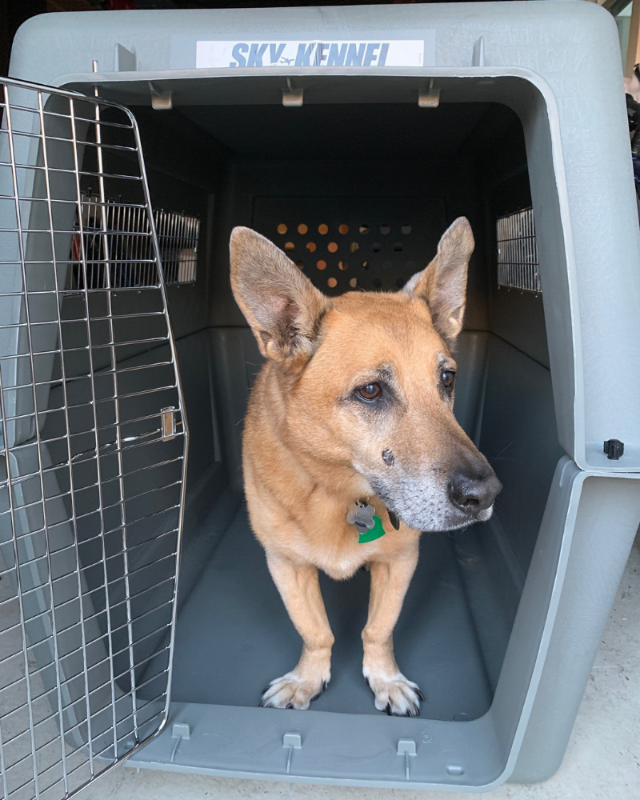
Marley moved to Singapore with our help in 2020
Breakdown of Costs for Moving Dogs and Cats to Singapore
While this is not an extensive list of the possible costs you could incur when relocating your pet to Singapore, this chart should help you understand what you should be prepared for when budgeting for a pet’s move.
| Service | Notes | Cost (in USD) |
|---|---|---|
| Veterinarian Services | Includes vaccines, blood work, and final health certificates. May vary depending on your veterinarian's costs. | $1,000-$1,200 |
| Import Permit |
Required for USDA endorsement. |
$40 * |
| Dog License |
Not applicable for cats. |
$12 * |
|
Mandatory Quarantine |
Subject to additional charges if changes are made to reservation. | $200 * |
|
Government Endorsements |
A separate charge of $7 for extra pets. | $121 |
|
Airfreight |
Dependent on the size and weight of your pet. | $850-$3000 |
How Long Does it Take to Organize Pet Travel or Relocation to Singapore?
The Singapore import process requires several steps in the correct order. Plan to accommodate all requirements.
General Timeline:
-
4-6 Months Before Departure:
- Begin the import process.
- Schedule initial veterinary appointments.
- Start crate training your pet.
- Reserve quarantine space at SAQS or at home.
-
3-4 Months Before Departure:
- If your pet already has a microchip and the first rabies vaccine, you may need this time to complete the remaining requirements.
-
1 Month Before Departure:
- Apply for the import permit and dog license.
- Confirm all veterinary requirements are on track.
-
1 Week Before Departure:
- Obtain the health certificate from a USDA-accredited veterinarian.
- Send the health certificate for USDA endorsement.
Important Considerations:
-
Unexpected Delays:
- Always allow extra time for potential delays.
- Quarantine reservations are made on a first-come, first-served basis.
-
Travel Dates:
- If your travel dates are non-negotiable, arrange for someone to care for your pet in case of delays.
- PetRelocation can manage the process, including pick-up, vet coordination, and travel arrangements.
More Singapore Pet Relocation Resources
- Singapore Pet Travel FAQ
- Singapore: When Is My Pet's Move Date Confirmed?
- Singapore Pet Quarantine Rules & Advice
- Summer & Holiday Pet Travel to Singapore
- Five Myths About Moving Pets to Singapore
- Living in Singapore With Pets
We’re here if you need us! Feel free to contact us or arrange a move anytime.
Bringing pets to Singapore?
Here’s what to know about moving pets to Singapore.
Author:
PetRelocation Team
Welcome to the finale of our Singapore Pet Travel Spotlight series.
After successfully relocating your pet to Singapore and completing all the requirements, it's time to focus on settling in and enjoying life with your furry companion in one of the most vibrant cities in the world. Singapore offers abundant resources for pet owners, from top-notch veterinary services to pet-friendly parks and cafes.
Let's explore some of the best ways to thrive with your pets in this incredible city-state!
Veterinary Services in Singapore
Finding a trusted veterinarian is essential for your pet's health and well-being. Here are some reputable veterinary clinics in Singapore:
- AAVC - Animal & Avian Veterinary Clinic
- All pets & Aqualife Clinic
- The Animal Clinic Katong Branch (East)
- The Animal Doctors Pte. Ltd.
- The Joyous Vet
- Namly Animal Clinic
- Pets Avenue Veterinary Clinic
These clinics offer various services, including general check-ups, vaccinations, and emergency care. It's advisable to register with a vet soon after arrival to ensure your pet's medical records are up-to-date.
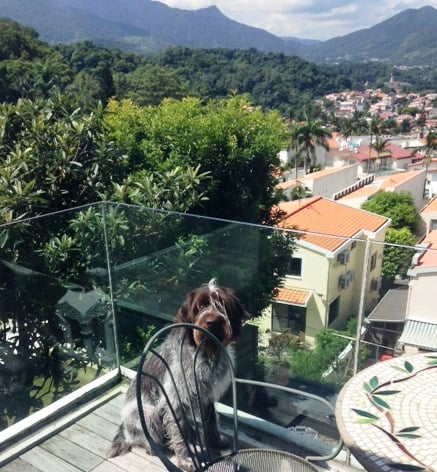
Kennel and Boarding Options
Whether you're planning a trip or need temporary care for your pet, knowing reliable boarding facilities is helpful. Here are some recommended options:
- Furryland Cage Free Cat Resort
- Kev Posh Pet Services
- Mitchville K-9 Kennels
- The Pet Hotel
- Ricted Kennels
Before choosing a facility, consider visiting in person to ensure it meets your expectations for cleanliness, safety, and comfort.
Pet Food and Supplies
Access to quality pet food and supplies is essential. While there are many brick-and-mortar stores, buying food online can offer a wider selection, especially for specialty, raw, or freeze-dried options. Here are some online retailers:
- BARF (Biologically Appropriate Raw Food) Singapore
- Howlistic Life
- The Loyal One
- Wooga!
- Paw Family
These retailers provide convenient delivery services, making keeping your pet's pantry stocked easier.
Dog and Cat Cafes in Singapore
Singapore has several pet cafes that welcome you and your furry friends. These venues offer a unique experience where you can enjoy a meal or beverage while your pet socializes. Some popular spots include:
- Open Farm Community
- The Green Door
- Happenstance Cafe
- Sun Ray Cafe
- Colbar
- Cornerstone
- Ah B Cafe
- The Company of Cats
- Neko No Niwa
Note: Offerings and hours may vary, so it's best to check each cafe's website or call ahead before visiting.
Dog-Friendly Parks (Off-Leash):
Singapore provides ample spaces for dogs to run freely and socialize. Here are some off-leash dog runs and fenced areas:
- Bishan-Ang Mo Kio Park Dog Run
- Katong Park Dog Run
- West Coast Park Dog Run
- Sunny Heights Swim Park (Entrance fee applies but offers swimming facilities for dogs)
These parks are excellent places for your dog to exercise and make new friends.
Dog-Friendly Parks (On-Leash):
For leisurely walks and enjoying nature, these parks welcome dogs on leashes:
- East Coast Park
- Labrador Nature Reserve
- Singapore Botanic Gardens
These scenic locations are perfect for picnics, walks, and appreciating Singapore's natural beauty with your pet by your side.
More Dog Friendly Open Spaces
Many outdoor areas are popular with runners, walkers and general outdoor explorers. While not specifically created for dog recreation, they are dog friendly as long as you follow the rules (keep pets on a leash, clean up after yourselves, etc.).
- Tanjong Beach Club
- The Green Corridor
- Sengkang Riverside Park
Advice for Living With Dogs and Cats in Singapore
Here are some valuable tips and anecdotes from local pet owners and our relocation agents:
Climate Considerations
- Heat and Humidity: Singapore's tropical climate can be challenging for pets not accustomed to high temperatures.
- Stay Hydrated: Ensure your pet always has access to fresh water.
- Short Walks: Opt for shorter walks during cooler parts of the day (early morning or late evening).
- Air Conditioning: Pets may appreciate air-conditioned environments to stay comfortable.
Health Precautions
- Tick and Flea Prevention: Due to the climate, ticks and fleas are prevalent.
- Regular Treatments: Use veterinarian-recommended tick and flea prevention products.
- Routine Checks: Regularly check your pet's coat for parasites.
Cultural Sensitivity
- Respect Local Customs:
- Muslim Community: Be mindful that some locals may have reservations about dogs due to religious beliefs.
- Public Spaces: Pets are not allowed in most shopping malls and certain public areas.
Transportation
- Pet Transportation:
- Taxis and Rideshares: Not all drivers accept pets. It's advisable to call ahead or use pet-friendly transport services.
- Pet Taxis: Consider using specialized pet taxi services for convenience.
Housing Regulations
- Housing & Development Board (HDB) Restrictions:
- Pet-Friendly Housing: Ensure your residence allows pets, as HDB flats have specific rules on pet ownership.
- Breed Restrictions: Some dog breeds may not be permitted in certain housing types.

This is the fifth installment of our Singapore Pet Travel Spotlight. Read the rest of the series here and contact us to meet with a Pet Relocation Consultant if you're ready to start planning your pet's move to Singapore.
Bringing pets to Singapore?
Here’s what to know about moving pets to Singapore.
Author:
PetRelocation Team
Are you planning to move your beloved pet to Singapore? As part of our Singapore Pet Travel Series, we've provided valuable information on Sembawang Animal Quarantine Station, Singapore FAQs, and how to travel smoothly during the busy summer or holiday season.
This installment tackles some common myths and misconceptions about pet travel to Singapore.
Myth #1: All Pets Must Undergo a 30-Day Quarantine
Fact: Quarantine requirements depend on several factors, including your country of origin and compliance with specific veterinary protocols.
-
No Quarantine Needed If:
- Your pet comes from a Schedule II country (including the USA and Canada).
- The pet arrives within 5 days of the owner's arrival in Singapore (proof via e-ticket required).
- You have owned your pet for at least 6 months prior to import.
- All veterinary requirements are met, including the Rabies FAVN Titer Test.
-
10-Day Quarantine Required If:
- The above conditions are not met.
- Quarantine can be at home (for eligible pets) or at the Sembawang Animal Quarantine Station.
-
30-Day Quarantine:
- Applies to pets from countries with different rabies statuses.
- Preparation time is approximately 3 months.
Note: Always verify quarantine requirements based on your specific situation and consult with a pet relocation expert.
Myth #2: A "Rush" Move is Possible with Professional Help
Fact: While professional assistance streamlines the relocation process, Singapore's import procedures involve several mandatory steps that cannot be expedited.
-
Preparation Timeline:
- 4-6 Months: Typical preparation time for a 10-day quarantine.
- Minimum of 6 Weeks: Even with an existing microchip and first rabies vaccine, due to the Rabies FAVN Titer Test requirements.
-
Why It Takes Time:
- Veterinary Requirements: Vaccinations, microchipping, and blood tests must follow specific timelines.
- Documentation: Import permits, quarantine reservations, and other paperwork require processing time.
- Regulatory Compliance: Singapore's strict regulations ensure the health and safety of all animals.
Advice: Start planning as early as possible to accommodate all requirements without stress.
Myth #3: Extra Payment Can Bypass Quarantine or Breed Bans
Fact: Singapore enforces strict rules that cannot be bypassed with additional fees.
-
Quarantine Regulations:
- Mandatory for pets that do not meet the exemption criteria.
- No option to pay extra to avoid quarantine.
-
Breed Restrictions:
- Certain breeds are restricted or banned.
- Banned Breeds Include:
- Pit Bulls
- American Staffordshire Terriers
- Dogo Argentinos
- And others, as specified by the AVS
-
Compliance Is Mandatory:
- All import regulations must be followed precisely.
- Non-compliance can result in refusal of entry or other penalties.
Myth #4: In-Cabin Travel with the Pet Owner is Better
Fact: While having your pet in the cabin might seem comforting, air cargo travel is often safer and more practical for international flights to Singapore.
-
Air Cargo Travel:
- Pets travel in a pressurized and temperature-controlled compartment.
- Handled by trained staff experienced in animal care.
- Streamlines the customs clearance process upon arrival.
-
In-Cabin Challenges:
- Limited availability and strict size restrictions.
- Complicated customs clearance that can only occur during limited hours.
- Extended processing time upon arrival, potentially taking several hours.
-
Expert Assistance:
- Professional pet relocation services track and manage your pet's journey.
- Ensures compliance with all regulations and minimizes stress for both pet and owner.
Myth #5: Snub-Nosed Pets Can't Fly to Singapore
Fact: Brachycephalic breeds, such as Pugs and English Bulldogs, can fly to Singapore but require special considerations.
-
Airline Restrictions:
- Some airlines have restrictions due to health risks associated with these breeds.
- Preferred Airlines:
- KLM and Lufthansa may accept snub-nosed breeds using specific handling procedures.
-
Special Requirements:
- Larger Travel Crates: To ensure better airflow and comfort.
- Healthy Weight: Pets should be at an optimal weight to reduce risks.
- Temperature Embargoes: Travel may be restricted during extreme temperatures.
-
Additional Care:
- Air-Conditioned Transportation: From the airport to quarantine facilities.
- Close Monitoring: Throughout the journey to ensure safety.
Advice: Consult with your pet relocation specialist to plan the safest travel arrangements for your snub-nosed pet.
Plan Your Pet's Move with Confidence
At PetRelocation, we're here to debunk myths and provide accurate guidance for your pet's move to Singapore. Contact us to discuss your upcoming pet move to Singapore!
Bringing pets to Singapore?
Here’s what to know about moving pets to Singapore.
Author:
PetRelocation Team
Congratulations on your upcoming move to Singapore! In previous installments of the Singapore Pet Travel Spotlight series, we've discussed pet travelers' frequently asked questions and examined the details of Singapore's pet quarantine requirements.
We'll explore how to successfully plan your pet's relocation during peak travel times, such as summer and winter holidays.
High travel volumes and holiday schedules can impact your pet's move plans. With proper preparation and flexibility, you can navigate these challenges and ensure a seamless relocation for your pet.
Here are some tips to consider:
1. Increased Travel Volume
- Plan Early: Flights can be booked up quickly during peak seasons. Start arranging your pet's travel well in advance.
- Flexible Dates: Be prepared to adjust your pet's travel dates if necessary.
2. Airline Restrictions
- Heat Embargoes: Some airlines impose heat embargoes during summer, restricting pet travel when temperatures exceed certain limits.
- Contact Airlines: Check with your airline or PetRelocation consultant for up-to-date information on restrictions.
3. Brachycephalic Breeds
- Additional Restrictions: Snub-nosed breeds like Pugs, Bulldogs, and Persian cats may face additional travel limitations.
- Airline Policies: Confirm policies for your pet's breed to avoid surprises.
4. Quarantine Facility Availability
- Limited Space: The Sembawang Animal Quarantine Station (SAQS) often has a waiting list, especially during summer.
- Secure Accommodations Early: To ensure you secure an air-conditioned room for your pet, begin the process well in advance.
5. Prepare for High Demand
- Veterinary Appointments: Schedule necessary vet visits early, as appointments may fill up.
- Documentation: Ensure all paperwork is completed and submitted on time.
Winter Holiday Travel Tips
The winter holidays are another busy travel period. Here's how to manage your pet's relocation during this time:
1. Increased Travel Volume and Potential Delays
- Weather Delays: Winter weather can cause flight delays or cancellations.
- Contingency Plans: Work with your PetRelocation consultant to have backup plans.
2. Holiday Closures
- Office Closures: Be aware of national holidays in Singapore that might affect travel and quarantine logistics.
- Plan Around Holidays: Schedule your pet's arrival to avoid conflicts with closures.
3. Patience and Flexibility
- Expect Delays: High travel volumes may lead to longer processing times.
- Stay Informed: Keep in close communication with your relocation team for updates.
General Tips for Peak Season Pet Travel
1. Start Planning Early
- Advance Preparation: Begin planning your pet's relocation at least 4-6 months ahead of your intended move date.
2. Maintain Open Communication
- Regular Updates: Contact your PetRelocation consultant for any changes or updates.
3. Ensure Compliance with Regulations
- Updated Requirements: Ensure all veterinary requirements and documentation comply with the latest Singapore import regulations.
4. Comfort and Safety
- Crate Training: Help your pet become comfortable with their travel crate.
- Familiar Items: Include familiar toys or bedding to reduce stress during travel.
Plan for a Seamless Move
At PetRelocation, we understand that your pet's well-being is your top priority. With expert planning and proactive communication, we're here to ensure a seamless move for you and your furry companion.
Contact us today to schedule a consultation and plan your pet's move to Singapore!
Stay Tuned for Part Four: Five Myths About Shipping Pets to Singapore
Continue following our Singapore Pet Travel Spotlight Series for more insights and tips on pet relocation to Singapore.
Bringing pets to Singapore?
Here’s what to know about moving pets to Singapore.
Author:
PetRelocation Team
In Part Two of our Singapore Spotlight Series, we delve into one of the most critical aspects of relocating pets to Singapore: pet quarantine. Understanding the quarantine process, duration, and conditions is key to successful pet relocation.
Whether you're curious about quarantine duration, facility conditions, or special considerations, we've got you covered. Read on for our expert advice, and if you're ready to plan your pet's move, contact us for a personalized consultation.
Singapore Pet Quarantine Requirements
As discussed in our Singapore pet travel FAQs, the quarantine requirements have undergone significant updates. Here's what you need to know based on the latest information:
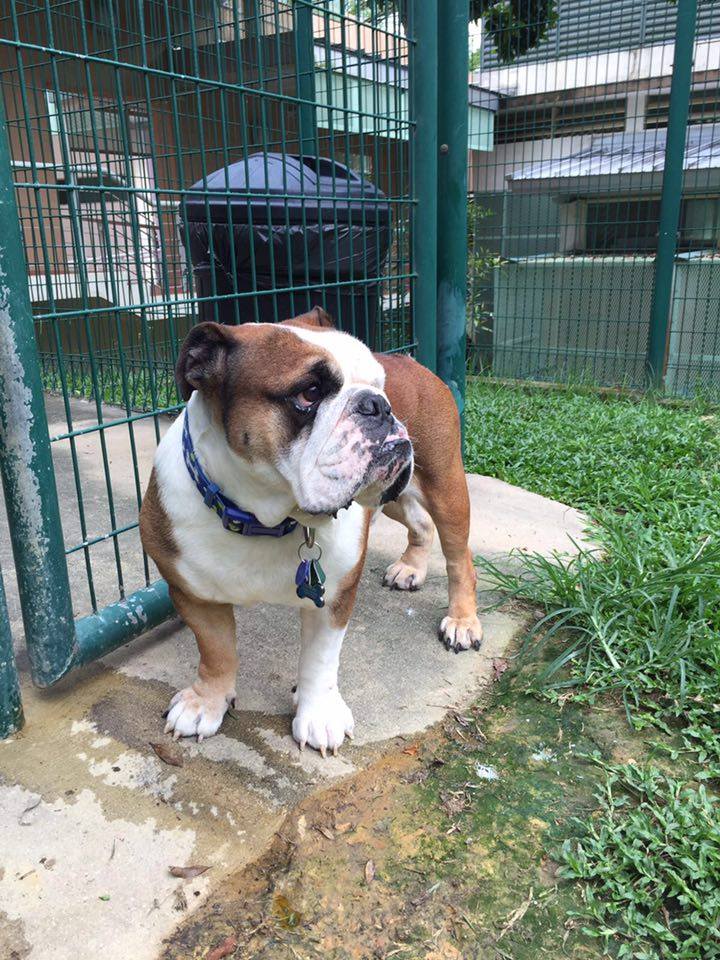
Gabo in Singapore quarantine
Is Quarantine Required?
-
Quarantine is NO LONGER required for pets from Schedule II countries (including the USA and Canada) if:
- The pet arrives within 5 days of the owner's arrival (proof via e-ticket is required).
- The owner has owned the pet for at least 6 months prior to import (documented).
-
Otherwise, a 10-day quarantine is required, either at home or at a designated facility.
Quarantine Duration and Preparation Time
- 10-Day Quarantine (if needed):
- Preparation Time: Approximately 4 months.
- 30-Day Quarantine (for pets from certain countries):
- Preparation Time: Approximately 3 months.
Important Note on Quarantine Timing
-
Arrival Timing at Quarantine Stations:
- Pets must arrive 4 hours before closing.
- Monday, Wednesday, Thursday, Friday, Saturday: Must arrive by 1 p.m. (closing at 5 p.m.).
- Tuesday: Must arrive by 10 a.m. (closing at 2 p.m.).
- Late Arrivals:
- Pets arriving after the designated times will be held overnight at the Changi Animal & Plant Quarantine Station.
- Pets must arrive 4 hours before closing.

Diesel & Dash recently moved to Singapore from Houston, TX
At-Home Quarantine Requirements
For eligible pets from the USA and Canada, at-home quarantine is an option under specific conditions:
Requirements:
-
Veterinary Compliance:
- Complete all necessary veterinary requirements, including the Rabies FAVN Titer Test.
- Ensure all vaccinations and treatments are up-to-date.
-
Residence Details:
- Provide a full address of your residence in Singapore.
- Confirm whether the address is a personal residence or temporary accommodation.
- Ensure that your housing accepts pets.
-
Documentation:
- Supply a passport photo page.
- Provide a copy of your e-ticket (if available).
- Include a copy of your visa (if applicable).
- Submit a photo of your pet(s).
- Video of the Room: Provide a video showcasing the room designated for at-home quarantine.
-
Application Process:
- Complete a form provided by your relocation agent.
- Submit all required documents for approval.
Important Notes:
- Pets Must Remain Indoors:
- During at-home quarantine, pets are not allowed outside for any reason, including bathroom breaks.
- Approval Required:
- At-home quarantine is subject to approval by the Singapore authorities.
Sembawang Animal Quarantine Station (SAQS)
If your pet requires quarantine at a designated facility, it will stay at the Sembawang Animal Quarantine Station.
Facility Highlights:
-
Transfer to SAQS:
- Upon arrival, pets are transferred to SAQS by AVS (Animal & Veterinary Service) staff using official vehicles.
- Transfers occur once daily in the morning.
- If a pet's flight lands in the afternoon, they may stay overnight at the airport quarantine station.
-
Visiting Hours:
- Monday to Friday: 4:00 PM - 6:00 PM
- Saturday: 2:00 PM - 6:00 PM
- Closed on Sundays and Public Holidays
-
Accommodations:
- Dogs: Kennels with indoor rooms and outdoor runs.
- Cats: Comfortable catteries.
- Air Conditioning: We arrange air-conditioned rooms for pets in quarantine.
- Facilities: Exercise fields and grooming rooms.
-
Care and Services:
- Trained animal handlers and daily veterinary checks.
- Pets are fed quality food.
- Dogs are walked each morning.
- Owners can reserve time to walk their dogs during visiting hours (reservations up to 48 hours in advance).
Special Considerations
Dietary Needs:
- Special Diets:
- Inform your Pet Relocation Consultant if your pet requires a special diet.
- Singapore offers many commercial and premium pet foods.
- Owners can supply specific food to the quarantine station for their pet's stay.
Medications:
- Medical Requirements:
- If your pet requires medication, you must supply it to the quarantine station.
- Additional fees may apply if veterinary attention is needed to administer medication.
Personal Items:
- Bedding and Toys:
- You may provide pillows, toys, or bedding.
- Be aware that these items might not be returned at the end of the quarantine period.
Visitor Permissions:
- Alternate Visitors:
- If you want someone else to visit your pet, they must provide the pet's quarantine ID.
More Tips for Singapore Pet Travelers
Before Applying for Quarantine:
-
Required Documents:
- Primary Rabies Vaccination Certificate
- Original FAVN-Rabies Titer Test Results
- Secondary Rabies Vaccination Certificate (if applicable)
- Your Address in Singapore
- Local Contact Number
-
Waitlist and Reservations:
- There is often a waitlist for quarantine.
- Contact us as soon as you know you're moving to start arrangements.
- SAQS will confirm your quarantine reservation no more than 30 days before the arrival date.
Discharge Information:
- Discharge Times:
- Pets are discharged daily from 10:00 AM to 12:00 PM, including holidays.
Flea and Tick Prevention:
- Recommendation:
- Administer flea and tick prevention before, during, and after your pet's quarantine stay.
Dog Licensing:
- Requirement:
- You must legally acquire a Singapore AVS dog license to own a dog in Singapore.
- Process:
- Owners must complete a 30-minute online course for pet owners before applying for a dog license.
- We can guide you through this process, but please note that due to this requirement, we can no longer offer dog licenses through our partners.
Singapore Quarantine Address & Contact Information
Sembawang Animal Quarantine Station (SAQS)
10 Lorong Chencharu, Singapore 769197
Phone: (65) 6482 2724
Ready to Plan Your Pet's Move?
Contact us today for a personalized consultation. Our experienced team will help you navigate the complexities of pet relocation to Singapore, ensuring all quarantine requirements are met.
Stay Tuned for Part Three: Summer & Holiday Pet Travel to Singapore
Continue following our Singapore Pet Travel Spotlight Series for more insights and tips on pet relocation to Singapore.
Bringing pets to Singapore?
Here’s what to know about moving pets to Singapore.
Author:
PetRelocation Team
Relocating your pet to Singapore can be daunting, especially when managing the details of an international move. But don't worry—proper preparation and expert guidance can ensure a seamless transition for you and your furry friend.
In this first installment of our Singapore Pet Travel Spotlight, we answer your most pressing questions about importing pets to Singapore and provide valuable insights from our pet relocation experts. Let's embark on this journey together, and as always, feel free to contact us for personalized assistance with your pet's relocation.
What are the requirements for moving pets to Singapore?
As a rabies-free country, Singapore enforces stringent pet import regulations to maintain its health standards. Here's what you need to know:
Key Requirements:
-
Microchip Implantation:
- Must be ISO-compliant.
- Implant before rabies vaccination and the Rabies FAVN Titer Test.
-
Rabies Vaccinations:
- Rabies Vaccination #1:
- It must be recombinant or inactivated/killed.
- Administered by a USDA-accredited veterinarian.
- Given at least 31 days before the Rabies FAVN Titer Test.
- Pet must be at least 4 months old at the time of export.
- Rabies Vaccination #2:
- Required only if Rabies Vaccination #1 expires before arrival in Singapore.
- Administered after the Rabies FAVN Titer Test.
- Must be at least 30 days old at the time of export.
- Original ink-signed rabies certificates must accompany your pet.
- Rabies Vaccination #1:
-
Rabies FAVN Titer Test:
- Blood sample drawn by a USDA-accredited vet at least 29 days after Rabies Vaccination #1.
- The Titer Test must be at least 90 days old at the time of export.
- Owner's passport name must be on the FAVN paperwork.
- Test results must accompany your pet.
-
General Vaccinations (Dogs: DHPP | Cats: FVRCP):
- Required by the Animal & Veterinary Service (AVS).
- Must be administered at least 14 days before departure.
- Original ink-signed vaccination certificates must accompany your pet.
-
Internal and External Parasite Treatment:
- Must be performed within 7 days of departure.
- Use products from the Australian list of acceptable parasite treatment products.
- Treatment dates should be listed on the health certificate; otherwise, separate certificates are required.
Will My Pet Require Quarantine in Singapore?
Good news! Quarantine is no longer required for pets from Schedule II countries (including the USA and Canada) if:
- Your pet arrives within 5 days of the owner's arrival in Singapore (proof via e-ticket required).
- You've owned your pet for at least 6 months before import (documented).
If these conditions aren't met, a 10-day quarantine is required, either at home (for eligible pets) or at a designated facility.
At-Home Quarantine Requirements:
- Eligibility: Only pets from the USA and Canada are eligible.
- Requirements:
- Complete all necessary veterinary procedures, including the Rabies FAVN Titer Test.
- Provide a full residential address in Singapore (ensure it allows pets).
- Submit a video of the room designated for at-home quarantine.
- Complete a form provided by your relocation agent.
- Important: Pets must remain indoors during quarantine and are not allowed outside for any reason, including bathroom breaks.
How Can I Ensure My Pet's Safe Flight?
Crate Training:
- Start Early: Purchase an airline-approved travel crate as soon as possible.
- Acclimate Your Pet: Help your pet get used to spending time in the crate.
- Resources: Check out our pet crate training tips for guidance.
Choose a Pet-Friendly Airline:
- Singapore Airlines:
- Offers direct flights from San Francisco (SFO) and Los Angeles (LAX) to Singapore (SIN).
- KLM and Lufthansa:
- Provide alternate routes with specific handling for snub-nosed breeds.
- Note: Snub-nosed breeds like English Bulldogs, Pugs, and French Bulldogs have travel restrictions.
Veterinary Consultation:
- Discuss any health or behavioral concerns with your vet.
- Ensure all vaccinations and treatments comply with Singapore's requirements.
Can My Pet Travel in the Cabin with Me?
While Singapore allows some small pets to travel in the cabin, international regulations and customs procedures often require pets to travel as manifest cargo. This method is safe and provides for efficient customs clearance.
- Customs Clearance: Pets traveling as cargo can be cleared more smoothly upon arrival.
- Expert Guidance: Your Pet Relocation Consultant can advise on the best travel method for your pet.
When Should I Start Planning My Pet's Relocation?
Due to the comprehensive requirements, starting planning at least 4-6 months is recommended.
Why So Early?
- Rabies FAVN Titer Test: Must be at least 90 days old at the time of export.
- Quarantine Reservations: Limited availability during peak seasons.
- Import Permits: Valid for only 30 days; timing is crucial.
- Declaration of Facts (DOF): Required before applying for import/export permits
What Is the Cost of Pet Relocation to Singapore?
Costs vary based on several factors:
- Pet Size and Breed: Larger pets or breeds with restrictions may incur higher costs.
- Origin City: Affects flight availability and pricing.
- Services Needed:
- Pet flight booking
- Airline-approved travel crate
- Veterinary visits and vaccinations
- Boarding (if necessary)
- Airport Transportation
- Quarantine fees (if applicable)
Get a personalized quote by contacting our team.
Additional Tips and Considerations
Declaration of Facts (DOF):
- Purpose: To declare that your pet is a personal pet and not for commercial purposes.
- Requirement: Must be submitted and approved before applying for import/export permits.
- GST Implications: If the DOF is rejected, you must pay GST calculated as (AWB freight + value of pet) x 8%.
Import Permit and Dog License:
- Import Permit:
- Valid for 30 days from the issue date.
- Apply approximately one month before your planned departure date.
- Dog License:
- Required for all dog imports.
- Owners must complete a 30-minute online course for pet owners before applying.
- We no longer offer dog licensing through our partners due to this requirement.
Arrival Timing:
- Quarantine Station Hours:
- Pets must arrive 4 hours before closing.
- Closing Times:
- Monday, Wednesday, Thursday, Friday, Saturday: 5 p.m. (arrive by 1 p.m.)
- Tuesday: 2 p.m. (arrive by 10 a.m.)
- Late Arrivals:
- Pets arriving after closing hours will be held overnight at the Changi Animal & Plant Quarantine Station.
Housing Requirements:
- Pet-Friendly Housing: Confirm your Singapore residence allows pets.
- HDB Housing: There are strict rules on pet ownership; only certain dog breeds are permitted.
- At-Home Quarantine: Ensure your housing is suitable and approved for at-home quarantine if applicable.
Documentation to Prepare:
- Personal Documents:
- Passport photo page
- Copy of e-ticket (if available)
- Copy of visa (if applicable)
- Pet Information:
- Photo of your pet(s)
- Original vaccination and health certificates
- Residence Details:
- Full address of residence in Singapore
- Indicate whether it's a personal or temporary residence
Ready to Start Your Pet's Journey to Singapore?
Contact us today for personalized assistance. Our team of experts is here to guide you through every step, ensuring a smooth and stress-free relocation for you and your pet.
Stay Tuned for Part Two: Singapore Pet Quarantine Rules & Advice
Continue following our Singapore Pet Travel Spotlight Series for more in-depth information on pet relocation to Singapore.
Bringing pets to Singapore?
Here’s what to know about moving pets to Singapore.
Author:
PetRelocation Team
Experience Singapore's vibrant culture, modern amenities, and tropical charm—with your furry companion!
Why Move to Singapore with Your Pet?
Singapore is renowned for its immaculate environment, thriving financial sector, and rich cultural diversity. As a favored destination for expats, many bring their beloved pets along to make Singapore feel like home.
Planning to Relocate Your Pet to Singapore? We're Here to Help!
Our comprehensive Singapore Spotlight Series covers everything you need about pet relocation to Singapore. We've got you covered, from preparing your pet for the journey to settling into your new home.
Part One: Singapore Pet Travel FAQs
Start your journey by exploring our frequently asked questions about pet travel to Singapore.
Learn about:
- Travel Requirements: Understand necessary vaccinations, microchipping, and health certifications.
- Documentation: Get a checklist of all required documents to ensure a hassle-free process.
- Airline Policies: Find out about pet-friendly airlines and their specific guidelines.
Part Two: Singapore Pet Quarantine Rules & Advice
Are you familiar with the new Quarantine Rules? We'll guide you through:
- Quarantine Facilities: What to expect during your pet's stay.
- Preparation Tips: How to make the experience comfortable for your pet.
- Exemptions: Learn if your pet qualifies for quarantine exemptions like At Home Quarantine.
Part Three: Summer & Holiday Pet Travel to Singapore
Relocating during peak times can present unique challenges. Discover how to:
- Plan Ahead: Navigate booking limitations during busy seasons.
- Ensure Comfort: Tips for keeping your pet stress-free during transit.
- Avoid Delays: Strategies to prevent complications during peak travel times.
Part Four: Five Myths About Shipping Pets to Singapore
Don't let misinformation hold you back. We debunk common myths such as:
- "What happens if they go to quarantine"
- "Pet relocation to Singapore is too complicated."
Get accurate information to plan your pet's move confidently.
Part Five: Living in Singapore With Pets
Part Five: Living in Singapore with Pets
Embrace life in Singapore with your pet by exploring:
- Pet-Friendly Spots: Parks, cafes, and beaches welcoming to pets.
- Local Regulations: Stay informed about pet ownership laws.
- Veterinary Care: Find trusted veterinarians and emergency clinics.
Ready to Make the Move?
Contact us for a personalized pet relocation plan! Our team of experts is here to ensure a smooth and hassle-free experience for you and your pet.
Why Choose Us?
- Expert Guidance: Navigate complex regulations with ease.
- Comprehensive Services: From documentation to delivery, we've got you covered.
- Dedicated Support: We're with you every step of the way.
Bringing pets to Singapore?
Here’s what to know about moving pets to Singapore.
Author:
PetRelocation TeamRelocating your pet to the Netherlands involves several important steps to ensure they fully comply with local regulations. Whether you're already in the process or just starting, here's a comprehensive guide to help you navigate the key requirements, including obtaining an EU pet passport, securing a UBN number, and registering your pet's microchip.
1. Obtaining an EU Pet Passport
One of the first steps for pet owners moving to the Netherlands is to obtain an EU pet passport. This document is essential as it provides proof of your pet's vaccinations and other health-related information, making it easier for your pet to travel within the EU.
-
How to Obtain an EU Pet Passport:
Using your pet's updated health documents, you can get an EU pet passport issued at any local vet in the Netherlands. If you're unsure where to find a local vet, search here (Dutch website).
2. Getting a UBN Number
A UBN (Unique Business Number) is required for dog owners in the Netherlands. This number is necessary before visiting the vet and is crucial to registering your pet locally.
-
How to Obtain a UBN Number:
To get a UBN number, you must first have a BSN (Citizen Service Number), which is issued when registering as a Netherlands resident. Once you have your BSN, you can register as a dog owner and obtain your UBN number. Detailed instructions on the registration process can be found here. -
Important Note:
PetRelocation cannot obtain the UBN number on your behalf as it involves personal registration details. However, we're here to support and guide you through the process if you have any questions.
3. Registering Your Pet's Microchip
Registering your pet's microchip in the Dutch microchip database is highly recommended. This registration ensures that if your pet is ever lost, the microchip can be scanned, and your contact details can be easily retrieved, facilitating a quick reunion.
-
How to Register Your Pet's Microchip:
You can register your pet's microchip here. Keeping your contact information up-to-date is crucial for the registration to be effective.
Common Mistakes to Avoid
Relocating pets involves specific steps that can sometimes be overlooked. Here are common mistakes to avoid:
-
Not Updating Microchip Information:
It's easy to forget to update your contact information after registering the microchip. Keep your details current to ensure your pet can be returned quickly if lost. -
Delaying UBN Registration:
Registering for a UBN number is a step that must be completed before any vet visits. Without a UBN, getting your pet's EU passport can be delayed. -
Missing Vaccination Requirements:
Ensure all vaccinations are up-to-date before visiting the vet for the EU pet passport. Missing a required vaccination could cause delays in receiving the passport.
Preparation Checklist for Pet Relocation to the Netherlands
To help you stay organized, here's a quick checklist summarizing the steps:
-
Obtain an EU Pet Passport: Visit a local vet with your pet's current documents.
-
Register as a Dog Owner: Get a BSN and then apply for a UBN number.
-
Register Your Pet's Microchip: Ensure your pet's microchip is registered in the Dutch database.
Relocating a pet involves more than just the journey; it's about ensuring they're legally compliant and safe in their new home. By following these steps—obtaining an EU pet passport, registering for a UBN number, and securing your pet's microchip registration—you're setting your pet up for a smooth transition into life in the Netherlands.
Need More Help?
Contact PetRelocation for expert advice on relocating your pet. Our team is ready to assist you with any questions about navigating the regulations in the Netherlands.
Bringing pets to Netherlands?
Here’s what to know about moving pets to Netherlands.
Author:
PetRelocation TeamBringing Your Pet to Taiwan
Moving to Taiwan with your furry friend? This guide provides everything you need to know about the pet import process, from microchipping and vaccinations to quarantine regulations.
Important Update: As of 2024, pets entering Taiwan from the United States may be eligible for a quarantine exemption program. For details and requirements, please refer to our dedicated blog post: [Link to your new blog post on Quarantine Exemption]
General Pet Import Requirements
All pets entering Taiwan must meet the following requirements:
- Microchip: Every pet must be implanted with a microchip compliant with ISO Standard 11784 or Annex A to ISO Standard 11785. Taiwan also accepts AVID 9 and AVID 10 microchips. This should be done before any vaccinations are administered.
- Rabies Vaccination: Your pet needs an inactivated rabies vaccination at least 180 days before departure.
- Primary vaccination (for pets at least 90 days old) requires a waiting period of no less than 180 days and no more than one year between vaccination and shipment.
- Booster vaccination requires vaccination no more than one year before shipment.
- Blood Test: Your pet must undergo a Rabies Neutralizing Antibody Titer Test (RNATT) to confirm rabies immunity no less than 180 days and no more than one year before departure. The test must be conducted by a designated laboratory.
- Veterinary Certificate: Within 10 days of departure, obtain a veterinary certificate from your veterinarian for your pet's export to Taiwan. The USDA (for US pets) needs to approve this certificate.
Quarantine
Upon arrival in Taiwan, pets that don't qualify for the quarantine exemption program will be subject to mandatory quarantine at an animal quarantine station. The standard quarantine period is a minimum of 21 days. Extensions are rare and at the government's discretion.
Taipei Animal Quarantine Station
The Taipei Animal Quarantine Station is the primary facility for pet quarantine in Taiwan. Here's some helpful information:
- Location:
- Taipei Animal Quarantine Station
- National Taiwan University
- 153, Keelung Rd., Sec. 3
- 106 Taipei, Taiwan
- Tel: 02-2735-8621 or 02-2739-6838 ext. 6080
- Public Transportation:
- MRT: Gongguan Station (Danshui-Xindian Line) Exit No. 1, then transfer to bus (3rd stop) NTU Hospital Kungkuan Hospital (buses 1, Green11, Brown 12, 673, 907).
- Alternatively, Liuzhangli Station (Muzha Line) allows transfer to bus routes 1,207, 650, 672, or Nankang Software Park transfer car.
- Visiting Hours: Must be scheduled through the attending veterinarian.
- Weekdays: 10:00 AM - 11:30 AM & 2:00 PM - 3:30 PM
- Weekends & Holidays: Closed
- Maximum of 3 visits per week.
- What to Bring: Authorized persons may bring food, toys, pillows, and bedding for their pets at their own risk. These items must be taken when picking up the pet after quarantine.
For detailed information on the quarantine process and exemption program, please refer to our dedicated blog post: [Link to your new blog post on Quarantine Exemption]
Additional Considerations
- While not mandatory, we strongly recommend additional vaccinations and parasite treatments for your pet's health and safety.
- Ensure all documents have consistent microchip numbers to avoid delays upon arrival.
- Carefully follow the recommended timeline to avoid issues with processing your pet's entry.
By following these guidelines and timelines, you can ensure a smooth transition for your pet as it adjusts to its new life in Taiwan.
Author:
PetRelocation TeamNew Guidelines for Relocating Pets to Australia: Key Updates Effective February 29, 2024
The United States Department of Agriculture (USDA) has announced significant updates regarding relocating dogs and cats to Australia. These changes, effective from February 29, 2024, aim to streamline the process while ensuring the safety and well-being of pets during their relocation journey. Below, we break down these updates into clear categories for better understanding.
Identity Verification and Rabies Neutralizing Antibody Titre Test (RNATT)
Second Microchip Scanning as Identity Verification Date:
-
Australia has revised its procedure for pet identity verification. The date of the second microchip scanning will now be considered the official date of identity verification.
-
This adjustment means pet owners must ensure their pets are microchipped correctly and that the second scanning is done according to the timeline required by Australian authorities.
Timing for Blood Collection for RNATT:
-
Following the update, blood samples for the Rabies Neutralizing Antibody Titre Test (RNATT) can be collected after the second microchip scanning. This provides clarity and flexibility in preparing pets for their move.
-
Completing Part 3 of the identity verification process remains mandatory despite this change.
Updates to the APHIS Pet Travel Website and VEHCS:
-
The APHIS Pet Travel Website along with instructions in the Veterinary Export Health Certification System (VEHCS) will be updated to reflect these new guidelines.
Vaccine Expiry Dates
-
Flexibility with Vaccine Expiry Dates:
-
In a move to simplify documentation, the expiry dates for vaccines (including rabies, leptospirosis, etc.) may be left blank on the export health certificate if they are not specified on the vaccination certificate.
-
VEHCS instructions will be updated accordingly to guide pet owners through this change.
-
Import Permits
-
Clarification on Import Permits:
-
The USDA has clarified that guidance on import permits issued before March 1, 2023, will be removed from the APHIS Pet Travel Website, as it is no longer applicable.
-
Going forward, all dogs and cats must have their import permits issued after March 1, 2023. This ensures that all pets entering Australia meet the latest import requirements.
-
-
Implications for Pet Owners
These updates facilitate a smoother relocation process for pets moving to Australia. Pet owners must stay informed about these changes and prepare to ensure compliance with the updated regulations. As always, the welfare and safety of pets are paramount, and these guidelines are designed to support that objective.
Australia's New Requirements for Dogs and Cats Traveling from the United States | PetRelocation
30-Day Post-Entry Quarantine for Dogs and Cats from the United States
Dogs and cats from the United States (except Hawaii and Guam) will be eligible for 30 days in post-entry quarantine upon arrival in Australia. Once the identity verification is implemented, pets that complete this verification will be eligible for ten days in post-entry quarantine upon arrival in Australia. Dogs and cats from Hawaii and Guam must seek advice from Australia before proceeding with any other steps ([email protected])
Export Health Certificate
Regarding the export health certificate, the pet's USDA Accredited Veterinarian must complete the applicable model health certificate (these will be posted on the pet travel website once updated). It's crucial to remember that the pet's veterinarian must be a USDA Accredited Veterinarian in the state where they perform the work.
We’ve mentioned a few times that bringing a cat or dog to Australia can be complicated and lengthy, taking careful planning and attention to detail to handle successfully.
Learn more about import permits, quarantine, and other helpful tips to build a successful move plan for your pet.
Pet Import Requirements for Australia
Vaccination Requirements
Obtaining an Import Permit
Health Certificates and USDA Endorsements
Crate Training and Traveling as Manifest Cargo
Quarantine Information
Breakdown of Costs for Moving Dogs and Cats to Australia
Moving Pets to Australia from Non-Approved Countries
Pets Other Than Cats and Dogs
Pet Export Requirements for Leaving Australia
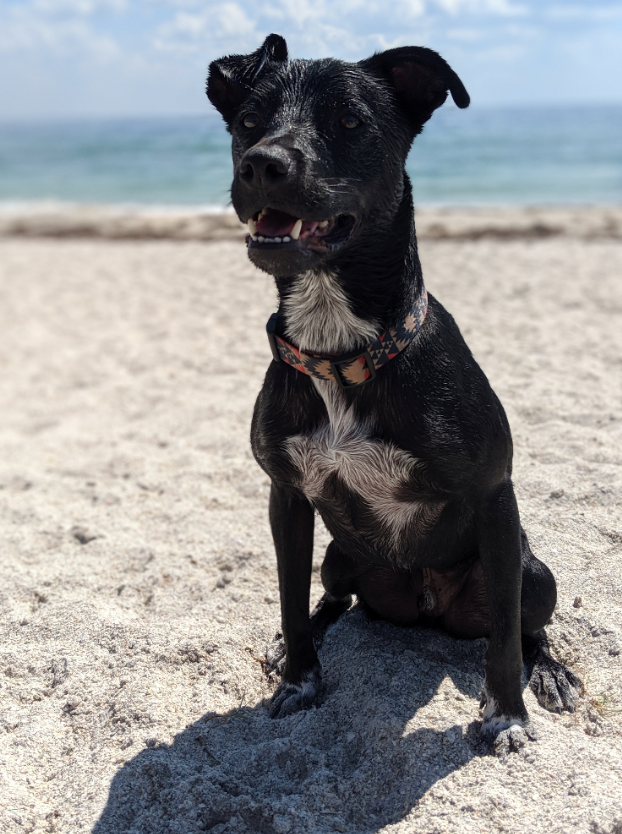
Theo moved from the US to Australia with us in 2019
Pet Import Requirements for Australia
Your pet’s requirements for import into Australia is largely determined by the country your pet will be coming from. Australia groups countries into four separate categories: Group 1 (New Zealand, Norfolk Island, and Cocos Island), Group 2 (approved rabies-free countries or territories), Group 3 (approved countries or territories where rabies is absent or well-controlled), and Non-Approved Countries. As the group number increases, the rules and regulations you must follow to import your pet also increase.
Vaccination Requirements
When traveling to Australia, you must closely follow vaccine and blood test regulations to ensure your pet meets the requirements to obtain an import permit (below). All pets need a microchip, rabies vaccine, titer test, and internal and external parasite treatment. Dogs, however, will also need additional vaccines and blood tests.
Estimated costs for vaccinations: There are at least five veterinarian visits required for a move to Australia. Depending on your own veterinarian's fees, we estimate approximately $1,500 USD for these services.
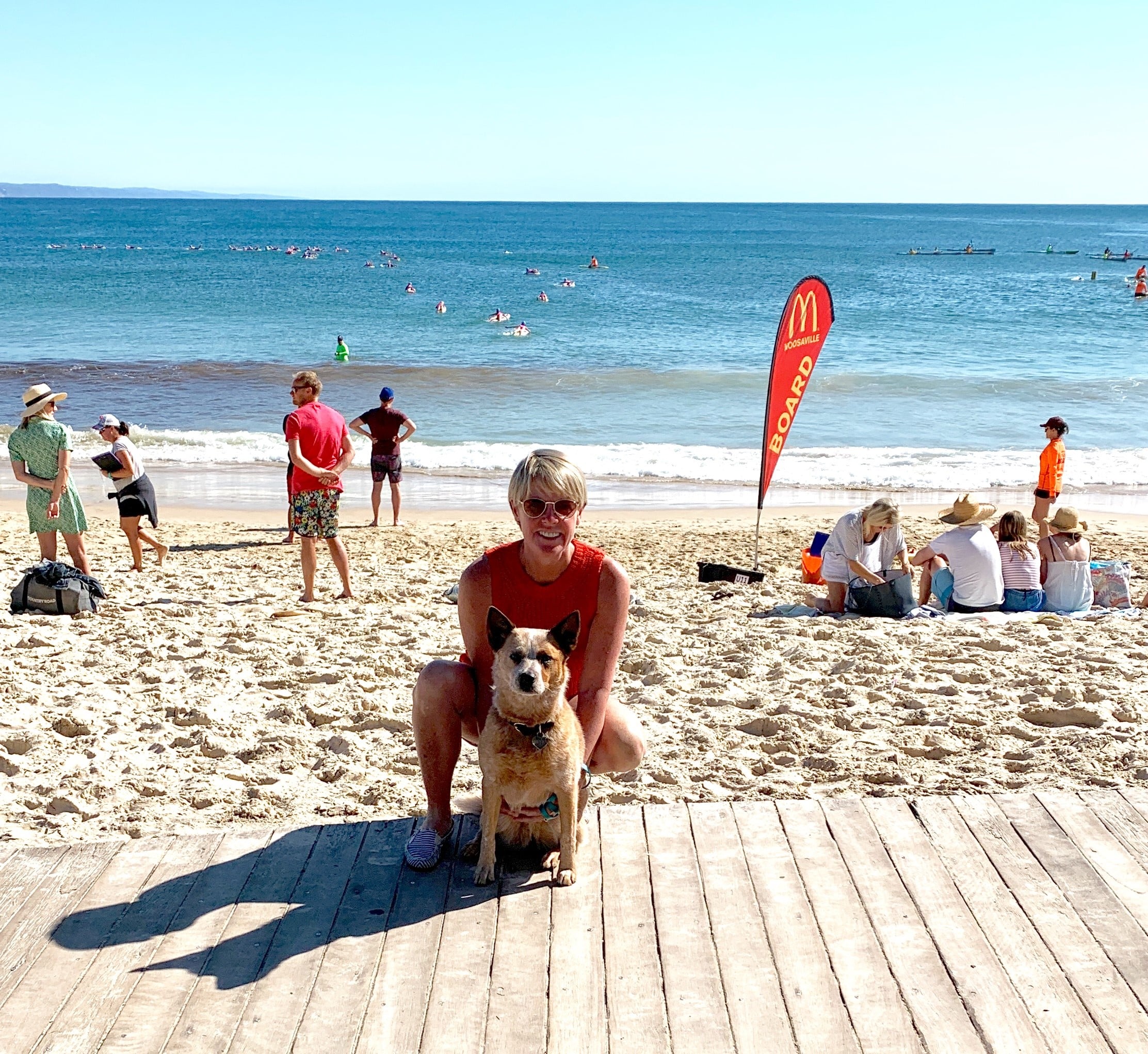
Brynn moved to Australia
Obtaining an Import Permit
After your dog or cat has passing results for the Rabies Antibody Titer Test, endorsed by a government entity, it’s time to apply for an import permit using Australia’s BICON (Biosecurity Import Conditions) System.
Once you have created an account, follow BICON's prompts to apply for your pet’s import permit. You’ll be required to upload the following documentation:
- Rabies vaccination certificate
- Rabies Antibody Titer Test results
- RNATT Declaration from your country’s government
Most import permits take 10 to 20 days to be assessed, but it can take longer in busy seasons or if you have a complicated import permit application. For example, if your pet comes from an unapproved country, there will be more steps and dates to assess. You can usually expect an additional 14 days for approval.
If you have hired PetRelocation to assist in your move, your dedicated relocation coordinator will arrange the import permit.
Estimated costs for the import permit: The Australia Department of Agriculture (DAFF) charges $480 AUD for the first pet, and $240 AUD each additional pet.
Health Certificates and USDA Endorsements
For export from the United States to any foreign country, your pet must have a country-specific health certificate issued by a USDA-Accredited Veterinarian. This health certificate must be sent to your state’s USDA office for endorsement. It must be issued within 5 days of travel and endorsed by the USDA.
Ask your veterinarian if they have the proper USDA accreditation. Failure to do so could result in extra time and expenses associated with additional appointments and testing. If you are working with a PetRelocation coordinator, we will work closely with your veterinarian to meet all complicated requirements.
Estimated costs for endorsements: There are two endorsements needed when moving pets to Australia. The first, the RNATT, costs $121 USD per pet. The final paperwork endorsement should be completed no more than 5 days prior to departure at the port USDA office, which costs $150 USD per pet.
Crate Training and Traveling as Manifest Cargo
Pets traveling into Australia may only arrive as manifest cargo. This is for your pet’s safety and accountability. “Manifest cargo allows for traceability of your cat or dog,” states the Australian Government Department of Agriculture website.
This means it’s important to start acclimating your pet to their travel crate early and practice crate training often.

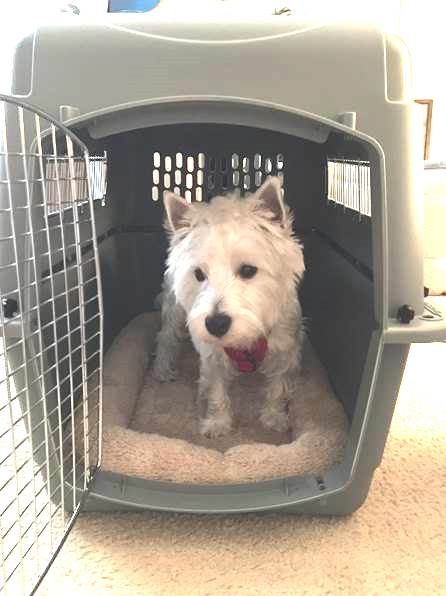
Maverick, practicing crate training before his Australia move in 2016
Estimated costs for manifest cargo airfreight: Manifest cargo flights for pets are based on dimensional weight (or how much space your pet takes up in the aircraft). For international flights, these fees can range from $1,000 USD for a Chihuahua and up to $4,500 USD for a Great Dane.
Quarantine Information
Pets arriving in Australia undergo a mandatory 10-day stay at the Mickleham quarantine station. Visitation is not allowed. As of March 1, 2023, new requirements state that dogs and cats from the United States (except Hawaii and Guam) will be eligible for 30 days in post-entry quarantine, with the possibility of reducing it to 10 days with identity verification.
.Once your dog or cat arrives in Australia, they will be transferred directly to the Mickleham quarantine station for a mandatory 10-day stay. Quarantine may seem like a scary time for your pet, especially since no visitation is allowed, but Mickleham offers great accommodations and care to pets during their quarantine stay. A specific handler is often assigned to each pet to ensure the handler can closely monitor any changes during the pet’s quarantine period and react appropriately.
To learn all about the Mickleham facility, staff, and costs, read our blog post about preparing for your dog or cat’s stay at Mickleham. We also encourage you to visit the Australia website covering this information here.
Please note: Australia's quarantine facility is at full capacity as of December 15, 2020. The earliest availability for arrival in Australia is June 2021.

Luke moved to Australia with us in 2019
Breakdown of Costs for Moving Dogs and Cats to Australia
While this is by no means an extensive list of the possible costs you could incur when relocating your pet to Australia, this chart should help you understand what you should be prepared for when budgeting for a pet’s move.
| Service | Notes | Cost (in USD) |
|---|---|---|
| Veterinarian Services | Includes vaccines, blood work, and final health certificates. | $1,500 (approx) |
| Import Permit |
Cost for first pet, required to reserve quarantine. |
$369* |
| Import Permit |
For additional pets. |
$180* |
|
Mandatory Quarantine |
Includes entry fee, stay, daily feedings, and other accommodations. | $1,320* |
|
Government Endorsements |
Two sets of paperwork need to be endorsed by the USDA. | $271 |
|
Airfreight |
It depends on the size and weight of your pet. | $1,000- $4,500 |
Moving Pets to Australia from Non-Approved Countries
If you are planning to move your pet to Australia, the country of export is an important factor. Australia's Department of Agriculture will not allow pets to arrive directly into Australia from countries declared "Non-Approved".
If your pet is currently in a non-approved country, it is still possible to move him or her to Australia. First, you should have your pet's blood drawn for a TITER or RNATT test in the country in which they currently reside. This blood sample should be sent to an approved lab for testing. Then, at least 60 days before your desired departure date for Australia, your pet must relocate to an approved country. If PetRelocation is arranging your pet's move, we suggest relocating them first into the United States. If you cannot accompany your pet to the United States, PetRelocation can arrange boarding and veterinary consultation.
Estimated costs boarding pets arriving in the United States from "un-approved" countries: Boarding one pet is $40 a day and veternary visits and consultations are estimated at $1600. The minimum cost for boarding and veterinaty accomodations for one pet is $4,000. Please be mindful this is in conjunction with other costs and services listed above.
Pets Other Than Cats and Dogs
It may not be possible to bring pets other than cats and dogs into Australia unless traveling from New Zealand. Australia has strict policies when it comes to importing other species in order to protect the current animal population and environment. It is best to check the BICON (Biosecurity Import Conditions) System to see if your pet is permitted for import into Australia.
We do recommend referencing the DAFF (Department of Agriculture, Fisheries and Forestry) website for guidance on your pet’s travels to Australia, but it is important to keep in mind that your origin country’s export procedures and nuances are not included in the information provided.
Pet Export Requirements for Leaving Australia
Leaving Australia with a pet is a much simpler process than entering. However, If you’re planning on returning to Australia after your pet travels abroad, it could be a lengthy process, and if your pet is not a cat or dog, it may be impossible. Before moving from Australia we recommend reading the rules to re-import pets on the website here.
Ready to speak with an expert about your pet’s move? Contact us to get in touch with our dedicated Australia team to plan a safe relocation for your pet!
Bringing pets to Australia?
Here’s what to know about moving pets to Australia.
Author:
PetRelocation TeamHello!
I'm considering moving to Canada next year, and I'd love to take my 2-year-old Pug with me. Been trying to get all the information, but it's a bit overwhelming! Essentially, I'd be looking at something like the following:
-Fly over in April
-Organise for my dog to come over a couple of months later
Where it gets a bit confusing is if I wanted to come back within two years, what would the process be then? Can I get him vaccinated against Rabies before he leaves AU? Anything I could do to make the process easier?
Thanks,
Shane
Hi Shane,
Great questions! The pet import process for Canada is less complicated than the pet import process for Australia, but both require careful planning.
Returning to Australia with your dog will be the harder part of the journey, as no matter what (even though you started in Australia), your dog will need to follow a series of steps very carefully and fulfill a 10-day quarantine upon arrival.
For reference, here is a look at the process via the official Australia government website. You can also learn more about bringing pets to Australia by keeping up with our Australia Pet Travel Spotlight series.
One more thing: traveling with a Pug presents its own particular challenges, so take some time to read over these tips for traveling safely with snub-nosed breeds.
Feel free to contact us if you have any questions or if you'd like some assistance arranging your move. Good luck with everything!
Pet Travel Question Details:
Name: Shane Harley
Number of Pets: 1
Pet Type: Dog
Pet Breed: Pug
From: Brisbane, Australia
To: Toronto, Canada
Bringing pets to Canada?
Here’s what to know about moving pets to Canada.
Author:
PetRelocation TeamHi PetRelocation,
Next year, my dog will fly from Thailand to Canada, and my friend will pick him up, and the dog will be sent to Australia. My questions are:
1. How long does it take to complete the process when he arrives in Canada before flying on to Australia?
2. Are there any requirements for his stay in Canada before he goes to Australia?
Thanks,
Kanthida
Hi Kanthida,
Thanks for your question -- and perfect timing! We have recently been discussing Australian pet travel on our blog and, earlier this week, published a post offering directions for people moving pets from a non-approved country. Take a look to learn more about the steps, but we're happy to answer your questions here, too briefly.
Your dog will need to stay in Canada for at least 30 days. While he's here, you'll need to do a few things, including repeating the rabies vaccination, double-checking all other vaccinations, undergoing external parasite treatments, and securing all relevant paperwork. Please find more about these instructions here.
If you need some information about the first leg of your dog's journey, here is a look at the pet import requirements for Canada as well as a link to a few frequently asked pet travel questions.
We encourage you to take some time to read through this information and then let us know if you are interested in hiring some assistance with your move.
Hope this helps, good luck!
Pet Travel Question Details:
Name: Kanthida
Number of Pets: 1
Pet Type: Dog
Pet Breed: Beagle
From: Canada
To: Australia
Bringing pets to Canada?
Here’s what to know about moving pets to Canada.
Author:
PetRelocation TeamHi PetRelocation,
Is it possible to move my dogs from Colombia to Australia? I understand it cannot be done directly, but can I take them to the United States, spend some time there, and then travel to Australia?
Thanks,
Lina
Hi Lina,
Thank you for your inquiry! Yes, it is possible to eventually bring your dogs to Australia after spending time in an approved country.
For more details about how this would work, look at this overview of pet travel to Australia from a non-approved country -- part of our recent Australia Pet Travel Spotlight. We typically recommend the United States as the "in-between" country because of its relatively simple pet import rules.
Note that this process will take at least six months to carry out, and it will not be inexpensive, but it's possible to do. We recently helped Pierre the French Bulldog move from Brazil to Australia -- read his family's happy reunion story for an idea of what to expect from a process like this.
If you'd like to learn more about our door-to-door services and how we can assist with your dogs' move, please contact us for a pet travel consultation. You're also welcome to look over these frequently asked pet travel questions for tips on how to start preparing for international pet travel.
No matter how you decide to move forward, good luck with your travels!
Pet Travel Question Details:
Name: Lina
Number of Pets: 2
Pet Type: Dogs
Pet Breed: Mixed Retriever, Medium Size (50 pounds)
From: Colombia
To: Australia
Bringing pets to Australia?
Here’s what to know about moving pets to Australia.
Author:
PetRelocation TeamHi PetRelocation,
Can I send my cat alone on a plane from Australia to the USA and have a family member pick it up? Is there any quarantine in the USA when the cat arrives?
What are the requirements for sending a cat from Australia to the USA? What are the estimated costs?
Thanks,
Laurel
Hi Laurel,
Thanks for your questions! Yes, your cat can travel unaccompanied from Australia to the United States. They will go via cargo, preferably on a pet safe airline (we often use Qantas for our pet clients).
Good news: there is no quarantine upon arrival in the United States. The U.S. is one of the more straightforward countries regarding pet import rules, and all that you need is listed here (primarily an International Health Certificate and proof of an updated rabies vaccine).
As you prepare for your cat's relocation, you'll also want to spend some time on crate training (ensuring you've purchased an airline-approved cat travel crate) and refer to your vet with any health-related questions or concerns.
Let us know if you'd like to connect to a pet travel consultant to discuss how to arrange your cat's move, Laurel. We specialize in taking over these responsibilities so that you can focus on other things! Costs will vary depending on a few factors, so once you contact us, we can start building a quote for you.
Either way, good luck with everything, and thanks again for the question.
Pet Travel Question Details:
Name: Laurel
Number of Pets: 1
Pet Type: Cat
Pet Breed:
From: Australia
To: United States
Bringing pets to Australia?
Here’s what to know about moving pets to Australia.
Author:
PetRelocation TeamHi,
I am inquiring on behalf of my daughter, who lives with her dog in Singapore. She is going with her dog for two years to Ningbo, China; from there, she will go to Adelaide, Australia.
As I understand, the quarantine period in Australia is 180 days. Is there any way that this quarantine period can be shortened?
Thanks,
Bernett
Hi Bernett,
This is a great question! The import requirements for pets going to Australia are certainly complicated (and even intimidating), and we're happy to shed some light on how things work.
First, please inform your daughter that pets cannot travel directly from China to Australia. Australia is very strict because it's a rabies-free country, and direct entry isn't possible from countries with higher rates of rabies. The dog may come directly from Singapore, but not China, unfortunately. Please refer to the official Australia website here for more information.
Essentially, your daughter must return to Singapore (or another approved country) for several weeks before the move, or the dog will need to stay in Singapore altogether.
For more detailed information, look at our comprehensive guide for pet travel to Australia. As you'll see, though the process can be long, it's not impossible. As for quarantine, the 180-day period only includes ten days when pets must remain in an onsite quarantine facility in Melbourne. The preceding days consist of fulfilling the rabies vaccine requirements, parasite treatments, etc., and pets stay home (in the country of origin) with their owners during this time.
Just let us know if you have further questions or want to enlist our help with your dog's move. We're happy to assist with your daughter's relocation to Australia!
Pet Travel Question Details:
Name: Bernett
Number of Pets: 1
Pet Type: Dog
Pet Breed: English Springer Spaniel
From: China
To: Adelaide, Australia
Bringing pets to Singapore?
Here’s what to know about moving pets to Singapore.
Author:
PetRelocation TeamTopic:
Air Travel, Airlines, Airports, QuarantinePet:
Cats, DogsCountry:
Australia, China, SingaporeThe word "quarantine" often strikes fear into the hearts of pet owners, but in reality, these facilities are a necessary and non-scary part of an international relocation (see our recent coverage of Chunk the French Bulldog for a good example).
Take this case, for example. We recently moved four pets to Australia, a rabies-free country with stringent pet import requirements. Dogs Enid, Ruby, Tilly, and their cat cohort Lulu have to spend a few weeks in a quarantine facility, but the good news is they're together. Their owners also have the chance to check on them thanks to the facility's practice of regularly posting online pictures of the pets being boarded.
Cheers to Dog Walks for offering this innovation, as any pet owner understands what a difference pictures can make. Quarantine facilities are often located a fair distance away from home and have limited visiting hours, making it hard for people to spend much time with their little critters. Checking in on your pets from your smartphone or laptop can make the separation period much easier, and we won't be surprised to see this trend expand.
Though the dogs' mandated departure dates are different due to varying rabies requirements, their owners decided to make some adjustments so that no one would be left all alone (awwww....). Check out the pictures of these world-traveling pets -- looks like they're having a pretty good time!
Feel free to share any quarantine stories you may have, and keep following our blog for more Pet Move Spotlights.
Author:
PetRelocation Team
Traveling to the UK with a pet can be tricky, so we're taking a close look at the process in our UK Pet Travel Spotlight Series. We've previously tackled topics like the UK Import Process From Unlisted Countries, and now we'll look at a few common misconceptions about pet travel to the UK.
Read on to set the record straight about what it takes to travel to the UK with pets.
Myth #1: Pets must go to quarantine upon arrival.
Many pet owners assume that if they travel internationally, their pet will need to spend time in quarantine upon arrival, but in reality, only a few countries impose this restriction. When it comes to the UK, if all country import rules are properly followed and if all paperwork is completed correctly, there will not be a quarantine. Note that there is a very specific arrival process for pets entering the UK, but this typically takes a few hours and pets can go home after its completion.
Myth #2: International pet travel is dangerous.
International pet travel is an understandably overwhelming process, but it can be quite uneventful with the right knowledge and assistance. Choosing a pet-safe airline, focusing on pre-travel crate training and hydration, and working with a pet travel expert can all help to make the transition to the UK safe and smooth. Here's a closer look at why international pet travel is safer than ever.
Myth #3: All pets need a rabies titer test before traveling.
A titer test is a blood test administered to a pet after the rabies vaccine is given to find out if the vaccine was effective. It is required for some international pet travel (but not all). If you're coming from what the UK considers an 'unlisted' country, your pet will need a titer test, but if you're coming from a listed country or another EU country, the titer is not necessary, and the preparation process will be quite a bit shorter. Check with the UK's Department of Environment, Food and Rural Affairs (DEFRA) to determine how your country of origin is classified.
Myth #4: Pet owners must travel on the same plane as their pets.
Even when their pets travel via cargo, many pet owners think it's important to go on the same plane as their pets. In reality, this isn't necessary, and it's often much easier to plan your own and your pet's flights separately. The one thing to note is that pet owners must travel within five days before or after their pet. (This is a specific UK requirement to deter commercial pet shipping.) Feel free to ask your pet travel agent if you have any questions about this.
Myth #5: Hiring professional assistance or paying more money means a "rush move" can be carried out.
Since pet travel is far more complicated than just booking a flight, we advise allowing at least 30 days to arrange the details correctly. If you live in the EU or a country categorized as "listed," 30 days may be enough time to plan a pet move to the UK. If you live in an "unlisted" country, however, you should realistically allow at least four months of preparation because your pet will need a rabies titer test and must fulfill a three-month waiting period from the time of the test. Unfortunately, these cases have no shortcuts, but travel experts can help you avoid additional delays and complications.
This is Part Four of PetRelocation's five-part UK Pet Travel Series. Check back soon for more travel information and contact us if you're looking for assistance with your upcoming pet relocation to the UK!
Banner Photo: Amaya & Laurent/Flickr
Bringing pets to UK?
Here’s what to know about moving pets to UK.
Author:
PetRelocation Team
Planning a pet relocation to Australia is not the easiest thing you'll ever do, but if you know where to look for help and start organizing your pet's details well before you plan to move, you can accomplish the impressive globetrotting feat of bringing the whole family safely to your new home Down Under.
To help, we're looking at the top Australian pet travel topics and offering expert pet travel advice. If a pet move to Australia is something you're considering or have already started putting together, these resources will no doubt come in handy.
Do you have questions that you'd like answers to now? Contact us today for a consultation.
Part One: Australia Quarantine Update
A 10-day quarantine is required for all pets entering Australia. Learn more about quarantine procedures in our Australia pet quarantine update and guide.
Part Two: Discussing the Costs of Australia Pet Travel
Unfortunately, moving pets to Australia is a bit more expensive than expected. Here's a look at the factors (including airfare, quarantine, and vet visits) that make this the case, and we also offer a few tips for controlling these costs where possible.
Part Three: Traveling From a "Non-Approved" Country
Australia's rabies-free status makes it tougher to bring pets here, and unfortunately, it's impossible to travel directly to Australia from certain countries. Find out who is affected by this rule and how to get around it by transiting through a third country.
Part Four: 5 Reasons to Hire Professional Assistance for a Pet Move to Australia
Pet travel to Australia can present various challenges, and it's especially important to have a backup plan in place when carrying out this journey. Here's why it's a good idea to enlist the help of professional pet shippers instead of handling it on your own.
Part Five: Australia Pet Travel Stories
Even though it's a complicated process, hundreds of pets travel safely to Australia yearly. Want some proof? Meet some pets and pet owners who have made the journey and learn what they learned.
Bringing pets to Australia?
Here’s what to know about moving pets to Australia.
Author:
PetRelocation Team
In addition to requiring a long flight to get there, Australia is also a challenging place to move a pet because of its strict import rules. That's why we're taking the time to spotlight this popular relocation destination and will draw on the advice of experienced pet relocation specialists to offer our guidance in an Australia Pet Travel Spotlight series.
Since Australia is a rabies-free nation, one of the requirements for pets arriving in the country is a mandatory 10-day quarantine. In the past, pet owners had the choice between a few different quarantine facilities, but in the future this will change and all pets will need to finish up the import process at a new, consolidated facility. Enjoy Part One of our Australia Spotlight series, and if you need help now, contact us for a pet travel consultation.
Australia Pet Travel Spotlight: Updated Guide
Australia's status as a rabies-free nation imposes strict biosecurity measures to maintain its status, making pet relocation a carefully regulated process. In our ongoing Australia Pet Travel Spotlight series, we draw upon the latest insights from pet relocation specialists to guide you through the updated requirements and facilities.
Current Status of Australia's Quarantine Facilities
As of our latest update, the Post Entry Quarantine (PEQ) facility in Mickleham, Victoria, remains the central point for pets entering Australia. This consolidation aims to streamline the import process, ensuring all animals receive consistent and high-quality care upon arrival.
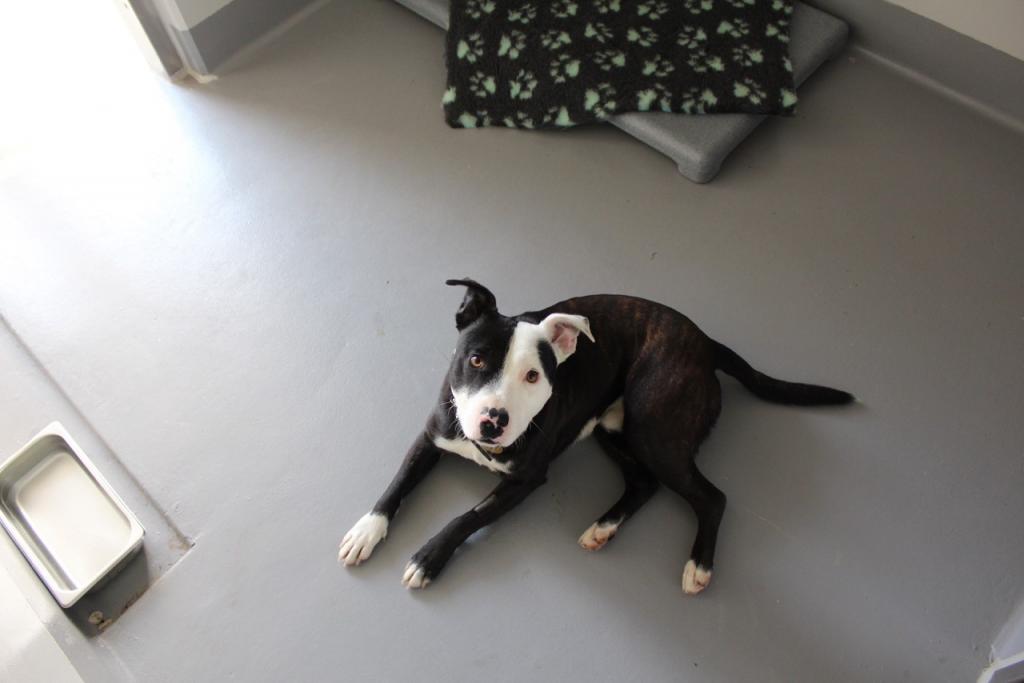
One of the PEQ's first visitors/photo via the PEQ website
Key Updates on the PEQ Facility in Mickleham, Victoria:
- Operational Status: The Mickleham facility has successfully phased out other quarantine stations, such as Eastern Creek in Sydney and Spotswood in Melbourne.
- Facilities and Care: Boasting climate-controlled kennels and exercise yards, the PEQ ensures that pets are housed comfortably, with underfloor heating and ample space for exercise.
- Capacity: The facility can accommodate up to 240 cats and 400 dogs, ensuring a place for your pet during the mandatory quarantine period.
- Booking Process: Online booking remains the standard procedure, facilitating a smooth transition for your pet from arrival to quarantine.
Find out more about the PEQ here, and if you're new to pet travel, take a look at our essential pet travel tips.
Planning Your Pet's Relocation
- Preparation is Key: Familiarize yourself with the latest import requirements and start the preparation process well in advance. This includes ensuring all vaccinations are current and obtaining the necessary health certifications.
- Professional Assistance: Considering the complexities of pet travel, engaging with a professional pet relocation service can significantly ease the process. They can assist with paperwork, flight bookings, and transportation to and from the PEQ facility.
- Quarantine as a Positive Step: Feeling apprehensive about the quarantine process is natural. However, the PEQ facility's transparent and high-standard care should reassure pet owners. Facilities are designed to minimize stress and provide a comfortable environment for your pet.
Debunking Myths About Pet Quarantine
It's important to address common misconceptions about pet quarantine. Our guide, "Top 5 Myths About Pet Quarantine," offers insights into the reality of the process, highlighting the safety, care, and transparency involved.
-
Look at these Top 5 Myths About Pet Quarantine to learn more.
This is Part One of PetRelocation's five-part Australia Pet Travel Series. Check back soon for more updates and contact us if you have questions about moving your pet to Australia.
Bringing pets to Australia?
Here’s what to know about moving pets to Australia.
Author:
PetRelocation Team
Now that we've discussed the most important parts of pet travel to the UK in our UK Pet Travel Spotlight Series, hopefully, the process seems a little less daunting and a lot more manageable.
To wrap up the series we'd like to share a few stories from pet owners who have already tackled the UK pet import process (and who have shown it can be done safely and without too much stress). It always helps to hear from someone who has done it before, so take time to soak in this advice on various topics, experiences, and photos.
Enjoy this real-world UK pet travel advice, and if you're ready to enlist some help and get your pet's move started, contact us for a consultation today.
Navigating The UK's Tough Rules:
"I know from living there before that they are very strict with customs and laws regarding dogs, so I knew I needed help to ensure everything was in order. One mistake can cost you quarantine time, and I really did not want that, so I knew from my last experience with PetRelocation that they could get the job done, and I wouldn't have to stress myself stupid." Read More
Travel Crates & Crate Training:
"We have been very satisfied with our two cats' move from Moscow, Russia, to London, UK. It was well prepared (crates delivered before so they could get used to them), all executed in one single day and with care (keeping the two crates facing each other so the two friends did not lose sight of each other)." Read More
Move Day:
"We left sunny New Mexico and were driven to Denver, Colorado, where we boarded overnight. The following day, we took a 10-hour flight direct to London, England. We arrived after breakfast, cleared customs in a few hours and were in our new town of Bristol in time to eat a large dinner and curl up for the night." Read More
"We received updates throughout the day and then he arrived at the front step of our new home -- on time and understandably anxious from all of the travel, but otherwise completely fine. I kept Coco in a quiet room for the remainder of the day and then he settled in ever so well." Read More
Hiring Help With Your Pet's Move:
"They worked with me to find the most cost-effective move, and they were incredibly flexible with constantly shifting travel dates. They were so helpful with all the paperwork that it was nearly effortless on my part. My cats were provided top-notch care on the day of travel and arrived safe and sound. Simon and Margaret are so happy to be with me again and enjoy their new home in Britain." Read More
"For travel to the U.K., there is a very tight timeline that must be followed to avoid quarantine. One part of this is a USDA form that can only be sent a few days before travel and must be certified before the trip. When my pet travel specialist Linda realized that Peach’s forms were caught in a backlog, she contacted the agency and ensured that we made the deadline." Read More
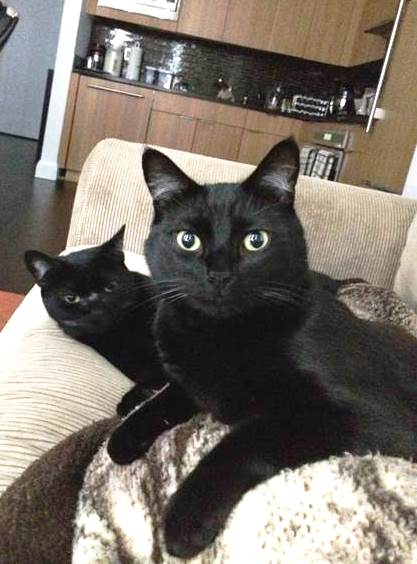
Settling In:
"Holly and Geoff seemed completely unphased by the whole experience! When they arrived at their new home, they ate food, stretched their legs, and were ready to sleep. The following day, it was as if they had never been anywhere else! It was certainly a worrying time for us as parents (especially when the online cargo tracking stated "Cargo Missing" for 40 minutes!), but we were very happy with having them back with us." Read More
"Everything went very well with Betty's move, and she has settled in brilliantly. It was easy to pick Betty up from Animal Reception, and there were no issues. Surprisingly, she has not had jet lag and has been excited to begin exploring London. It feels like our family is complete now. Thank you so much for all your help organizing this move. I would not have been able to do this on my own. If, and when, we move back to the US, we will use your company again." Read More
Life in the UK:
"The dogs have their nose to the ground from the moment we leave the house. The weather is in the 60s, and they are allowed off lead in the valleys and on the beach. They seem to be so joyous when we walk. There is much more freedom on walks with designated off and on-leash spots. There are rolling hills, sea views, and cold breezes. They are so tired at night they put themselves to bed around six. Dogs are allowed everywhere in Hastings: pubs, restaurants, coffee shops, inside and out. They're with us all day and have socialized really well. I love that I am always with them." Read More
"The girls are thoroughly enjoying their big new garden, have been to the seaside for the first time, and have even been off leash!!" Read More
Thanks to these globetrotting pets and pet owners for sharing their incredible experiences with us! Take a look at the rest of our UK Pet Travel Spotlight and contact us if you need help arranging your pet's upcoming move.
Banner Photo: Dan Brady/Flickr
Bringing pets to UK?
Here’s what to know about moving pets to UK.
Author:
PetRelocation Team
After starting our Australia Pet Travel Spotlight with a look at the Australia quarantine process, we now turn to another key issue: costs. Australia tends to be more expensive than many other countries in importing pets, but the more you know upfront, the more you can prepare and manage some expenses.
Read on to find out why Australian pet travel isn't cheap, and learn some tips for lowering costs. Want to discuss these issues in more depth with one of our Australia Specialists? Contact us.
(Note: All pricing estimates in this article are geared towards pets originating in the United States.)
Vet Visits
Since Australia is a rabies-free country, pets also need a rabies titer test in addition to an up-to-date rabies vaccine. This is a blood test done two to three weeks after the rabies vaccination is given, and the test must be sent to an approved lab.
Additionally, dogs traveling to Australia must be vaccinated against Leptospirosis and Canine Influenza Virus. When all vet visits and testing fees needed for Australia are added up, most pet owners spend around $1,000 USD.
Import Permit
When traveling internationally, pets must secure an import permit, allowing them legal entry. For pets coming from the United States and going to Australia, the necessary import permit will start at around $400 USD for the first pet, and costs will increase with each additional pet.
Government Endorsements
Often, proof of required vaccines must be verified with a government endorsement. In this case, USDA endorsements for pets going to Australia must be secured during the preparation process and once again at the exit port (most likely LAX). These endorsements will vary based on the number of pets but will likely exceed $200 USD.
Pet's Plane Tickets
Airlines calculate your pet's air freight based on the weight/size of the crate, so the bigger your pet, the more expensive the international ticket will be. Generally speaking, you can expect to spend at least $1,100 USD for cats and small dogs and significantly more for extra large dogs from Los Angeles to Australia. Also, unless you live in L.A., you'll need to arrange travel from your origin city, so be sure to calculate the cost of that additional plane ticket from Boston, Kansas City, or wherever you may live.
Pick-Up & Airport Check-In
The airport drop-off and check-in process is especially complex for Australia due to the specific timing of pet flights and time zone issues. For example, when departing from the United States, a night of boarding in Los Angeles is usually needed, along with a final vet check and check-in at the airport.
If delegated to a pet transportation service, these transit arrangements (pick up at the residence/starting point, transfer to the boarding facility, pick up the next day for a final vet visit and check-in) will probably cost a few hundred dollars for one pet.
Customs Clearance & Quarantine
One of the biggest factors in making Australia a pricey destination is the country's quarantine requirements. All pets must fulfill a minimum 10-day quarantine upon arrival, and the fees currently start at $1,400 USD. Remember, no matter where you're coming from, this quarantine is necessary, and depending on the date you'll be traveling, it's important to check the status of the quarantine facilities and arrange accordingly. As we discussed in our Australia quarantine overview, after the situation is in flux for a while, eventually, all pets will pass through one consolidated quarantine facility in Mickleham, Victoria.
Personalized Planning & Assistance
Because there are so many moving parts and precise details involved with planning a smooth pet relocation to Australia, many pet owners decide to hire professional assistance with their move to focus on their own logistics and leave their pet's details to an expert. Also, if something goes wrong (a flight delay or a paperwork snafu, for example), it's invaluable to have a pet travel expert on hand to deal with the situation and find a solution as soon as possible. Hiring help makes an expensive process even more pricey, but most people find this addition well worth it.
Now, we'll get to what you can do to trim some of the costs of pet travel to Australia. Unfortunately, things like government endorsements and air freight are not negotiable, but there are a few areas where you can possibly save a few dollars.
3 Ways to Control the Costs of Your Pet Move to Australia:
-
Plan vet visits carefully to keep them to a minimum. If you read over the requirements carefully early in the process and understand exactly what you need to do, you're less likely to make mistakes that will cost you money. Even one extra vet visit or needing to redo a form can add up to a lot of money, so plan to avoid paying more than you have to.
-
Buy the correct travel crate and look for a used one if possible. Once you've measured your pet and found out what size airline-approved travel crate you'll need, search eBay or Craigslist for possible bargain buys. Even if you can't find one, checking with an expert to make sure you have the right travel crate can prevent the stressful and costly mistake of needing to purchase another one at the last minute. Again, advance prep work makes all the difference and can often save you money.
-
Handle some of the transportation yourself. Getting your pet to Los Angeles on your own and picking your pet up from quarantine for the eventual ride home will shave a little off the overall price of your pet's move. Feel free to discuss various options with your pet travel specialist to determine your choices.
This is Part Two of PetRelocation's Australia Pet Travel Spotlight series. Check back soon to learn more about this process and contact us if you have questions about moving your pet safely to Australia.
Bringing pets to Australia?
Here’s what to know about moving pets to Australia.
Author:
PetRelocation Team
So far, in our Australia Pet Travel Spotlight series, we've discussed a couple of the big challenges associated with moving pets here -- Australia pet quarantine and why it can be expensive to move pets to Australia.
You may have another big hurdle to overcome, depending on where you're starting. Direct travel to Australia is not possible from countries categorized as "non-approved," so if you're starting in a place not considered rabies-free or low rabies, you'll have to take additional steps before bringing your pet to Australia by first traveling to an approved country and completing some requirements there.
Though not impossible, this can be a confusing process for any pet owner to understand. Read over these frequently asked questions for further explanation, and contact us if you're ready to start working on your move plan.
Is my country approved or non-approved?
Here is a list of approved and non-approved countries for pet import to Australia.
My country of origin is not approved. What do I do now?
-
At this point, you'll want to find out as much as you can about Australia's rules and regulations to start building a feasible plan and timeline.
-
Consider reaching out to a pet travel professional. With so many details involved and so much at stake, you may want to hire someone to guide you to ensure you avoid mistakes and delays.
-
When choosing the approved country you'll need to travel through, consider that country's import rules and the logistics that might work best. With cases like this, we often recommend importing your pet to the United States to complete the requirements due to its relatively simple import rules.
How long will this process take?
Realistically speaking, the preparation process will take at least 6 months and probably longer once your interim travel is factored in. The earlier you start to plan and understand all the moving parts, the smoother the process will be.
What kinds of challenges should I prepare for?
The steps of the Australia pet import process must be carried out correctly and according to the right timeline. For example, pets must be implanted with a microchip before any other steps begin. You also want to make sure your vet paperwork is properly filled out, dates and microchip numbers are accurately recorded, and you'll need to book your quarantine reservation at the right place for the right time (here is more information about Australia's quarantine facilities).
How much will this cost?
Costs will vary depending on several factors, but you must add up all plane tickets, vet visits, government endorsements, boarding, and quarantine fees. Here is a look at the costs of Australian pet travel. Adding another section to the trip (flying to the United States from your home country, for example) will add to the overall cost, of course, so be sure to factor those expenses in as you plan your budget.
Will my pet be safe?
This is a two-part international journey that will involve several hours in the air and culminate in 10 days of quarantine, so we do recommend talking to your vet about any concerns you have and perhaps asking for an in-depth health screening to identify any underlying issues that might come into play. Generally speaking, fit pets make better travelers, hydration is important, and it is essential that you choose a pet friendly airline for each leg of the trip.
As with all pet travel, there are some risks involved, however in our experience traveling to Australia from a non-approved country is safe for pets (especially under the guidance of pet travel professionals). Here's a real-world example of two dogs and a cat who moved from Brazil to the US to Australia and handled the trip quite well, and here is a closer look at why pet travel is much safer than most people realize.
This is Part Three of PetRelocation's Australia Pet Travel Spotlight series. Follow along for more updates, and contact us if you have questions about moving pets safely to Australia.
Bringing pets to Australia?
Here’s what to know about moving pets to Australia.
Author:
PetRelocation Team
So far, our Australia Pet Travel Spotlight series has addressed the various challenges of planning a smooth pet move to Australia. The truth is that this is a time-consuming and detail-oriented process, and once they've learned what this endeavor will entail, many pet owners decide to hire professional assistance in one form or another.
Specifically, here's why hiring a pet travel professional to help with your pet's move to Australia will save you time, stress, and even money.
1. Timing
Moving pets to Australia takes at least 180 days (and often more). Not only are there several steps that pet owners need to complete, but these steps need to be carried out in a very particular order. Even a small mistake could throw off a pet's entire timeline and cause a significant delay (which could easily make the move more stressful and expensive), so it's easy to see why many make the choice to pass along the planning responsibilities to someone with experience moving pets. Also, because the timeline for moving a pet to Australia is so long, many of our clients must leave for Australia before their pet is ready to depart. Most of our clients leave pets with a trusted friend or family member to complete the remaining vet work before their pet can reunite with them in Australia. Our team can easily communicate with both you & your caretaker throughout the process - keeping everything on track!
2. Routing
When starting in the United States, most pets make their way through California (part one), where they can complete the export requirements and catch their flight to Australia (part two). An overnight is required because a final vet visit and additional USDA endorsements are needed, making this a particularly lengthy travel process. Especially if you're unavailable because you're dealing with your own trip, leaving these steps to a pet travel agent can make life much easier.
3. Rabies Titer Test
If you've reviewed the pet import requirements for Australia, you've seen that a rabies titer test is required. This isn't a big deal in itself, but the test must be done at the right time and in the right way. For example, the blood test must be done at an approved lab by an accredited veterinarian. Read more about obtaining a rabies titer test in preparation for your pet's journey to Australia, and you'll start to see why it might be preferable to let an expert handle such a sensitive process.
4. Additional Vaccines and Quarantine
In addition to rabies, pets must be up to date on other vaccines and treatments & must undergo a series of blood tests within weeks before export. Most treatments are easy for your vet to obtain. However, the timeline is very strict, which can be tough to navigate. Working with a pet travel specialist means having access to their knowledge and expertise, and PetRelocation will be able to promptly facilitate the required vet work.
All pets arriving in Australia must fulfill a minimum 10-day quarantine at an official quarantine station. The pet quarantine process in Australia is in flux, and reservations must always be made before your pet's trip. This is an extremely important part of the trip, and it must be handled correctly -- again, an expert is better equipped to ensure things go smoothly.
5. The "What If" Factor
Because there are so many details to attend to with pet moves to Australia, there are more chances for something to go wrong. As you deal with your own move logistics, it may not be possible to handle anything unexpected that arises, for example, a flight delay or paperwork snafu. Pet travel professionals are trained to deal with anything that arises and will already have a contingency plan in place just in case.
This is Part Four of PetRelocation's Australia Pet Travel Spotlight series. Stay in touch for more updates and contact us if you need help moving your pet to Australia. We'd be happy to assist!
Bringing pets to Australia?
Here’s what to know about moving pets to Australia.
Author:
PetRelocation Team
Now that our Australia Pet Travel Spotlight series has covered the challenges of pet travel to Australia -- most recently with why you might want to hire professionals to handle your pet's move -- it's time to move on to the fun part. Thousands of pets safely move to Australia each year, and we've been lucky enough to meet many of them while handling the details of their globetrotting adventures.
Read on to hear from some of our favorite Australian pet travelers who have taken the time to share their stories, and be sure to contact us if you're ready to get started with your own move.
Enjoy!
Common Australia Pet Travel Concerns
"The Australian regulations for importing animals are very complicated and, if not fully complied with, instead of ten days quarantine it becomes six months. I was worried about my two little Chihuahuas, litter sisters who have never been separated... But we did it all." Read More
"Taking our 10-year-old Labrador to Australia with us was never really a question, but his safety was a huge concern." Read More
"Migrating with pets from Brazil to Australia is definitely a difficult process, to say the least (6-7 months in 3 different countries: Brazil for five months, USA for 50 days, and Australia for ten days in quarantine), but leaving them behind was never an option, so I decided that if I was really going to do this, I should do it properly." Read More
Pets & Quarantine
"I was kinda worried that he would get depressed in quarantine because it does happen, but he didn't seem too upset or doesn't look like he's lost too much weight! He's happy overall to be here like he can't believe he's with his mom again!" Read More
Hiring Help With Your Pet's Move
"I left Canada in November of 2014, but Kuro could not leave until early February 2015 due to his 180-day waiting period. My son cared for him during my absence, and my sister took him to his vet appointments. During this time, my pet travel specialist was also in constant contact with my sister regarding Kuro's upcoming travel." Read More
"Throughout this period, Linda (my pet travel specialist) communicated with our family regularly. Nothing was too much effort, Linda was generous with her time and went out of her way to ensure we were all good, Chester’s host family and local vet were in the loop and everything stayed on track." Read More

"I Googled PetRelocation, and all the anxiety went away in a minute. I called them, and they walked me through it, and I was so happy to have such a professional, insightful team take over Dudley's travel. I can only say that he arrived three days ago and is so happy and relaxed. That is saying a lot for Sir Duds!!" Read More
Life With Pets in Australia
"Some beaches allow dogs and some don't, and certain beaches have restricted areas for dogs. There are many veterinarians here and many pet stores. I can buy the same dog food here that Kuro ate in Canada, although there are many different brands, as well. They have the same flea control and worm pills, but overall, the prices are higher (about 1/3 higher than in Canada). But then again, Australia is more expensive for everything than Canada was!" Read More

"Plonky is getting used to the good life in Sydney. The weather has been glorious. We have a beautiful and large harborside park near our apartment where dogs are allowed off leash, so she is getting to know all the other doggies, figuring out the new sights, and sniffing the new smells." Read More
Bonus: Check out this video about Chester's move -- after a paperwork snafu, his flight was delayed, but ultimately, this sweet dog made it to Australia just fine.
Thanks to all of these Australia pet travelers for sharing their incredible experiences with us! Catch up with the rest of the PetRelocation Australia Pet Travel Spotlight series and contact us if you're ready to start planning your pet's move to Australia.
Bringing pets to Australia?
Here’s what to know about moving pets to Australia.
Author:
PetRelocation Team
Thanks for following along with our North America Pet Travel Spotlight! Now that we've covered the finer points of North America and domestic United States pet travel by discussing cargo travel, breed restrictions, and more, it's time to look at some real-life examples of success.
Find out what these pet travelers had to say after they completed their moves -- their stories will hopefully illustrate that the hard work of planning a pet move is well worth it once your pet is home safe with you where they belong.
Driving Vs. Flying
"I was originally thinking about driving the dogs across the country myself because I was worried about the dogs riding in the belly of an airplane. My husband explained that the dogs would be just as stressed or maybe more riding in our mini-van across the country, and instead of being stressed for 6 hours on the plane, they would be stressed for at least 5 days in the van. When he put it that way it made sense to fly them but we had no idea how to go about doing that." Read More
"Originally, we thought we would just take our Beagle (Jack) and Calico cat (Kelly) with us on our road trip. But soon the thought of two weeks in a pickup truck, hauling a U-haul trailer, with two pets, seemed unappealing and impractical!" Read More
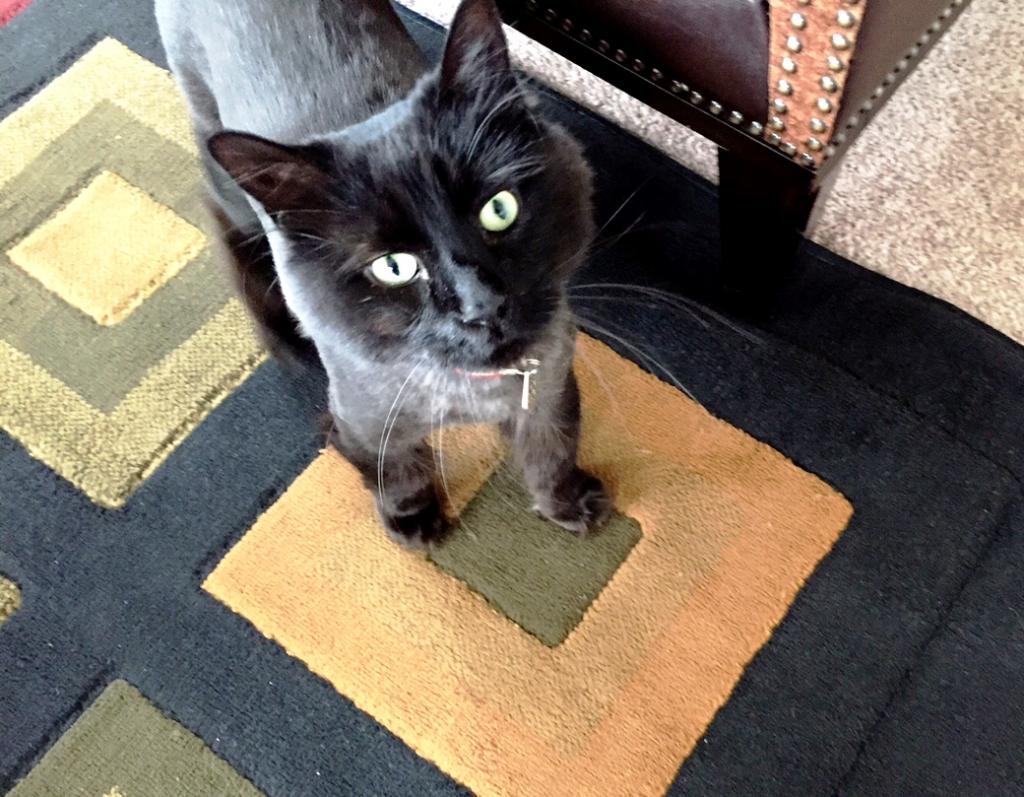
"Big Dog, Big Plane"
"Hercules, my golden retriever, is a tall dog and requires the biggest crate made. Unfortunately, a lot of airlines won't take that size crate anymore, and others only take it on certain aircraft types. I could not find a way to get my dog back to Dallas from Puerto Rico after spending a few years there." Read More
Hiring Help
"When I FINALLY finished school and received a job offer across the country, I needed to find a safe way to transport my beautiful mutt to our new destination. Cue PetRelocation. Not only did they find the best flight route for Zoes, but they helped me to feel more at ease about Zoey traveling by flight." Read More
"The move went amazingly well. Jackson was dropped off and picked up from the airport, and when I saw him, he was his cheerful self. It's been six months since the move, and everything is perfect." Read More
"So in a nutshell, I called PetRelocation and gave them my information, they booked the flights for our dogs, made all the arrangements, transported them to and from the airport and we had our dogs with us again in no time with ZERO stress. It was amazing." Read More
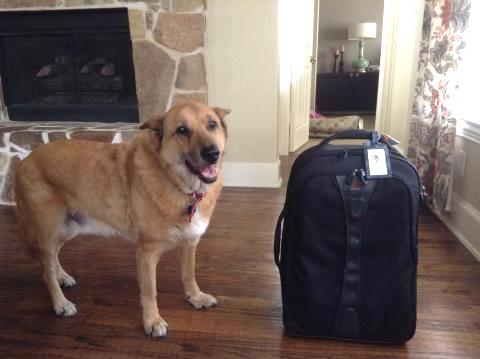
"The day of the relocation, Sadie was picked up at my parent’s house and driven to Newark. Her flight from Newark was delayed, making her miss her connecting flight in Denver. Sarah, the client care specialist, called me immediately to let me know what was happening. It was very helpful to have up-to-date information." Read More
Traveling to Canada
"I had moved to northern Alberta in January and could finally bring my cats up around March three years later. I had no clue about the process and tried asking all two of our airlines how I get them up here." Read More
Traveling to Hawaii
"Hawaii is also a rabies-free zone, and to maintain this they have a very strict screening policy and a 5-page checklist of requirements that must be met before your pet arrives. The penalty for missing or messing up a step is having your pet quarantined for 120 days, which was a very intimidating and sometimes overwhelming process to me, especially when I was trying to sort out all the logistics of my own move simultaneously." Read More
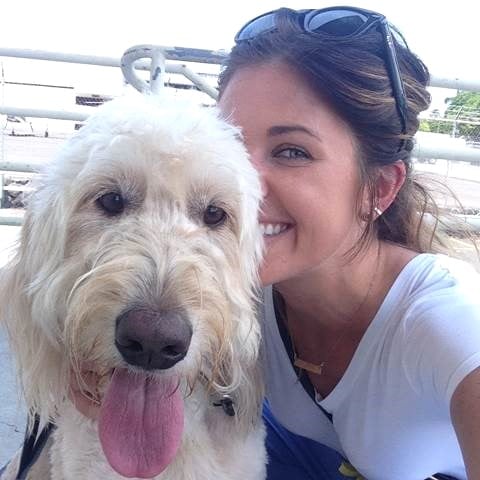
"It was our first time flying our cats by plane, and it was a big move to Hawaii. We wanted to ensure that our pets flew safely and were in great hands. Whenever we called the airlines for help, they didn't know their own policies and we kept getting different answers. We wanted people who were experts in relocating animals so that we were prepared if original plans didn't happen." Read More
Thanks to all of these North America pet travelers for sharing their incredible experiences with us! Catch up with the rest of the PetRelocation North America Pet Travel Spotlight series and contact us if you're ready to start planning your pet's move.
Author:
PetRelocation TeamTopic:
Pet:
Country:

Are you planning a relocation to Hong Kong? Need to bring your pet along with you? Though this can be an overwhelming transition, your family's trip can run smoothly with guidance and smart planning.
To help, we've created a Hong Kong Pet Travel Series to shed some light on the import rules you'll be facing and offer a few tips from our pet travel experts. Follow along to learn more and have a happy travel experience, pet lovers!
Part One: Hong Kong Pet Travel FAQs
It's normal to feel a little lost when you're just getting started, so look at these common questions as you begin to put your pet's move together.
Part Two: 5 Common Hong Kong Obstacles and How to Overcome Them
Many pet travelers encounter these same roadblocks when planning their relocations to Hong Kong. Here's how to move forward and avoid problems.
Part Three: Hong Kong Pet Shipping Stories
It can be helpful and comforting to hear the stories and advice of experienced pet travelers, so we've rounded up a few client experiences about pet travel to Hong Kong.
Did you know we have a dedicated Hong Kong Pet Relocation Team ready to step in and handle your pet's move? If you're ready to learn more, let us know!
Photo Credit: Studio Incendo/Flickr
Bringing pets to Hong Kong?
Here’s what to know about moving pets to Hong Kong.
Author:
PetRelocation Team
After answering a few frequently asked questions about pet travel to Hong Kong in Part One of our Hong Kong Spotlight, we now focus on another hot topic: Common obstacles that arise when tackling your dog or cat's relocation to Hong Kong.
Pet travel can be overwhelming no matter how prepared you are, so to help ease your family's transition to Hong Kong, here are a few roadblocks to watch out for.
Import Permit
All pets will need an import permit to gain entry into Hong Kong, and this can be tricky to obtain, so it's essential to start early and follow protocol carefully. The permit is good for six months, but it can take a few days to receive once you or your pet's travel agent applies for it, and the permit must also be filled out in the correct format to accurately reflect your pet's vaccination status and other important details. (Remember, PetRelocation can handle the import permit on your behalf if you decide to work with us!)

Finding a Pet Friendly Airline
As always, it's important to use a pet-friendly airline when traveling internationally, and "pet friendly" means a carrier places a priority on the safety of pets during transit. The cargo area is pressure and temperature-controlled; pets are the last to be loaded and the first to be removed upon arrival, and pets are kept in temperature-controlled rooms and vehicles throughout the trip.
PetRelocation has a few preferred carriers for our clients, including KLM, Lufthansa, and British Airways.
Manifest Cargo & Flying Separately From Your Pet
Pets entering Hong Kong must arrive via manifest cargo instead of in the cabin (the only exceptions may be for service animals). Remember that not all Asian airlines meet our standards for pet friendliness or have the routing we desire, so you will probably end up flying separately from your pet when traveling to Hong Kong.
Another reason it often works better to fly separately is the early check-in time for pets and the fact that an approved customs broker has to receive the pet and oversee clearance upon arrival. These factors add several extra hours to a journey, and the pet owner doesn't need to be there during this time.

Heat Embargoes
Though you may encounter restrictions when traveling with a brachycephalic breed, it's not impossible to move with a Pug, French Bulldog, or another snub-nosed pet to Hong Kong. Finding an airline may be a little trickier, as some carriers don't accept particular breeds at any time. Some only accept them during the cooler months (usually beginning after Sept. 15). Sometimes the only option is to fly over Europe with Swiss Air or Lufthansa, so depending on where you're starting, this could make for a longer (but still perfectly safe) trip.
Here are a few general tips for flying with snub-nosed pets, and as always, it helps to start planning nice and early to avoid any scheduling issues.
Restricted Breeds
A few breeds, including Pit Bull Terrier/American Staffordshire Terrier, Japanese Tosa, Dogo Argentino, Fila Brasileiro, and their crossbreeds, are banned from entering Hong Kong if your dog resembles one of these breeds. You will be required to show documentation illustrating they are not one of the prohibited breeds (again, your relocation coordinator can oversee this for you).
Take a look at the rest of our Hong Kong Pet Travel Spotlight and contact our Hong Kong pet travel team if you're ready to start planning your pet's safe move!
Banner image: High West - Hong Kong/Flickr
Bringing pets to Hong Kong?
Here’s what to know about moving pets to Hong Kong.
Author:
PetRelocation TeamAs part of our pet-friendly airport discussion, we've highlighted a few different hubs and discussed the best ways to make the most of an airport's pet relief area.
In addition to using such a place to your greatest advantage, it's important to give something back by displaying civility and good manners.
In other words, be savvy, efficient, and responsible by keeping the following conscientious goals in mind.
1. Clean up after yourself
We may skirt around it a little to be polite, but the number one reason you're visiting a pet area is for its bathroom facilities. Most places offer baggies or "mutt mitts" to inspire you to do the right thing. Do everyone a favor and use them.
2. Play nicely
In any situation where pets are in a position to mingle with one another, it's important to exercise diligence and restraint. Keep your dog on a leash until it's clear that this is will be a friendly encounter, and speak to the other pet owners and make sure you're on the same page about playing and boundaries.
3. Watch your time
It isn't often a problem, but where there's a capacity limitation, it's important to ensure everyone can use the space provided. Schedules usually run pretty tightly at airports, so, if necessary, step back when your dog has done his business to give everyone time to enjoy the facilities.
4. Say thanks
After using a relief area, you'll likely have feedback to offer (and hopefully some appreciation), so consider sending an email or using Facebook or Twitter to tell the airport about your experience. Not only will your message have the potential to encourage them to keep up the good work and possibly expand and improve their pet travel facilities, but you'll also help your fellow pet travelers by giving them an idea of what to expect.
5. Represent the pet community
Unfortunately, not everyone carries love in their hearts for other people's pets or understands what it's like to travel with them. The best response to countering preconceived notions and cynicism is to behave respectfully and responsibly. Give skeptics their space and offer no reason to make anyone feel uncomfortable or inconvenienced by the presence of your furry traveling companion.
Do you have any pet travel tips to share? Let us know what lessons you've learned along the way. Your fellow PetRelocation readers will surely appreciate it!
Author:
PetRelocation TeamTraveling through airports with pets has become a much more comfortable experience over the last few years, primarily thanks to new pet relief areas being built.
Are you planning to use one of these spaces the next time you travel in-cabin with your small pet? Each airport offers a different experience, and your time to frolic will probably be limited, so follow these basic guidelines to make the most of your pet's pet relief area visit.
1. Map It
Before arriving at the airport, familiarize yourself with the layout to avoid wasting time wandering around or asking for directions. These areas are not always well-marked, so doing some sleuthing online ahead of time will allow you to proceed with confidence.
2. Prepare
This is good advice for traveling, but remember to have a few basic items in your doggy bag of tricks. A collapsible water dish, a familiar toy or two, and a leash will make your pet's experience safe and comfortable. The relief areas should all be supplied with waste disposal bags, but you should carry a few extras just in case.
3. Be Polite
You never know what you'll encounter in a pet area. You may be the only ones there, or it could be a busy place; if this is the case, keep your dog restrained until everyone gets along (particularly if it's an off-leash facility). Whether you encounter service animals, security dogs, or other pets, aim to be friendly and considerate by playing nice and cleaning up after yourselves.
4. Practice
A pet relief area can, in many ways, resemble a dog park, so make sure your pup is comfortable in such a situation. If you don't frequent any of your neighborhood hang-outs and don't often take your dog to new places in general, you might consider going a few times before the trip so that your little traveler can get used to the experience of being away from home.
5. Connect
There are various social media tools, so why not use them to pick up some advice? Through Twitter, Facebook, and, yes, sites like PetRelocation, you can connect to thousands of pet travelers and gather some of the information they've shared. Whether you spend a few minutes reading a great travel blog or ask a question on an organization's Facebook wall, there are plenty of ways to initiate a conversation with an experienced group of peers.
Traveling with a larger pet and needing help booking pet travel via cargo? Contact us to discuss your options.
Bringing pets to United States?
Here’s what to know about moving pets to United States.
Author:
PetRelocation TeamPet Care in the Philippines:
The pet care industry in the Philippines has seen remarkable growth, a testament to the evolving relationship between pet owners and their furry companions. This expansion reflects a broader trend of increased awareness among consumers about pet health, the rising popularity of purebred pets as companions and investments, and the consequent growth in spending on pet care products and services.
Contacting Regulatory Bodies
-
Before planning pet travel to the Philippines, it's crucial to consult with the appropriate regulatory body. For those outside the Philippines, this means reaching out to the nearest Philippine Embassy or Consulate. Within the Philippines, the Bureau of Animal Industry, Animal Health Division (AHD), is your go-to resource for guidelines and requirements related to pet importation and care.
Evolution of Pet Ownership
-
Pet ownership in the Philippines has transcended the traditional search for companionship. The trend has shifted towards owning purebred dogs and cats, not only for the joy they bring but also as a significant financial investment. This shift has led to increased spending on high-quality pet food, grooming services, and other pet care supplies despite the general rise in prices. Remarkably, the increase in costs hasn't deterred the market's volume growth, indicating a robust consumer commitment to pet care.
Market Dynamics and Consumer Preferences
-
The pet food market, particularly the dog and cat food segment, remains the largest, experiencing a 9% increase in volume. Despite the rising prices of pet care products and food, dog food continues to outsell other categories, underscoring dogs' status as the preferred pet in the Philippines. This preference significantly influences the pet food market and the pet product industry's steady growth, including items such as dog crates.
The Rise of One-Stop Pet Care Centers
-
Since 2004, the concept of one-stop pet care centers has gained popularity, offering a convenient shopping solution for pet owners. These centers combine veterinary services, pet product shops, and grooming services under one roof, catering to all pet care needs efficiently.
Competitive Landscape
-
Nestle and Masterfoods have been leading competitors in the Philippine pet care market. However, the competition intensified with San Miguel Corp entering the scene with its dog food brand, Petko, challenging the status quo. This rivalry has spurred innovation and variety in the market, promising even healthier growth in the sector.
Expanding Horizons: The Rise of Pet Travel in the Philippines
In addition to the thriving pet care market, the Philippines has witnessed a significant uptick in the pet travel sector. This growth aligns with the global trend of pet owners increasingly seeking safe and convenient options to travel with their pets or ensure their pets can join them in new locales without hassle.
The Demand for Pet Travel Services
With the rise in pet ownership and the increasing number of pet owners who view their pets as family members, the demand for pet travel services has soared. This demand is not only for domestic relocations but also for international moves, reflecting the Philippines' growing role as a hub for expatriates and global citizens who wish to keep their pets close.
Integrating Pet Travel with Pet Care
The integration of pet travel services into the broader pet care market underscores a holistic approach to pet ownership, where the well-being and logistical needs of pets are addressed under one umbrella. Services ranging from obtaining travel documents and health certificates to arranging pet-friendly accommodations and transport options illustrate the comprehensive nature of modern pet care.
Regulatory Environment and Compliance
A crucial aspect of pet travel is navigating the regulatory environment, which includes adhering to import and export regulations, quarantine requirements, and health certifications. The Philippine Bureau of Animal Industry (BAI) plays a pivotal role in setting these guidelines, ensuring the safe and humane transportation of pets across borders.
The Role of Pet Relocation Services
Recognizing the complexities involved in pet travel, specialized pet relocation services have become increasingly popular. These services offer end-to-end solutions for pet owners, managing everything from paperwork and permits to flight bookings and quarantine arrangements, if necessary. The expertise and support provided by these services greatly alleviate the stress of moving pets, making global mobility more accessible for pet owners.
Future Prospects
As the pet travel market continues to grow, we can expect further innovations and services aimed at enhancing pet mobility. This includes partnerships between airlines and pet relocation services, advancements in pet-friendly travel accommodations, and even pet-centric travel planning apps. The future of pet travel in the Philippines looks promising, with ongoing developments geared towards making the world more accessible to pets and their owners.
Looking Ahead
The Philippine pet care market is poised for continuous, healthy growth, driven by the deepening bond between pets and their owners, the preference for high-quality pet care products, and the convenience of integrated pet care services. As consumer behavior evolves, the market is expected to expand, offering more opportunities for pet care brands and services to thrive.
Author:
PetRelocation TeamTopic:
Pet:
Country:
Name: Jocelyn
Number of Pets: 1
Pet Type: Dog
Pet Breed: Labrador Retriever
From: U.S.A.
To: Philippines
What necessary documents do I need to travel with my dog from the U.S. to the Philippines?
Thank you,
Jocelyn
Dear Jocelyn,
Thank you for reaching out with your question about relocating your Labrador Retriever from the U.S. to the Philippines. We're here to guide you through the steps and documents required to ensure a hassle-free journey for your beloved pet. Here's what you need to know:
Key Documents and Preparations for Pet Travel to the Philippines
1. Veterinary Health Certificate: A certified veterinarian must issue a health certificate for your dog, indicating that they are free from infectious diseases and fit for travel. This certificate typically needs to be issued within a certain period before your departure, so please check the most current timeframe requirements.
2. Rabies Vaccination Certificate: Your Labrador must be vaccinated against rabies. The vaccine should be administered at least 30 days before travel but not more than one year prior to entering the Philippines. Ensure you have the official vaccination certificate as proof.
3. Import Permit: Before traveling, you'll need to secure an import permit from the Bureau of Animal Industry (BAI) in the Philippines. This permit is crucial for entry and will outline specific conditions or additional requirements for your dog's importation.
4. Microchip: While not always a strict requirement, having your dog microchipped with an ISO 11784/11785 compliant 15-digit pet microchip is highly recommended for international travel. It ensures your pet can be easily identified at all times.
Please look at the pet import requirements for the Philippines for an idea of what steps you'll need to take to prepare your dog for the trip.
Steps to a Smooth Relocation Process
-
Start Early: Begin your preparations well in advance. This gives you ample time to complete all necessary vaccinations, obtain the required documents, and address any potential issues that may arise.
-
Consult Official Resources: For the most accurate and up-to-date information on pet import requirements, we recommend checking with the Philippine Embassy or the Bureau of Animal Industry’s official website. Requirements can change, so it's crucial to have the latest information.
-
Professional Relocation Services: If the process feels overwhelming, our team at PetRelocation is ready to assist. We offer comprehensive services to handle the logistics of your dog's move, ensuring all requirements are met for a stress-free relocation.
Pet travel can certainly feel overwhelming at the beginning, so feel free to contact us for a quote if you think you'd like some help. Reading over these frequently asked pet travel questions might also be a good idea.
Hopefully this starts you out in the right direction. Good luck with the trip, and again, let us know if you're interested in further assistance.
Bringing pets to United States?
Here’s what to know about moving pets to United States.
Author:
PetRelocation TeamName: Brian
Number of Pets: 1
Pet Type: Cat
Pet Breed: British Blue
From: Dubai
To: Philippines
Dear PetRelocation,
What is the procedure for transporting my cat to the Philippines?
Thanks,
Brian
Dear Brian,
Thank you for reaching out to us with your question about relocating your British Blue cat from Dubai to the Philippines. We understand that moving pets internationally can seem complex, so we're here to provide you with a streamlined overview of the process to ensure a safe and comfortable journey for your feline friend.
Essential Steps for Pet Import to the Philippines
1. Veterinary Health Certificate: Your cat will need a health certificate issued by a licensed veterinarian in Dubai. This certificate confirms that your cat is free from infectious diseases and is fit to travel. It's typically required to be issued within a certain timeframe before your departure, so check the latest guidelines for the exact window.
2. Rabies Vaccination and Documentation: Ensure your British Blue is up-to-date with their rabies vaccination. The Philippines requires proof of rabies vaccination administered at least 30 days, but not more than one year, before entering the country. Keep the vaccination certificate handy; you'll need to present it upon arrival.
3. Import Permit: While the requirement may vary, it's often necessary to obtain an import permit from the Bureau of Animal Industry (BAI) in the Philippines. The permit outlines specific conditions and may include additional vaccinations or treatments.
4. Microchipping: Although not always mandatory, microchipping your cat with an ISO-compliant chip can facilitate the identification process and is highly recommended for international pet travel.
Navigating Through the Process
-
Start Early: Begin the preparation process several weeks in advance. This gives you ample time to complete all veterinary requirements and obtain the necessary documents.
-
Consult with the Embassy: For the most accurate and up-to-date information, we recommend contacting the Philippine Embassy in Dubai or the Bureau of Animal Industry in the Philippines directly. They can provide specific details on the current import requirements and any additional steps needed due to your departure from Dubai.
-
Pet Travel Blog and Resources: Our blog offers additional insights on pet travel, including crate-training tips and advice for a stress-free journey. While our resources are extensive, we always cross-reference with official channels for the most current information. For general information, please look at our blog for pet travel advice and crate-training tips.
Professional Assistance for Your Pet's Relocation
If you're looking for a hassle-free relocation experience for your cat, our door-to-door services might be the perfect solution. We can handle the complex logistics of international pet travel, ensuring that all requirements are met and that your British Blue arrives safely in the Philippines.
Thanks for submitting a question to us, and good luck with everything!
Author:
PetRelocation TeamFrom: Los Angeles, California
To: Ninoy Aquino, Phillippines
Pet: Sonico: 7-month-old Maltipoodle, 25 lbs
Thanks,
Dear Bernadette,
Thank you for reaching out with your questions about relocating your Maltipoodle, Sonico, from Los Angeles, California, to the Philippines. We understand that traveling with your pet can seem daunting, but with proper planning, Sonico can safely accompany you on your journey. Here’s what you need to know:
Understanding Pet Travel Requirements to the Philippines
Firstly, while pets do not require a "passport" in the traditional sense, Sonico will need specific health documentation to enter the Philippines. This includes a health certificate endorsed by the United States Department of Agriculture (USDA) and up-to-date vaccination records, especially for rabies. Click here to learn more pet import requirements for the Philippines
Starting the Process Early
The paperwork process involves several steps, including a visit to your vet for a health checkup and vaccinations. Following this, the health certificate issued by your vet must be endorsed by the USDA’s Animal and Plant Health Inspection Service (APHIS). Given these requirements, we recommend starting this process well in advance of your departure date to ensure everything is in order.
Airline Policies for Pet Travel
Regarding traveling with Sonico in the cabin, airline policies vary significantly based on the pet's size and the specific airline's regulations. Given Sonico’s size at 25 lbs, he may exceed the size limitations for in-cabin travel on many airlines. Therefore, he will likely need to travel in the cargo hold.
Choosing a Pet-Friendly Airline
For pets traveling via cargo, selecting an airline with a pet-safe program is crucial. Airlines like United, Lufthansa, and KLM are known for their comprehensive pet travel policies, ensuring pets are handled safely and comfortably throughout their journey. We highly recommend contacting your chosen airline directly to discuss their specific pet travel requirements, including crate specifications and any additional paperwork they might require.
Planning a Smooth Journey for Sonico
International pet travel, while complex, is entirely manageable with the right preparation. Here are a few steps to ensure a smooth travel experience for Sonico:
- Book a Direct Flight if Possible: Reduces stress and transit times for Sonico.
- Acclimate Sonico to His Crate: This will help reduce stress during the journey.
- Check with the Philippine Embassy or Consulate For the latest on pet import regulations, as these can change.
How We Can Help
Feeling overwhelmed? Our team at PetRelocation is here to assist with every step of Sonico’s relocation process, from paperwork to selecting the right airline, ensuring a safe and stress-free journey to the Philippines.
Ready to Start Planning?
Contact us today to learn more about our services or to begin planning Sonico’s adventure to the Philippines. We’re here to make your pet’s relocation as smooth as possible.
Author:
PetRelocation TeamTopic:
Pet:
Country:
Hi PetRelocation,
If I travel with my dog to the Philippines, will they quarantine him once he arrives? If so, for how long? Will my dog be delivered right away to the appropriate address? Please advise.
- Juvy
Hi Juvy,
Thank you for reaching out with your concerns about traveling with your dog to the Philippines. It’s great to see pet owners planning ahead to ensure their pets’ journey is as smooth and stress-free as possible. Let’s dive into your questions:
Will my dog be quarantined upon arrival in the Philippines?
The short answer is no, your dog will not need to be quarantined upon arriving in the Philippines, assuming all the health and vaccination requirements are met. The Philippines, as of our latest update in 2024, does not require quarantine for pets from countries with controlled rabies risk, thanks to its approach to managing animal diseases, including rabies.
What are the necessary preparations for my dog's travel?
An essential step for your dog’s travel is obtaining an import permit from the Philippines Department of Agriculture. This permit is a must for pets' entry into the country and ensures that all health and vaccination standards are met.
To streamline the process, ensure your dog is up-to-date with all vaccinations, especially against rabies, and has a microchip for identification. Additionally, a health certificate from your vet, issued within a certain timeframe before travel, is required to verify your dog’s fitness for the journey.
How about my dog’s delivery to my address in the Philippines?
Whether your dog will be delivered directly to your address depends on the service you choose. If you opt for a door-to-door pet relocation service, like the one we offer, your pet will be cleared through customs on your behalf. Following that, we will ensure your furry friend is safely delivered to your doorstep, ready to start their new adventure in the Philippines with you.
Hope that helps!
Contact us when you're ready to discuss your pet transport options for the Philippines!
Editor's Note: This post was originally published in May 2009 and has been updated in 2024 to reflect the most current information regarding pet travel to the Philippines.
Author:
PetRelocation TeamNavigating the World of International Pet Cargo Travel
The prospect of international pet relocation brings many emotions, especially when it involves flying your pets. A common concern among pet owners is the necessity of placing their pets in the cargo hold during flights. This article aims to demystify pet cargo travel, dispelling common misconceptions and highlighting the safety and care involved.
What exactly does it mean to fly pets via "cargo"? Where is the cargo area, and what's it like inside? Here are a few facts that should help clear up the confusion surrounding this issue.

The two parts of the cargo area are highlighted above
Where Do Pets Stay During a Flight?
In most standard narrow-body aircraft, like Boeing 737s, the cargo area is located in the plane's belly, divided into a forward bin and a rear bin by the plane's engine and wings. This is where your pet will be during the flight.
What Happens in the Cargo Area?
The cargo area houses luggage, other cargo, and pet crates. Pets are not just another piece of cargo; they receive special attention. The plane is carefully balanced, and pet crates are securely fastened with netting and straps to ensure safety during turbulence. Importantly, pets are positioned to ensure adequate airflow, separate from other items.
Why Choose Cargo Travel for Pets?
Expert opinions suggest that pets experience less stress in the cargo area, away from the cabin's hustle and unfamiliar sensory stimuli. Leading airlines, known for their pet-friendly policies and excellent safety records, such as United, KLM, and Lufthansa, prioritize pet welfare in their cargo handling procedures.
Ensuring Safety and Comfort for Your Pet
Choosing a reputable airline with a proven track record in pet safety is crucial. These airlines understand the unique needs of pet travel and are equipped to provide a comfortable experience for your pet.
While the idea of your pet traveling in cargo might initially be daunting, understanding the care and safety involved can ease your concerns. For further questions or assistance in planning your pet's travel, feel free to contact us. Knowledge is power, and the more you learn about pet cargo travel, the more reassured you'll be about its safety.
Contact us if you have more questions about flying with pets in cargo. Remember, it's normal to feel nervous about pet travel, but the more you know, the more you'll realize how safe it can really be.
(Image courtesy of United Airlines)
Bringing pets to United States?
Here’s what to know about moving pets to United States.
Author:
PetRelocation TeamClarifying the Complexities of Pet Microchipping for International Travel
Microchipping, a vital component of pet travel, often brings up a host of questions, especially when it comes to international compatibility. Building upon our previous discussions about AVID microchips, we're now focusing on HomeAgain microchips and their ISO compatibility—an essential aspect of international pet relocation.
Look at our previous blog post on this topic for more info on AVID and HomeAgain microchips, and read on to explore some frequently asked questions about microchips and pet relocation.
What are Microchips, and Why are They Important for Pet Travel?
Microchips are minuscule devices, about the size of a grain of rice, programmed with unique identification numbers. They play a crucial role in the safe and organized importation of animals across international borders. Implanted using a hypodermic needle, typically between the pet's shoulder blades, this procedure is straightforward and doesn't require anesthesia or sedation.
ISO Compatibility: Is Your Microchip Internationally Approved?
When preparing for international travel, it's imperative to ensure your pet's microchip meets the destination country's standards. Most international journeys will necessitate an ISO (International Organization for Standardization) approved microchip, a universal standard for pet identification.
HomeAgain Microchips and International Travel
HomeAgain microchips are indeed ISO compatible, aligning with international standards for pet travel. However, it's important to note variations in requirements, as some countries may have specific preferences, such as the AVID Euro chip or the AVID Standard, essential for entry into certain nations like Hong Kong.
Handling Multiple Microchips
If your pet already has a non-ISO-compliant microchip and requires an additional ISO-approved one, there's no need to remove the original. Ensure your veterinarian documents the presence of both microchips, allowing scanning officials to access the correct information seamlessly.
EU Entry Requirements and Microchipping
For entry into the European Union, pets must have an ISO-compatible microchip, such as HomeAgain or the AVID Euro chip. Again, always verify the specific microchipping requirements of your destination country to ensure hassle-free travel.
We hope this updated guide clarifies some of the complexities surrounding pet microchips and international travel. Your questions are invaluable in shaping our content, so keep them coming! If you need assistance arranging safe and compliant pet shipping, please contact us. Also, join our vibrant community on Facebook for more insights and updates on pet travel.
Thanks for your questions, and keep them coming! Contact us if you'd like some help arranging safe pet shipping!
Author:
PetRelocation TeamName: Renee
Number of Pets: 1
Pet Type: Dog
Pet Breed: Mixed (Lab/Sharpei)
From: Canada
To: Australia
Dear PetRelocation,
I read on your site that 180 days of the 190 quarantine can be completed in the country of origin. Forgive me, as I have never moved an animal before, but does that mean she has to go into a quarantine station here for 180 days?? I won't be able to have her at home with me.
Thanks,
Renee
Hi Renee,
Thanks for reaching out. We'd be happy to provide some information. While the process to move a dog to Australia does take 190 days when it's all said and done, your dog will only need to stay in a quarantine facility for 10 days, and that occurs at the very end after she has arrived in Australia. She will be home with you while you're still in Canada.
While you're still in Canada, you'll be preparing your dog for the move by completing various vaccines (which need to be done in a particular order and at particular times), and you'll also want to work on crate training if necessary. Check the Australia Government website for more information about what steps you'll need to complete.
Hopefully, this helps, Renee! We've moved many dogs and cats to Australia and would happily talk to you and/or help arrange your move. Just let us know if you're interested in discovering more, and good luck with everything!
Bringing pets to Canada?
Here’s what to know about moving pets to Canada.
Author:
PetRelocation TeamHi PetRelocation,
We'll be traveling from Australia to Los Angeles. Will my dog spend extended time in quarantine?
Thanks,
Adam
Hi Adam,
Thank you for your question! When traveling with pets from Australia to the United States, there is no required quarantine period.
The United States has some of the easier pet import rules (as opposed to Australia's, which are quite strict, as you probably know). Not only do you need to secure a health certificate and proof of an up-to-date rabies vaccine, but no quarantine planning is necessary.
Additionally, we recommend double-checking airline policies and taking additional steps to secure their safety because they are a snub-nosed breed. As always, check in with your vet if you have specific questions about your dog's ability to handle the experience of air travel, but in our experience, it's safe to undertake as long as your pet is healthy.
Crate Training is another vital aspect of preparation. Ensuring your French Bulldog is comfortable in its travel crate can significantly reduce stress during the journey. Additionally, consulting with your veterinarian is important to assess your dog’s fitness for air travel. As pet relocation specialists, we've observed that with proper health and preparation, most pets handle air travel well.
Hopefully, this has been a helpful update, Adam. Let us know if you're interested in hiring professional assistance for your move -- we'd be happy to oversee your dog's relocation from beginning to end.
Pet Travel Question Details:
Name: Adam
Number of Pets: 1
Pet Type: Dog
Pet Breed: French Bulldog
From: Melbourne, Australia
To: L.A., California, USA
Bringing pets to Australia?
Here’s what to know about moving pets to Australia.
Author:
PetRelocation TeamDear PetRelocation,
As per the latest Australian pet import policies, are dogs from India allowed to relocate there? What is the quarantine period, and where can I quarantine my St. Bernard?
Thanks,
Garima
Hi Garima,
Thank you for reaching out to us with your question. Navigating the complexities of pet relocation, especially across continents, can be challenging. We understand the importance of keeping your beloved St. Bernard safe and comfortable during this process.
The Challenge of Relocating Pets from Non-Approved Countries
As per the latest Australian pet import regulations, India is classified as a 'non-approved country' for direct pet travel. This means that pets from India, including dogs, are not allowed to be directly relocated to Australia. However, this doesn't mark the end of your journey.
Transit Through a Third Country
Your St. Bernard can still travel to Australia, which requires transiting through a third country. This involves adhering to specific protocols, including vaccination and health requirements. We advise reviewing the official Australia Department of Agriculture website for a comprehensive step-by-step guide for pets traveling from non-approved countries via a Category 3 country.
Quarantine Measures and Considerations
All pets entering Australia are subject to a mandatory 10-day quarantine period. This measure is in place to protect local fauna and maintain the country's stringent biosecurity standards. The quarantine facilities are located in Melbourne, and it's essential to plan this phase meticulously for your pet's well-being.
How We Can Help
If you'd like to tackle this two-step move to Australia from India and want to discuss your options with a Specialist, please contact us for a pet travel consultation. You may also choose to reconsider -- sometimes pet owners decide to cancel or delay a relocation in favor of prioritizing their pet's comfort and safety. We've even had clients who chose to move to different countries than originally planned so that they could bring their pets along (meet Stan the Pit Bull, for example).
Hopefully, this information is helpful, and you're welcome to let us know if you think we can assist you in the future.
Good luck with everything!
Pet Travel Question Details:
Name: Garima
Number of Pets: 1
Pet Type: Dog
Pet Breed: St. Bernard
From: Bangalore, India
To: Melbourne, Australia
Bringing pets to India?
Here’s what to know about moving pets to India.
Author:
PetRelocation Team
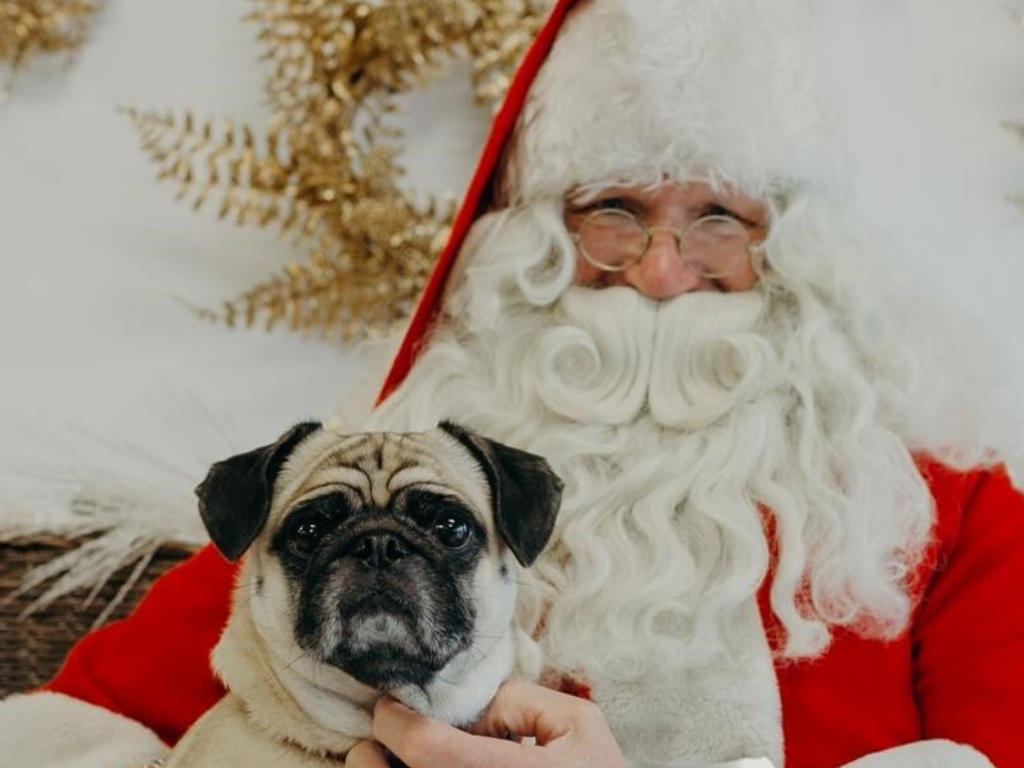
Planning International Pet Travel: Tips for Traveling With Pets Over the Holidays
The holiday season is an opportune time to catch up with family and friends, and it's no surprise that many people also choose this period for relocation. While combining a long holiday break with an international move might seem efficient, traveling with pets during this time presents unique challenges. Here are essential tips for ensuring a smooth pet relocation during the holiday season:
1. Navigate the Pre-Export Timeline Strategically
International pet relocations usually require a veterinary visit within ten days of departure to secure health documents, followed by USDA endorsements. The USDA offices close on December 25 and January 1 during the holidays. Factor in a probable backlog and your timeframe for securing necessary documentation narrows significantly.
Actionable Tip: Schedule your pet's flights to ensure the USDA endorsements occur well before or after the holiday rush.
2. Anticipate and Mitigate Risks
The holiday season is notorious for congested airports and unpredictable weather conditions. These factors disproportionately affect animals flying in the cargo hold, as they are often the first to experience rerouting or rescheduling to prioritize their safety.
Actionable Tip: The safest strategy is to plan your pet's relocation well before the holiday week to circumvent any unforeseen obstacles.
3. Make Informed Decisions
Is hiring a pet relocation service right for you? Understanding the costs involved and the services provided minimizes surprises and ensures a smooth transition for your pet. Learn more about our pricing and pet movement procedures [here]
4. US-Based Operations Impact Availability
We are based in the United States and observe U.S. holidays, including Thanksgiving. It's crucial to note that the USDA is closed on specific dates, which may affect your pet's travel plans.
Actionable Tip: If you're targeting a holiday move, consider these U.S.-specific closings.
5. Limited Availability During Peak Times
The holiday season is one of the busiest times of the year for us, and there's a high likelihood that our schedule may already be full. If we can't accommodate your desired move date, rescheduling might be necessary, pushing your move to January or later.
Actionable Tip: Reach out as soon as possible to secure a spot. We take on a limited number of moves each month, so early engagement is crucial.
6. Boarding Facilities Fill Up Fast
During the holidays, boarding facilities tend to reach total capacity quickly. The more time you give yourself to plan, the better your chances are of securing a spot for your pet.
Actionable Tip: To avoid any last-minute scrambling, book boarding services well in advance, ideally when planning your move.
7. Act Now for the Best Results
Everything—from available move dates to flight options—becomes constrained during the holidays. To ensure a smooth move, starting the planning process as soon as possible is advisable.
Actionable Tip: If you're considering hiring us for your pet's relocation, initiating the process soon is imperative to avoid disappointment.
The complexity of relocating pets during the holiday season should not be underestimated. Being prepared and well-informed can save you from unnecessary headaches and ensure your pet's welfare, safety, and comfort.
Looking for advice on how and when to relocate your pet(s) in the New Year? Check out our pricing information and how we move pets to determine whether hiring PetRelocation suits you. Happy Howl-idays!
Last updated: October 23, 2023
Author:
PetRelocation TeamTopic:
Pet:
Country:
It's natural to feel nervous about putting your pet in the cargo hold during air travel. However, our Pet Relocation Specialists assure travelers that their pets are safe and comfortable.
United Airlines used to be one of our preferred pet-friendly airlines, and the video below depicts how pets are safely unloaded from the plane and into PetSafe vans. Take a look to see how things work -- it's nice to have real-life images to replace all the questions you have in your mind about pet travel, don't you think?
Author:
PetRelocation TeamTopic:
Pet:
Country:
Be Careful When Buying Puppies Online
You've gone online to search for a puppy and stumbled across a free Yorkie puppy named "Romeo." Or maybe it's an adorable English Bulldog puppy with droopy eyes or a free Pomeranian puppy named "Candy." It might even be a free Persian or Siberian kitten or an African Grey Parrot.
The best part? The pet owners aren't asking for any money -- except for the shipping costs.
Sometimes a sad story goes along with the puppies, too. The puppy's owner will tell you that their daughter died and it was her puppy or that they are adopting an orphan and won't have time to care for the puppy.
They'll probably ask you some questions meant to pull at your heartstrings and make you want to qualify to get this free puppy:
- "Where are you located?"
- "Are you a breeder?"
- "Do you have kids?"
- "Can you also promise you will take good care of him/her?"
But they want some money to ship the puppy and send it through Western Union or MoneyGram. They often want you to send this money to somewhere like Cameroon, or sometimes it will be California or another US state.
Every day, PetRelocation takes phone calls from people who have been victims of puppy scams. It all seems so reasonable to pay the shipping costs. People want to know how much PetRelocation will charge to arrange the shipping, and we must explain that there is no puppy. The puppy scammers will not release the puppy to a reputable company like ours because the puppy does not exist. They only want to get your money, however small, in cash.
Here are some names of fraudulent companies and email addresses we have identified:
- USA PET RELOCATION Delivery Service
- IntPetRelocators
- WORLD WIDE PETS RELOCATORS
- PETS RELOCATORS TRANSPORTATION AGENCY
- PET DELIVERY/AIR TRANSPORT DEPARTMENT, PET SHIPPING AGENCY SINGAPORE
- GLOBAL PETS TRAVEL SERVICE
- PET SHIPPING AGENCY
- [email protected]
- [email protected]
- [email protected]
- [email protected]
- [email protected]
UPDATE: Please Read!
Comments Policy
If a puppy shipper has scammed you, feel free to post your correspondence in the "comments" section below this post, as others have done, as it will help to deter the criminals.
However, please delete any of your personal contact information from the correspondence you are copying/pasting into your comment before posting your comment.
Many scammers are considered dangerous, and it is important not to publish your name, address, and phone number online. If you have posted your information and would like it removed, please email us (blog[at]petrelocation[dot]com) to let us know your name and the information you'd like removed.
"I have been scammed; how can I report the scammer?"
- Put as much information about the scammer as possible in the comments section below, including:
- Email address of the scammer
- Western Union name that the money was sent to (or that they asked the money be sent to)
- Phone numbers/addresses given by the scammer
- Any other information
- Fax a letter of complaint to the US Embassy in Cameroon (if someone in Cameroon scammed you):
The United States Embassy in Cameroon
Phone: (237) 2220-1500
Fax (237) 2220-1500x4531
- File a report with your local law enforcement and FBI office.
Read more about puppy scams on our blog and via IPATA.org, and if you run across a scammer who claims to be using our company to ship you a nonexistent pet, feel free to contact us and let us know!
Author:
PetRelocation TeamTopic:
Pet:
Country:
The United States has seen a huge uptick in pet adoption. That's great news. However, while many  shelters have seen their lowest numbers, pet scams reached their highest.
shelters have seen their lowest numbers, pet scams reached their highest.
Pet scammers (or "puppy scams") are clever and can often seem like the real deal, but PetRelocation has seen every trick. Read below to know what to look for and how to avoid falling victim to a pet scam.
I Found the Perfect Pet Online. How Do I Know He Or She Is Real?
- First, we highly discourage buying a pet from an unknown source, especially someone in a different state or country. If you (or someone you trust) can't go to their house, meet them, and see the pet yourself, you're already taking a risk.
- Remember, just because someone has a picture of a pet doesn't mean it's real. Often pet scammers find a photo online and pass it off as their own. Consider performing a reverse image search with the picture of the pet. If the same picture appears on multiple or stock image websites, immediately cut off communication with the seller. There is no pet.
-
The same goes for "official" sounding pet company names. Google everything they send you to find out if they are real and pay close attention to the email address they use. If it feels unprofessional, trust your instinct. If you begin communicating with them, pay attention to the grammar they use or how eager they are for you to submit payment.
Payment
Pet scammers are after your money. So, naturally, they will often begin discussing payment quickly. Here are a few red flags to look for.
- Often a pet scammer will say they are just looking for a good home for their pet they can no longer care for and are only requesting the buyer to pay for shipping or "transportation costs." This is often a very low fee but beware. Ask them which airline or carrier they are using to transport the pet, and then inquire with that vendor before making any payments. If it seems too good to be true, it very well could be
- If the seller or breeder asks you to pay with Western Union or MoneyGram, the chances are greater that they are not reputable pet handlers.
- Read this, and if these pet scam details sound familiar, walk away!
I Have Already Paid With Western Union or MoneyGram. Now What?
The pet scammer will likely attempt to get further funds besides what you have already paid them. Pet scam mers do not have any pets in their possession, so anything they say regarding further payment is a lie. These stories are designed to pull on your heartstrings and open your wallet. Here are some of the instances we see often:
mers do not have any pets in their possession, so anything they say regarding further payment is a lie. These stories are designed to pull on your heartstrings and open your wallet. Here are some of the instances we see often:
- The scammers will claim that the pet is being held at the airport and will not be released until another payment is made.
- There may be a last-minute request for a required insurance policy that has not been mentioned before.
- Pet scammers often tell their victims they are working with a reputable pet shipper, like PetRelocation, for delivery and then claim that the "hired" shipper is holding the pet until they are paid extra delivery fees. Please note: PetRelocation does not have any breeders they work with directly. When we are hired to deliver a pet, you will hear from your relocation coordinator long before the day or week of your pet's delivery.
- File a report with your local law enforcement and your local FBI office. Report as much information as you can, such as the scammer's email address, phone number, and any other information that may be relevant.
If You Will Be Purchasing A Pet Online or from Out of State
Make sure first to check that the seller and shippers are reputable. IPATA (the trade association to which PetRelocation belongs) has a list of known scammers that you can reference here. IPATA warns:
"These scammers are criminals. Their goal is to take your money. They use the names of legitimate pet shippers. They pirate websites and illegally use logos of other companies. If you see an offer that is too good to be true, it probably is. It probably is a scam!" - The International Pet & Animal Transportation Association (IPATA)
Here are some names of fraudulent companies and email addresses we have identified:
- [email protected]
- [email protected]
- UnitedAirPets.com, Tel: +1 (409) 263‐2714
- happyteacuphome.com
- [email protected]
- xpresstransportdelivery.com
- harrisonpetshome.co.za
- royalsphynxkitten.com, Tel: +1 (443) 308‐3203
- [email protected]
- www.karismatcavalierhom.com
Read more about puppy scams on our blog and via IPATA. If you run across a scammer who claims to be using our company to ship you a nonexistent pet, please let us know!
Bringing pets to United States?
Here’s what to know about moving pets to United States.
Author:
PetRelocation Team How to Help Cats Adjust to Your New Home
How to Help Cats Adjust to Your New Home
When you decide to move a pet, it's easy to spend most of your energy preparing for the trip, forgetting that there's an adjustment period to attend to. Once you've arrived at your new home, it's important to help your pets settle in, and as many of us know, cats come with their own set of quirks.
Cats may take a little while to start acting normal again (if they were ever normal at all), but there are things you can do to help them both feel at home and stay safe. Here are a few ways to make life a little happier on the other side of your upcoming move.
1. Try to create a normal routine as soon as possible.
Many pet owners will gradually introduce their cats to a new house (start by leaving them in one room and then slowly make the rest of the house available to them). After this, whether feeding or letting them in and out of the backyard, try to build a few regular events into their day. They may pretend to rule the world, but cats like a predictable routine as much as anyone.
2. Pay attention.
Watch for any unusual behaviors regarding energy level and appetite, and in the chaos of unpacking, try to set aside plenty of time for playing with and petting your possibly anxious friend. Remember that hydration is extremely important, especially after a move, so make sure plenty of water is available and watch to see that your cat is drinking plenty.
3. Find a vet ASAP.
It's smart to immediately connect with a good vet, even if you don't need anything. You will need to go to the doc eventually, so researching your options now will save you time and stress later on.
4. Do some research.
Does your cat eat a special brand of food? What are the rabies vaccine laws in your new area? Is there a busy street nearby? Being a great cat owner means being aware of the environment around you, from pet stores to possible hazards, so as soon as you arrive (or ideally before you move) get to know the basics about your new surroundings.
5. Set a good example.
Cats, like other animals, have a way of sensing your own mood. The calmer you are, the calmer they'll be, so do everyone a favor and take a deep breath.
Do you have any good cat travel tips to share? Let us know! Need help moving your cat or dog across the country or internationally? Contact us to set up a pet travel consultation.
Author:
PetRelocation TeamDear PetRelocation,
My boyfriend and I are moving to Berlin, Germany, and I want to bring my cat. I'd like to know what I need to do to get it done, how much it will cost, and how to get this started if it is possible.
Thanks,
Melissa
Hi Melissa,
Thanks for your questions. Please look at this overview of the pet import requirements for Germany. Your cat will need a microchip, full vaccinations, an EU health certificate, and a German/English International Health Certificate. All documents will also need to be endorsed by the USDA.
You'll want to allow a few weeks to plan and carry out these steps. It's important to buy an airline-approved travel crate, as well, and also book a flight with a pet friendly airline.
If you'd like help arranging your move, please fill out our online consultation form. The cost will depend on a few factors, but with more details we'll be able to give you an estimate.
Hope this helps! Let us know if you have more questions, and have a safe trip to Germany.
Pet Transport Question Details:
Name: Melissa
Number of Pets: 1
Pet Type: Cats
Pet Breed: Tabby
From: Washington State, USA
To: Berlin, Germany
Bringing pets to Germany?
Here’s what to know about moving pets to Germany.
Author:
PetRelocation TeamName: Brigitte
Number of Pets: 1
Pet Type: Cat
Pet Breed: Domestic Cat
From: Duesseldorf, Germany
To: Saywer County, Wisconsin
Dear PetRelocation,
I want to travel with my cat from Germany to Wisconsin. I want to enter the United States via Minneapolis, Minnesota.
My cat is microchipped and has her regular vaccinations and one vaccination against rabies. My cat lives in my apartment only, and because of this fact, she does not get in contact with other animals.
Please tell me if any more requirements need to be met to take my pet with me on the journey. Do I need special forms to be filled out by the vet?
If so, please inform me which ones I need and where I can get them.
Sincerely,
Brigitte
Hi Brigitte,
It sounds like you're off to a great start. The pet import requirements for the United States are pretty straightforward -- essentially, you need to have a health certificate (issued by your vet within 10 days of departure) and proof that your cat is up to date with the rabies vaccine.
Be sure to choose a pet-friendly airline and check with them in advance to make a reservation and find out about their policies, and if your cat isn't used to traveling, you can help her in the weeks before your move with these cat crate training tips.
Please contact us if you have any more questions about your move and good luck with everything!
Bringing pets to United States?
Here’s what to know about moving pets to United States.
Author:
PetRelocation Team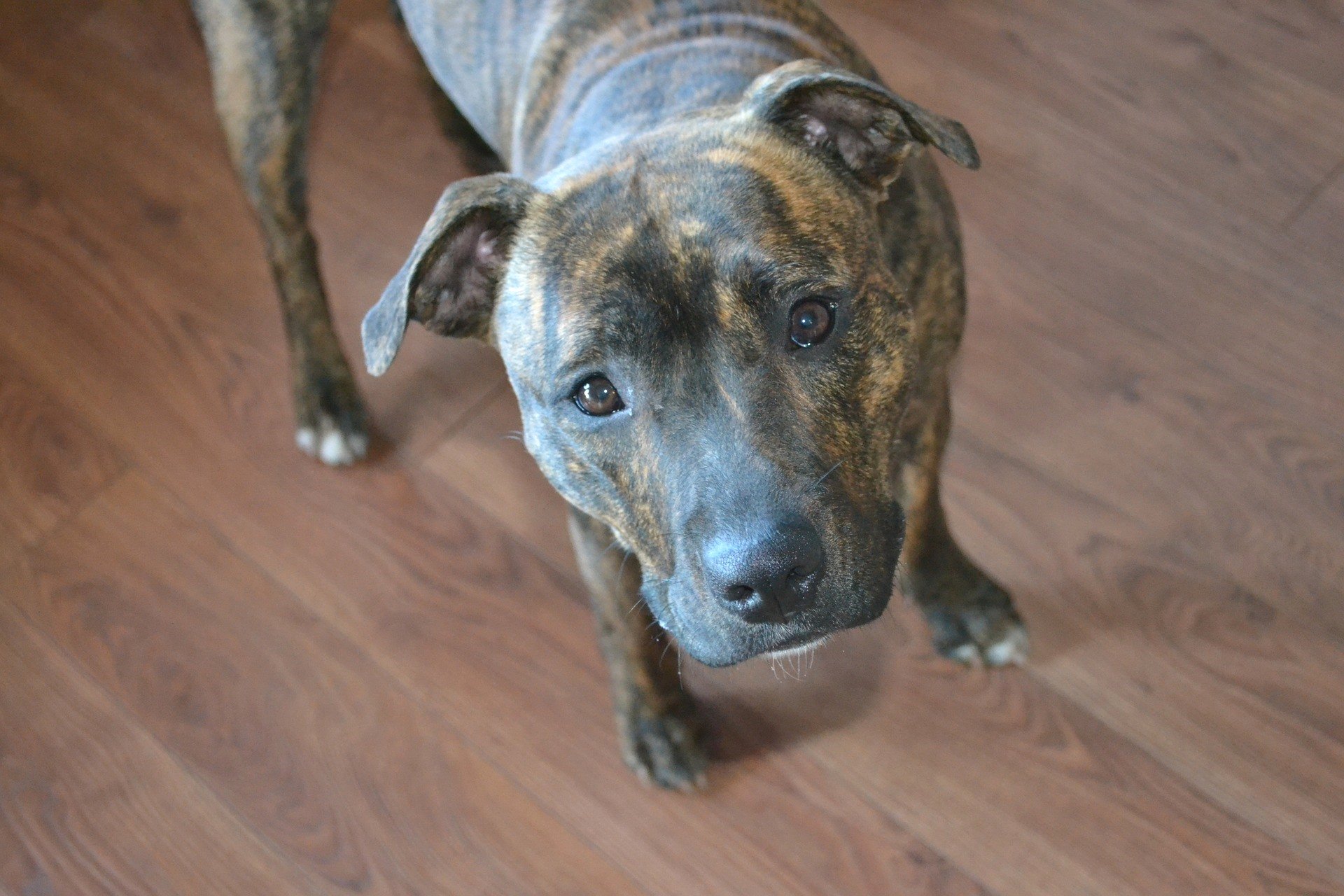 "Are Staffies Banned in Germany?"
"Are Staffies Banned in Germany?"
Dear PetRelocation,
Please can you tell me if and how I can take my Staffordshire Bull Terrier with me when I move to live in Germany?
(Or can you advise me on who to contact to find out?) We will be moving to either Berlin or Wuppertal.
I can't find a definitive answer online.
Thanks,
Samantha
Hi Samantha,
I understand your concern regarding moving your Staffordshire Bull Terrier to Germany. It's a complex subject, and I'm here to provide some guidance:
Breed-Specific Regulations in Germany: Germany has enacted strict rules regarding certain dog breeds, including Staffordshire Terriers. These regulations can be confusing and often vary from city to city.
Possible Exceptions: We have information that Germany may allow some banned breeds (including Pit Bulls) as long as they are registered through your local City Hall.
Who to Contact: We recommend contacting:
- Vets or animal shelters in Berlin or Wuppertal
- The German Kennel Club
- Official government entities, such as the Department of Agriculture
You can also explore more detailed rules and possible exceptions here.
I apologize for the lack of a definitive answer, Samantha. Pet import regulations can be tricky and ever-changing. Speaking with an official office directly is the best approach.
We successfully relocated Stan, a Pit Bull, to Europe not long ago, and his experience might shed light on alternative solutions.
Please don't hesitate to reach out if you need further assistance. If you find out anything definitive, we'd appreciate an update. Fellow pet travelers, please share your insights in the comments if you have additional information.
Good luck with your move, and we're here to support you if you need any future services.
Pet Transport Question Details:
Name: Samantha
Number of Pets: 1
Pet Type: Dog
Pet Breed: Staffordshire Bull Terrier
From: UK
To: Germany
Need help moving with your dog? Contact us to discuss your pet shipping options.
Bringing pets to Germany?
Here’s what to know about moving pets to Germany.
Author:
PetRelocation TeamName: Connie
Number of Pets: One
Pet Type: Small dog
Pet Breed: Yorkie
From: Atlanta, GA, USA
To: Germany
Dear PetRelocation,
Is there a quarantine period for dogs traveling from the USA to Germany?
Thanks,
Connie
Hi Connie,
Thanks for reaching out! Moving your Yorkie from Atlanta to Germany is an exciting journey, and I'm here to guide you through the process.
No Quarantine Required: There is no quarantine for dogs traveling from the United States to Germany. However, there are other essential steps you must follow:
-
Microchipping: It must be done if your dog isn't already microchipped. It's a requirement for identification purposes.
-
Rabies Vaccination: Your dog must be up-to-date on its rabies vaccine. This ensures safety and compliance with German regulations.
-
International EU Health Certificate: You must secure this certificate from an authorized veterinarian. It verifies your pet's health for travel.
Regarding the flight itself, choosing a pet-friendly airline is crucial. We often recommend airlines like Lufthansa and KLM for pets going to Europe, and the travel crate must be airline-approved.
If you need assistance arranging your move, don't hesitate to contact us for a transparent quote. Explore our Ultimate Guide to Moving your Pet to Germany for more detailed information.
I hope this information helps get you started, Connie. Wishing you and your Yorkie a smooth and safe relocation to Germany!
Bringing pets to Germany?
Here’s what to know about moving pets to Germany.
Author:
PetRelocation TeamName: Jenna
Number of Pets: 1
Pet Type: Dog
Pet Breed: Chihuahua
From: Germany
To: USA
Dear PetRelocation,
I brought my 12-year-old neutered male dog to Germany with all the necessary paperwork. We arrived on December 7th and plan to return to the US in two weeks. This is about 4 1/2 months apart.
Is it necessary to use a vet here in Germany to administer rabies and/or all other vaccinations once again? I would rather not if I can avoid it. As my dog is a senior, I want to reduce as much stress as possible. What are the legal requirements to enter San Diego, California, From Cologne, Germany?
Thank you!
Jenna
Hi Jenna,
Great question. Luckily the United States is one of the easiest places to bring a pet, so your efforts won't need to be too complicated.
To start, look at the pet import requirements for the United States. Essentially you'll need to have an International Health Certificate stating your dog is healthy and fit to fly, which needs to be issued within 10 days of travel, and proof that your dog is up to date on rabies. If your dog's rabies vaccine is still valid at departure, you won't need another one (or any other vaccine).
Since you've traveled with your dog before, you probably feel somewhat comfortable planning this trip, but just in case you'd like to read over some additional information, here is a link to a few frequently asked pet travel questions and also a few tips for traveling with older dogs.
I hope this helps! If you'd like to connect with a Specialist to discuss hiring help with your return to the United States, please complete our online consultation form.
Bringing pets to Germany?
Here’s what to know about moving pets to Germany.
Author:
PetRelocation TeamWhen you get the news that your dog has landed at their final destination, you’ll be so excited to smother them with love and introduce them to its new home—you might feel let down if they don’t act normal immediately.
Hold up—let's paws. Try getting into the sweet little brain of your dog for a minute! They just took quite a journey and landed at a new house or apartment with a new layout and thousands of new smells, probably piled high with boxes. They have no idea where they are now or why.
We, humans, have a leg up when it comes to getting our bearings in a new location: verbal communication. When Dorothy landed in Oz, she quickly met friends who explained things. Meanwhile, Toto was dazed and confused!
You may notice strange behaviors when introducing a dog (or dogs) to a new home. It's important to know what's normal, what's not, and how to help them settle in. They may have heightened cortisol for days from the journey, and they’re certainly smart enough to wonder, “What happened to my normal life?” New home acclimation is critical to help you and your dog get back into your trusting partnership and a healthy routine.
In this article, we will discuss how long it can take a dog to adjust to a new home and common signs of anxiety when introducing a dog to a new home, as well as provide tips to help your dog adjust to their new home.
How long does it take a dog to adjust to a new home?

We get this question a lot! The answer depends on your dog. Are they anxious? Did they experience trauma before finding you? Had they ever traveled a long distance before this big move?
It can take days, weeks, or even months for a dog to feel confident and secure in a new home. Following the tips in this article should help you shorten the acclimation period significantly so you and your furbaby can hit a happy stride within a few weeks of moving in, but some dogs are more anxious—and for these guys, establishing a daily routine is even more important.
Common signs of anxiety when introducing a dog to a new home:
When you first introduce your dog to its new home, you may notice them:
- Following you around
- Showing heightened separation anxiety
- Eating less or refusing to eat
- Having diarrhea or constipation
- Playing less
- Growling, barking, or signs of aggression in new situations
These are all common signs of anxiety. If your dog isn't typically prone to these behaviors, they should subside within days or weeks if you commit to a consistent routine and introduce new stimuli slowly, one at a time.
Alternatively, these are more concerning signs that your dog may have contracted an illness while traveling:
- Vomiting
- Ongoing diarrhea or constipation for more than a few days
- Coughing
- Fever
- Prolonged lethargy
- Eating less or refusing to eat for more than a couple of days
Call your new vet immediately if you think your dog could be ill!
How to help your dog adjust to their new home:
- Stick to the daily routine they’re used to. Feed, walk, and play with your dog(s) at times they’re used to. Routine makes them feel safe!
- Keep their old things. You may feel inspired to buy new beds, toys, harnesses, and food bowls... but you should keep their familiar comforts around and replace items one at a time.
- Create a little sanctuary and give them space. Where did your dog(s) love to retreat in your old home? Can you create a similar setup for them in your new home? Even the most social pups need alone time, and you may notice they want to be alone more while adjusting. A familiar rug, bed, or other items that smell like their previous pad will help.
- If they need to start eating new food, go slow. Keep your dog(s) on the same food after the move, if at all possible, at least for a few weeks. Adjusting to a new food can upset a pet’s stomach, especially if introducing a new protein. If needed, you can find many good tips online for transitioning your dog(s) to a new diet.
- Use treats and play to create positive associations. Train your pup with tasty treats and positive reinforcement around your new home and neighborhood. Toss or hide treats around the home for a “find it!” game to familiarize them with each room.
- One new thing at a time, please! When dogs face new or stressful events after, cortisol (the stress hormone) builds up in their systems and can stay heightened for multiple days. If you bring your dog to a new dog park today, they might still feel on edge if you bring someone new into your home a few days later. Introduce new places, people, and pups one at a time with days in between, and host new guests at your home sparingly during the first few months.
- Work with a local trainer. If your dog is showing signs of anxiety, aggression, or both, we recommend working with a positive reinforcement-based trainer who can decode your dog’s behavior and teach you to reestablish their trust in you so that they can relax.
We also recommend scheduling a visit with your new vet within a week of arrival. If you hire PetRelocation, your dedicated coordinator will remind you about this. Getting on your new vet’s schedule immediately is a good idea to ensure your dog is healthy after their travels. They may also need vaccinations in their new home country or state.
Congratulations on the big move! We hope your dog can settle in quickly and enjoy their new location with you.
Author:
PetRelocation Team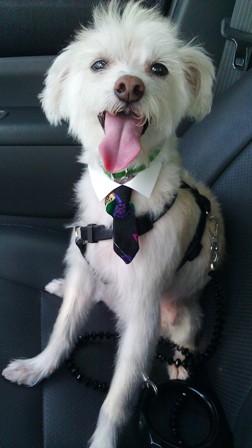
Smart Pet Travel Guide: Planning, Preparation, and Insights from Our Summer Survey
Summer is here, and many pet owners are planning trips with their furry friends. According to our recent survey, over half of you (58%) will travel with your pets in the coming months. From the importance of safety to pet-friendly amenities, the insights we gathered offer valuable lessons for pet travel. Here's a guide to smarter pet travel, culminating in a link to our new DIY Guide for moving within the U.S.
1. Plan Ahead
Planning is essential when traveling with pets, especially during the bustling summer months:
- Check Pet-Friendly Accommodations: Make sure your pet will be welcome where you plan to stay.
- Pack Essentials: Bring water bowls, extra leashes, a first aid kit, and more.
- Review Requirements: If flying or crossing borders, understand paperwork and vaccine necessities.
2. Prepare Your Pet
Make sure your pet is ready for travel:
- Train Properly: Help your pet walk nicely on a leash and observe strangers' space.
- Allow Time for Bathroom Breaks: Select appropriate areas for your pet's needs.
- Consider Behavior: Evaluate your pet's temperament and behavior before travel.
3. Crowdsourced Advice
Utilize technology and social connections:
- Use Technology: Smartphone apps, blogs, and social media can guide you to dog parks, pet stores, etc.
- Ask Others: Reach out to other pet owners or search online for advice.
Survey Highlights
The survey provides an insightful snapshot of pet travel trends:
- Traveling Pets: Dogs (83%), Cats (29%), Ferrets (4%), Birds (4%).
- Travel Plans: This summer (58%), Within the next year (37%), Not traveling with pets (4%).
- Travel Priorities: Safety (83%), Price (12%), Convenience (4%).
- Challenges: Limited pet-friendly airlines (33%), Expensive fees (25%), Costly hotel pet fees (20%), Limited pet-friendly hotels (12%), Limited health information (8%).
- Importance of Amenities: Very Important (83%), Somewhat Important (16%).
- Adaptation: Willing to change original plans for pets (100%).
Our survey emphasizes the need for pet-friendly options and responsible travel. As pet owners, we must be diligent and proactive to ensure enjoyable and safe travels with our PET companions.
Are you planning a move within the United States with your pet? Don't miss our DIY Guide for Moving Within the U.S.. This comprehensive guide offers step-by-step instructions, expert advice, and everything you need to know about relocating your pet safely and efficiently.
Need personalized assistance? Contact us to speak with a PetRelocation specialist. We're here to help you every step of the way!
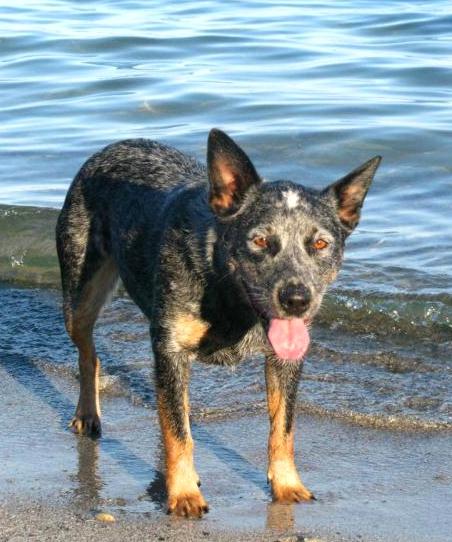
Finally, here are the highlights of our pet travel survey. See how they compare to last year's survey, and feel free to share your thoughts and ideas about summer pet travel!
What kind of pets do you travel with?
Dogs - 83%
Cats - 29%
Ferrets - 4%
Birds - 4%
How soon do you plan to travel with your pet?
This summer - 58%
Within the next year - 37%
I don't travel with my pet - 4%
What's most important when traveling with a pet?
Safety - 83%
Price - 12%
Convenience to my own travel arrangements - 4%
What's the most difficult part of traveling with a pet?
Not enough selection of pet friendly airlines - 33%
Airline pet travel fees are too expensive - 25%
Hotel pet fees are too expensive - 20%
Not enough selection of pet friendly hotels - 12%
Not enough information on health requirements - 8%
How important are pet friendly amenities to you when you travel?
"Very Important" - 83%
"Somewhat Important" - 16%
Would you change your original plans to accommodate your pet better?
Yes - 100%
Need help planning your pet's move? Contact us for assistance.
Bringing pets to United States?
Here’s what to know about moving pets to United States.
Author:
PetRelocation TeamHow to Keep Your Pet Fit and Healthy: A Guide to Weight Management
It's a growing concern that needs our attention: More than half of pet dogs and cats in our country are either overweight or obese. As alarming as it might sound, the health risks associated with pet obesity can be compared to the dangers of smoking in humans.
From ligament ruptures and joint pains to disc problems and asthma, overweight pets are prone to many health issues. As pet owners, it's our responsibility to ensure our furry friends are well-fed but not overfed and exercised, not neglected.
 Meet Fridge, a hefty cat weighing nearly 30 pounds that we safely relocated from Los Angeles to Florida. His story is a reminder of the importance of being mindful of our pets' weight and taking active measures to keep them fit and healthy.
Meet Fridge, a hefty cat weighing nearly 30 pounds that we safely relocated from Los Angeles to Florida. His story is a reminder of the importance of being mindful of our pets' weight and taking active measures to keep them fit and healthy.
Here are practical tips to ensure that your pet stays in optimal shape:
-
Listen to Your Vet: Your vet knows best. If they express concerns about your pet's weight, take their advice seriously.
-
Exercise Regularly: Engage in fun activities like walks, trips to the dog park, or playing with toys. Exercise benefits both you and your pet.
-
Mind the Serving Sizes: Pay attention to pet food labels and be cautious not to overfeed. Even a few extra pieces of food per day can result in weight gain.
-
Weigh Your Pet Often: Regularly tracking your pet's weight helps in the early detection of weight gain.
-
Leverage Technology: Use apps like Pet Phone to graph your pet's weight or Pet Nanny, which offers dietary guidance.
-
Avoid Overindulging with Treats: Love and care don't mean spoiling them with food. Focus on keeping them healthy by resisting the urge to overfeed.
-
Engage with Us: Share your pet health tips here or on our Facebook page. Your insights can help others in our community.
Maintaining a healthy weight is as vital for pets as it is for humans. By exercising responsible feeding habits and taking proactive steps to monitor and manage weight, we can provide our pets with a happier, healthier life.
Whether planning a pet relocation or simply wishing to keep your furry companion in the best of health, remember that their well-being is a priority. Need assistance with pet relocation or more guidance on keeping your pet healthy? Contact us to discuss your pet's unique needs with a PetRelocation specialist.
Author:
PetRelocation TeamTopic:
Pet:
Country:
Choosing the correct pet travel kennel is crucial for a secure and pleasant pet relocation experience. The right kennel ensures your pet's safety, comfort, and compliance with airline regulations.
Video Content:
- Measuring Your Pet: Demonstrate how to measure your pet's height, length, and width accurately. Emphasize the importance of precise measurements to ensure comfort.
- Choosing the Correctly Sized Travel Crate: Show various crate sizes and guide viewers in selecting the appropriate one based on the pet's measurements.
- Understanding "Airline-Approved" Travel Kennels: Explain what qualifies as an airline-approved kennel. Showcase examples and list features like ventilation, sturdy construction, secure door latches, and leak-proof bottoms.
- Crate Training Tips: Offer tips for acclimating your pet to the kennel, emphasizing gradual introduction and positive reinforcement.
- Essential Accessories: Suggest accessories like water and food dishes, labels, or soft bedding, adhering to airline regulations.
- Final Safety Check: Demonstrate how to inspect the kennel before travel to ensure all parts are secure and in good condition.
Ready to get started? Here's a quick video that shows you how to measure your pet, how to choose the correctly sized travel crate, and what qualifies as an "airline-approved" travel kennel.
Have more questions or need expert assistance? Contact us to discuss your pet's move options with a PetRelocation specialist. We prioritize safety, comfort, and adherence to regulations, making your pet's travel a worry-free experience.
Bringing pets to United States?
Here’s what to know about moving pets to United States.
Author:
PetRelocation TeamGood day,
What will the approximate costs be for taking my dog to New Zealand?
Why put her in quarantine if all the tests are done? The quarantine seems very long and almost cruel. Can this be done in your home, or where is it done?
Thanks,
Ane
Hi Ane,
Moving your pet to New Zealand can be daunting, but with careful planning and preparation, it can be a smooth and successful process. One of the most important things to consider is the cost of quarantine and travel.
Note that New Zealand has recently made a few changes to its pet import fees -- you can read more about the updated fees. The cost of quarantine in New Zealand varies depending on the length of stay, the size of your pet, and the type of accommodation you choose. For example, a 10-day quarantine for a small dog in a basic kennel will cost around NZD 1,000.
Though according to the New Zealand pet import requirements, the preparation process takes about 180 days, only the final few days are spent in a quarantine facility. Before that, you are getting your dog ready at home, and if you fulfill the requirements accurately, your dog will spend 10 days in quarantine upon arrival in New Zealand. Luckily, South Africa is considered an approved country for direct import.
Most people find the idea of quarantine to be pretty scary, but when you learn more about the specifics, hopefully, you'll see that it's not so bad. Please read over these five myths about pet quarantine for some vital information.
It's also important to look over the official New Zealand government resources. If you'd like some assistance with your move, please get in touch with PetRelocation for a pet travel consultation.
We hope this helps to get you started, Ane. Good luck!
Pet Travel Question Details:
Name: Ane
Number of Pets: 1
Pet Type: Dog
Pet Breed: Miniature Dachshund
From: South Africa
To: New Zealand
Bringing pets to South Africa?
Here’s what to know about moving pets to South Africa.
Author:
PetRelocation Team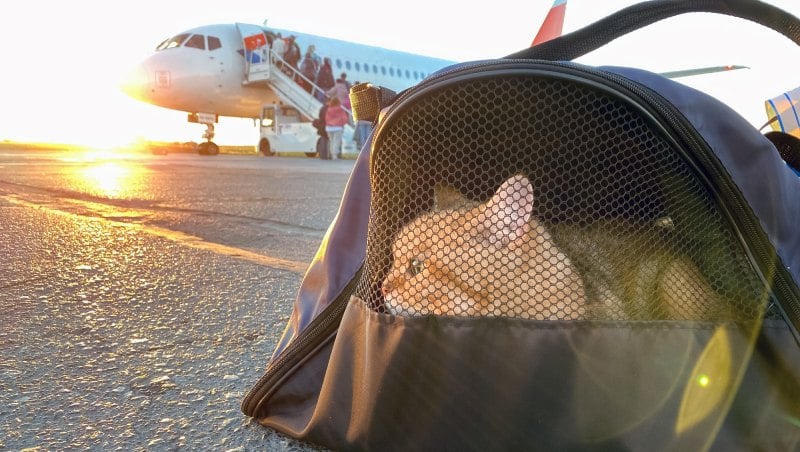
If you plan to travel with your cat on a plane, you might wonder how they'll go to the bathroom during the flight. While it's not the most glamorous topic, it's an important consideration for your furry friend's comfort and well-being.
Firstly, it's worth noting that not all airlines allow pets in the cabin, so you'll need to check with the airline you're flying with to see if it's an option. American Airlines, for example, does allow cats in the cabin, but there are some requirements you'll need to meet before you can bring your furry friend on board. You'll typically need a pet carrier that fits under the seat in front of you, and your cat must remain in the carrier throughout the flight.
When it comes to bathroom breaks, you won't be able to let your cat out of their carrier to roam the plane. Instead, you'll need to provide them with a portable 'litter box', which we recommend as shredded newspaper or an absorbent pad, preferably both.
How Long Can Cats Hold Their Pee While Traveling?
Cats, like humans, have a natural urge to go to the bathroom, and holding it in for too long can be uncomfortable and even painful. When the cat is in the plane, it's important to ensure that your cat has access to a litter box to relieve themselves as needed.
The amount of time that a cat can hold their pee while traveling on a plane can vary depending on several factors, including their age, size, and overall health. Generally, cats can hold their bladder for several hours, but it's important to provide them with regular opportunities to use the box, especially on longer flights.
Can I Take Cat Litter On a Plane?
If your cat is traveling in the cabin with you, you may be able to take them to the airplane bathroom to use the box, provided that it's not occupied and you can safely maneuver your cat and its carrier in the confined space. Alternatively, you can use a portable box in your seat area, although this may not be possible during takeoff and landing when the seat belt sign is on.
If your cat is traveling in the cargo hold, it's important to ensure they can access their box and absorbent materials in their carrier. If possible, you can work with the airline to arrange a designated bathroom break for your cat during a layover.
Does Feeding and Watering My Cat on the Plane Make Them Need to Go to the Bathroom Sooner?
In terms of cat food and water, it's best to avoid feeding your cat right before the flight to prevent an upset stomach. Instead, you can offer them water during the flight by using a water dispenser attached to their carrier or by offering them water in a small dish that can fit in the carrier. It's also worth noting that some airlines may require a health certificate for your cat before they can fly.
When going through security screening, you'll need to remove your cat from their carrier and place the carrier through the metal detector. Your cat will typically undergo a separate screening process in a carrier, either through the X-ray machine or a handheld scanner. It's a good idea to get your cat used to their carrier before the flight by taking them on car rides or short trips in the carrier.
In summary, while it might seem daunting to fly with your cat, it's definitely doable with some preparation. Ensure you have a suitable pet carrier, a portable box with shredded newspaper, absorbent pads, and water for your furry friend. And don't forget to check with your airline beforehand to ensure you meet all their requirements for traveling with pets.
Looking to ship your pet? See how PetRelocation can help you today!
Author:
PetRelocation Team Dog Transport from Romania to the UK: Quarantine and Import Regulations
Dog Transport from Romania to the UK: Quarantine and Import Regulations
Hi PetRelocation,
Can my rescue dog come straight from the airport to my home or does he need to go into quarantine?
Thanks,
Lisa
Hi Lisa,
According to the pet import requirements for the UK, your dog will not need to fulfill a quarantine as long as you follow the correct procedures carefully. The UK does have a very specific entry process for pets, but this usually only takes a few hours upon arrival, and then pets are free to go home.
Here are the main steps you need to follow according to the latest UK pet import regulations:
1. Microchipping
Before anything else, your dog must be microchipped. The microchip must meet ISO standards 11784 and 11785, and the microchipping should be done by a qualified individual such as a vet, a vet nurse, or someone trained in microchipping.
If your pet was tattooed with an identification number on or before 3 July 2011 and all the requirements are met, a microchip may not be necessary.
If the microchip cannot be read or can only sometimes be read, you must take additional steps. If the microchip cannot be read, you must repeat the preparation process, including rechipping, revaccination, and new blood tests. If the microchip can only sometimes be read, your vet can rechip your pet and record the necessary information in the pet passport.
2. Rabies Vaccination
Your dog must be vaccinated against rabies after being microchipped. If the microchipping and vaccination are not done in the correct order, the vaccination will need to be done again.
3. Travel Arrangements
When planning your dog's travel, use an approved route and check with your travel company about their pet travel policies. If your dog is traveling with someone else, you must authorize this in writing.
4. Additional Requirements
If you're planning to sell, rehome or transfer your dog's ownership, if your dog is arriving more than 5 days before or after you arrive, or if you're bringing more than 5 pets, there are additional rules you must follow.
If these procedures are not correctly followed, your dog may be put into quarantine for up to 4 months or refused entry.
As you can see, there's much to arrange for your pet's move. At PetRelocation, we're here to help you navigate this process. You can fill out our online consultation form if you're interested in our services.
Our website also has a wealth of information about bringing pets to the UK and other pet travel topics.
Thanks for your question, and good luck with your trip!
PetRelocation Team
Bringing pets to UK?
Here’s what to know about moving pets to UK.
Author:
PetRelocation TeamMoving to another country can be a complex process, and if you're planning to bring your beloved pet with you to the UK there are additional steps you need to consider. This guide will provide the essential information you need to help ensure your furry friend can make the journey with you safely and legally.
Microchip
First and foremost, your pet should be microchipped. This microchip serves as a permanent ID for your pet and should be implanted before any vaccinations are administered. The microchip number needs to be recorded in the pet's health certificate or passport.
Rabies Vaccination
Next, your pet must receive a rabies vaccination. This vaccination should be at least 21 days old at the time of the pet's final health examination before departure. It's important to note that the vaccine must be administered after the microchip is implanted. There are different requirements for the validity of the vaccine depending on whether it is a one-year, two-year, or three-year vaccine. The vaccination record must show the pet's date of birth, microchip number, vaccination date, vaccine manufacturer and product name, vaccine batch number, the date the vaccination is valid, and the vet's signature and contact details. Regular booster vaccinations are also required for your pet. This rule applies to pets coming from EU countries and listed countries such as the United States -- if you're coming from an unlisted country, stricter rules will apply.
Transfer of Residency (ToR) Declaration
When moving to the UK with pets, you will need a ToR Declaration, which replaces the C5 Customs Form. This form can be secured before travel, or a tax can be paid upon arrival. Applying for the ToR in advance is advisable, as it can take two weeks to 30 days to process. If you arrive without this form, a Customs VAT will be payable on deposit before the pet is allowed to be released, which can be expensive.
Five Day Rule
Pet owners must fly within five days of their pet in order for the move to be considered "non-commercial". If you can't meet this Five Day Rule, the move will still go ahead, but it will be considered a commercial move, which increases costs and changes the import requirements and timeline.
Tapeworm Treatment for Dogs
If you're traveling with a dog, it must usually have a tapeworm treatment.
Travel Company Policies
Before you travel, check if the company you’re traveling with will accept your pet for travel. Some companies also require proof that your pet is fit and healthy to travel, such as a letter from a vet or certain information in your pet passport.
Authorizing Someone Else
If you can't travel with your pet, your pet can travel with someone else if you've authorized it in writing.
Important Note
Remember, these rules apply to Great Britain (England, Wales, and Scotland). There are different rules for pet travel in Northern Ireland. Also, be aware that if you're planning to sell, rehome, or transfer the ownership of your pet, if your pet is arriving more than 5 days before or after you arrive, or if you're bringing more than 5 pets, there are additional rules that you need to follow.
While this guide gives a broad overview of the requirements for moving pets to the UK, it's important to check the latest regulations on the official UK government website or contact a professional pet relocation service to ensure you have the most up-to-date information. Regulations can and do change, so confirm the current requirements before you make your plans. Safe travels!
We're thrilled to introduce our new course: "Moving Your Pet From the U.S. to the United Kingdom: The Ultimate DIY Guide". Designed for pet owners planning a move from the United States to the United Kingdom, this comprehensive course equips you with the knowledge and skills necessary to relocate your pet. It's the same proven process our team uses when working with clients, and it's all available at your own pace. The course covers everything from navigating country regulations and paperwork to facilitating travel logistics, making your pet's journey as seamless as possible
Have questions? Our UK team is here to help! Read more about bringing pets to the UK, and contact us if you're ready to set up a pet transport consultation.
Bringing pets to UK?
Here’s what to know about moving pets to UK.
Author:
PetRelocation TeamLayover and Transit Requirements at Airports

Every pet owner planning international travel has pondered this question: "What do I need for layovers in different countries when traveling with my pet?" We often receive queries related to this concern. For example, a recent question was:
"I am planning a journey from India to Seattle via Amsterdam using KLM. There's a four-hour layover in Amsterdam. Do I need to get my pet microchipped or conduct a blood titre test for this layover?"
This question raises an important aspect of pet travel - understanding the requirements during transit and layovers. I
Understanding Layover and Transit Rules
The answer to this question brings up an important aspect of pet travel - understanding the requirements during transit and layovers. It's not a straightforward answer as it depends on two significant factors:
1. Are You Switching Airlines?
The first factor to consider is whether you're switching airlines during your journey. If you're transiting through another country and changing airlines, the first airline will treat your layover city/country as the final destination. This means you'll need to meet that country's import requirements and clear your pet through customs before your next flight.
2. How Long Is the Layover?
The second factor is the duration of your layover. If your layover in any country extends beyond 24 hours, it may no longer be considered a transit. In this case, you'll need to meet the import requirements for that country.
Common Transit Countries and Their Requirements
Many pet owners are transiting through the same airports due to popular travel routes. Here are a few common ones with their specific requirements:
- Amsterdam, Netherlands (AMS): Pets transiting through Amsterdam without changing airlines typically do not require a blood titre test or microchip if the layover is less than 24 hours.
- Frankfurt, Germany (FRA): Germany has strict pet transit regulations. A transit permit and proof of rabies vaccination are mandatory, even for a layover.
- Dubai, United Arab Emirates (DXB): Transit through Dubai requires a valid import permit, even for layovers.
These are just examples, and requirements can change, so it's always best to verify the latest regulations with the airline and the embassy of the transit country.
Ensuring Pet Comfort During Layovers
While navigating transit and layover requirements is important, so is ensuring your pet's comfort during travel. Here are a few tips:
- Keep a familiar toy or blanket in the carrier: Familiar smells can help soothe pet anxiety.
- Hydrate your pet: Make sure your pet has access to water throughout the journey. A freezable water dish can be a good solution for providing water without making a mess.
- Feed your pet wisely: Don't overfeed them before the journey to prevent them from getting sick. Small, easy-to-digest meals are best.
Preparing for Emergencies
Despite our best efforts, unexpected events can occur. If your flight is delayed or canceled, have a backup plan. Keep the contact details of pet-friendly hotels or boarding facilities near your transit airports handy.
Getting Help
At PetRelocation, we understand that planning international pet travel can be complex. Our team of experts is here to help, ensuring your pet's journey is safe and as stress-free as possible. Contact PetRelocation if you'd like assistance planning your pet's safe relocation, and happy pet travels!
Bringing pets to United States?
Here’s what to know about moving pets to United States.
Author:
PetRelocation Team
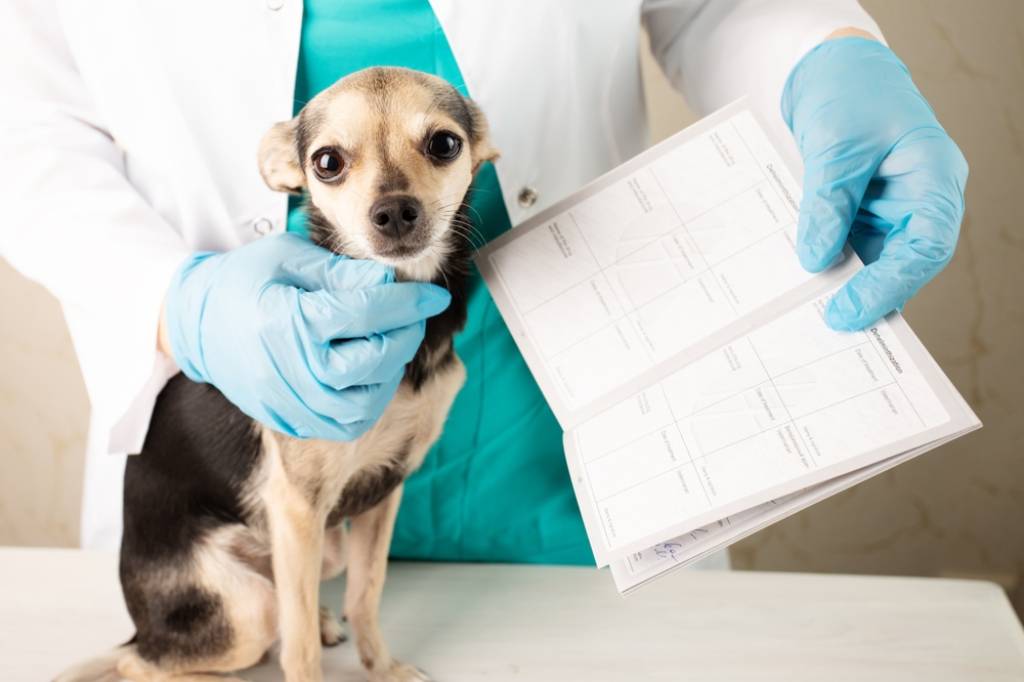
Are you considering traveling with your pet and wondering what is a health certificate for dogs? If so, you’re not alone. Many pet owners are confused about the purpose of obtaining a health certificate and how it affects their travel plans.
In this article, we'll answer any questions related to the topic. From how long they're valid and if dogs need a certificate for air travel, to cost and purpose. We also cover exactly which tests are included in these essential documents so that you can be sure of your pet's well-being. Keep reading to get all the information you need.
What is a Health Certificate for Dogs?
A health certificate for dogs is a document that certifies that your pet is in good health and up to date with all of their vaccinations. It's an important part of owning a dog, as it helps ensure the safety of not only your pet but also other animals around them.
A health certificate can be obtained from a veterinarian after they have conducted an examination and ensured that your pup has received all necessary vaccinations. The certificate will typically include information such as:
- Name
- Breed
- Age
- Sex
- Medical history
- Vaccine records
- Any other information needed to certify good health
Make sure you have the necessary paperwork by visiting the Animal and Plant Health Inspection Service (APHIS) website, where you can learn about health certificate requirements for each country. Having this document on hand can help provide peace of mind for both you and your furry friend!
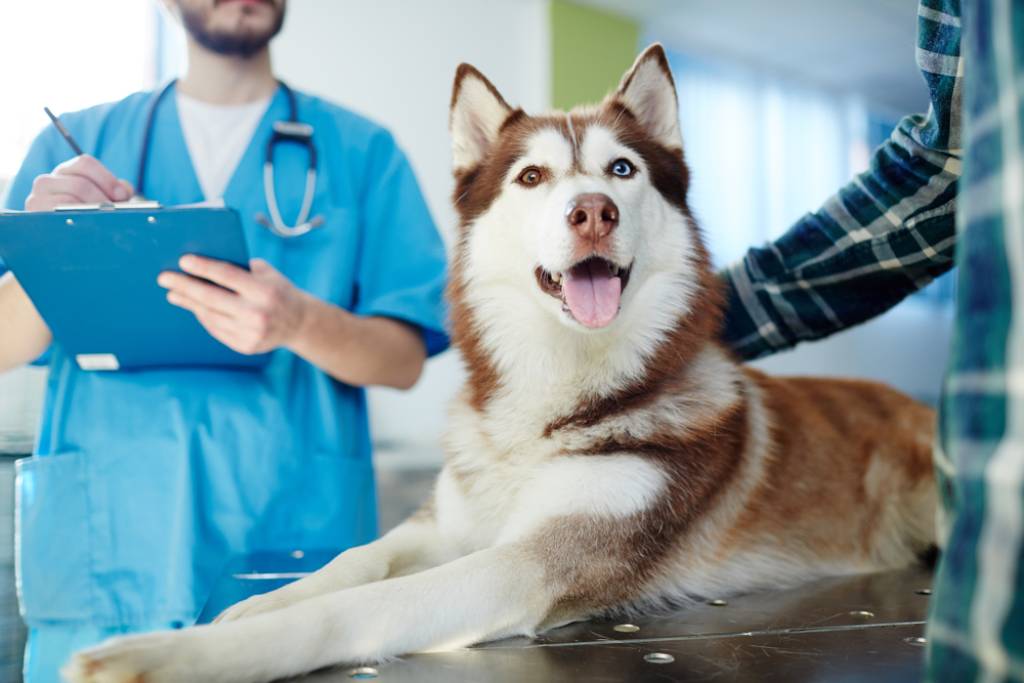
How Long Does a Dog Certificate of Health Last?
It is essential to be aware of the period that a veterinarian-issued health certificate for your pup will remain valid. Ultimately, it can range from 10 days up to six months prior to travel.
The USDA-APHIS office establishes this timeline based on destination requirements, so make sure you plan ahead and book an appointment with a vet when needed in order to ensure stress-free travels!
Certificate of Good Health: Dog Air Travel
Traveling with your pup can be a challenge since most airlines require up-to-date health certificates for dogs. This makes it important to double-check their regulations before you take off. To make sure everything is in order, the certificate must not be more than 10 days old. However, always consider checking directly with the airline as some places may have stricter requirements.
Cost of a Health Certificate for Dogs
Getting a pet health certificate for your beloved companion is an important step in providing quality care. Depending on their age and current state of health, the cost may range anywhere from $50 to $200.
The process involves verifying that all necessary preliminary veterinary requirements have been met, such as microchipping, vaccinations, and bloodwork tests. By taking the necessary precautions, you can keep your pup healthy and content!
The Benefits and Details of a Dog Certificate of Health
A health certificate for dogs is an important document that provides assurance to pet owners and helps protect the public from diseases.
In order to receive this certificate, vets must thoroughly inspect their canine patients and verify the animal is healthy enough to travel or be moved across state lines or internationally. The vet will check for any signs of infectious disease, as well as look at the overall physical condition of the dog including checking eyes, ears, nose, teeth, and skin.
They may also take blood samples or perform other tests in order to ensure they are providing a safe pet for transport. Additionally, any vaccines needed will be administered in order for the dog to obtain its health certificate.
Responsible pet ownership is a must, and having your dog’s health certificate can provide comfort. Besides being proof of good health for travel or transfers in ownership, it also sets specific standards to meet when entering competitions or shows. A health certification not only helps guarantee the safety and well-being of our canine companions but assures us owners that we are doing all we can for them.
Protect Your Pet with a Health Certificate
Having a health certificate for your pup is an important part of responsible pet ownership. This document certifies that your dog is disease free and has received all necessary vaccinations, providing you with the assurance that they are safe to travel or be moved across state lines or internationally.
Got your pet's health certificate and ready to take them on an adventure? Take advantage of our dog shipping services for a smooth journey.
Author:
PetRelocation Team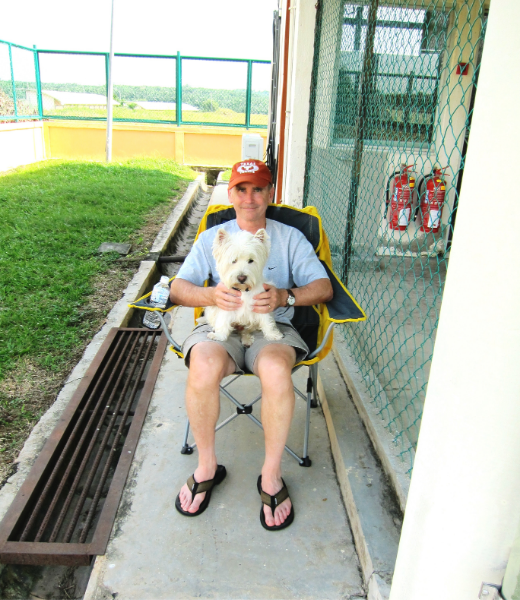 Pet Travel to Malaysia and Kuala Lumpur Quarantine Station
Pet Travel to Malaysia and Kuala Lumpur Quarantine Station
Navigating the pet relocation process to Kuala Lumpur, Malaysia, can be challenging, especially when dealing with the Kuala Lumpur Animal Quarantine Station (KLAQS). We've assisted numerous clients with this process, and we're here to answer some of the most frequently asked questions about KLAQS and pet conditions. If you're new to pet travel, check out our comprehensive Malaysia country profile page to learn more about transporting your pet to Malaysia.
Location and Contact Information of Kuala Lumpur Animal Quarantine Station (KLAQS)
- KLAQS is located at the Kuala Lumpur International Airport in Sepang:
- Animal Quarantine & Import Export Control Complex
- KL InternationalAirport (KLIA), Sepang
- Jalan Pekeliling 4
- 64050 Sepang Selangor
- Darul Ehsan
- Tel: 603- 87872377 / 79
- Fax: 603- 878722378
Visiting Your Pets at KLAQS: Rules and Guidelines
Pet owners and authorized individuals can visit their pets daily between 8 a.m. and 4 p.m. All visitors must adhere to the quarantine station's rules and regulations. Before visiting, you'll need to sign in at the quarantine station office and collect a visitor tag. If you'd like someone other than family members to visit your pet(s), notify your PetRelocation Coordinator in advance to inform KLAQS.
Accommodations at Kuala Lumpur Animal Quarantine Station
KLAQS provides comfortable accommodations for your pets. Dogs are rotated between a 40m indoor area and a similarly sized covered outdoor area. There's also a modern cattery for cats to stay. All enclosures are cleaned daily. The facilities are not air-conditioned, but you may supply a fan for your pet's comfort. For more details, feel free to contact your PetRelocation Coordinator.
Feeding Pets at KLAQS: Guidelines and Recommendations
You can send 1-2 servings of dry food with your pet(s) for feeding during any connections they might have on their journey. For their stay in quarantine, KLAQS will provide food or can accommodate special food and medication requirements if the food is available for purchase in Malaysia. Inform your Coordinator about the type of food your pet needs, and they will assist in procuring it. Please also let your PetRelocation Coordinator know the exact feeding instructions for your pets.
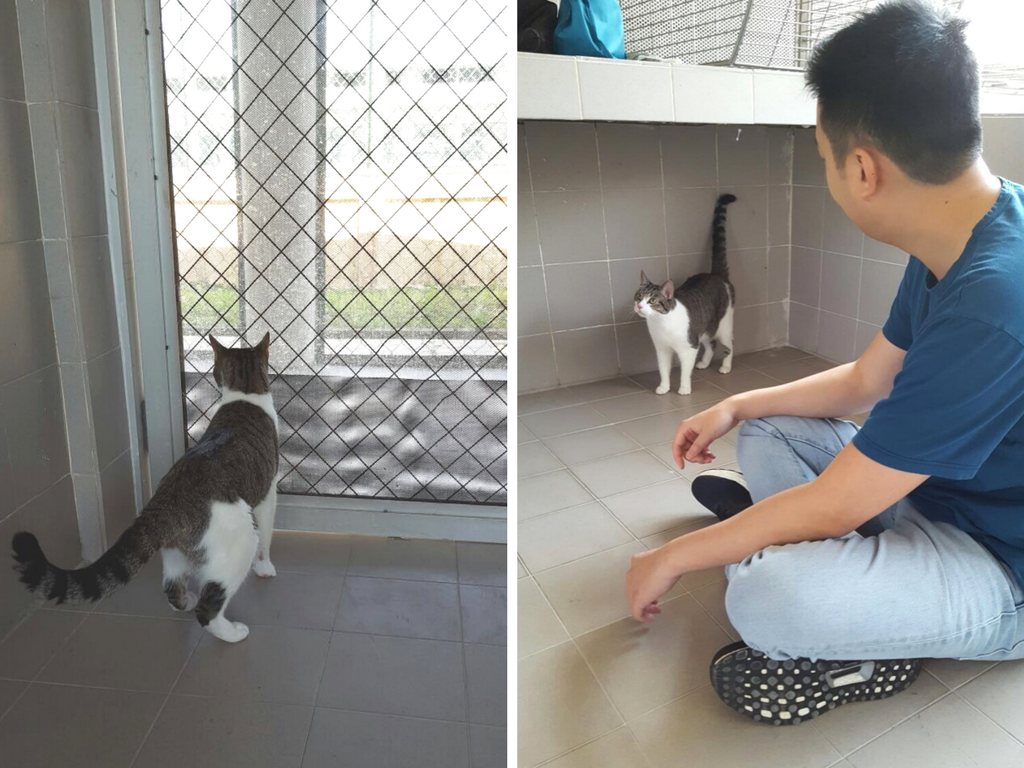
Sunny the cat hangs out in quarantine at KLAQS.
Take a look at some of our successful pet relocation stories to Malaysia, like the story of three Westies we moved here. For a more in-depth look at the KLAQS facilities, check out Archie's Move: A Closer Look at Quarantines and Pet Travel to Kuala Lumpur.
Here's the story of three Westies we moved here. For a more in-depth look at the KLAQS facilities, check out Archie's Move: A Closer Look at Quarantines and Pet Travel to Kuala Lumpur.
Pet travel to Malaysia can be a seamless process with the right guidance and preparation. Don't hesitate to contact PetRelocation to discuss how we can ensure the safe travel of your beloved cat or dog to Malaysia. We're here to help with all your pet travel needs!
Happy pet travels, and as always, contact PetRelocation to discuss how to ship your cat or dog safely.
Bringing pets to Malaysia?
Here’s what to know about moving pets to Malaysia.
Author:
PetRelocation TeamName: Pierre
Number of Pets: 3
Pet Type: Cats
From: Switzerland
To: USA
Hello PetRelocation, We will be moving from Switzerland to the US in three or four months with our three cats. I was told that there were two options for move the cats: one with us in the plane cabin and the other one being in the cargo hold. What do you recommend? -Pierre
Hello Pierre,
Great question. Regarding traveling with your cat, there are two main options: cabin travel and cargo travel. Each option has its pros and cons, so it's important to weigh them carefully before making a decision
Cabin Travel for Cats
Cabin travel is the most popular option for cat owners. It allows your cat to travel with you in the cabin of the plane, which can be less stressful for both of you. Here are some of the pros and cons of cabin travel:
Pros:
- Your cat can stay close to you, making them feel more secure.
- You can keep an eye on your cat throughout the flight.
- This is typically less expensive than cargo travel.
Cons:
- Some airlines may charge a fee for cabin travel.
- Cabin space is limited, so getting a seat that will accommodate your cat's carrier may be difficult.
- Cats may be exposed to more noise and activity in the cabin than in cargo.
- If your cat is not used to traveling, they may be more stressed in the cabin than in cargo.
Cargo Travel for Cats
Cargo travel is a less popular option for cat owners, but it may be a better choice if your cat is not used to traveling. When traveling in cargo, your cat will be placed in a climate-controlled area of the plane. Here are some of the pros and cons of cargo travel:
Pros:
- Cargo space is more plentiful than cabin space, so getting a seat that will accommodate your cat's carrier is easier.
- Cats may be less stressed in cargo than in the cabin, as they will be away from the noise and activity of the plane.
- Cargo is typically cooler and quieter than the cabin, which can benefit cats sensitive to heat or noise.
- Large or multiple pets often have to travel in cargo due to size and space limitations.
- The cargo hold is pressurized, just like the cabin, and the air circulated is the same.
Cons:
- Cargo travel can be discontinued or restricted in certain situations, such as extreme temperatures or on certain flights.
- Some airlines may charge a higher fee for cargo travel than cabin travel.
- There might be limitations on transferring pets in cargo to other airlines
It is important to do your research and compare the pros and cons of cabin and cargo travel before deciding. You should also check with your airline to see if they have any specific requirements for traveling with cats.
In addition to the above, here are some additional tips for traveling with your cat:
- Start early. Give yourself plenty of time to get your cat used to traveling. Start by taking them on short car rides and gradually increasing the trip length.
- Crate Training: Train your cat to enjoy their travel crate and leave it out in the house for them several weeks to months prior.
- Pack a comfortable carrier. Ensure the carrier is big enough for your cat to stand up and turn around. It should also have plenty of ventilation and a soft bed.
- Bring along your cat's food and water. Feed your cat their usual food and water before and after the flight. You may also want to bring along a small bowl of water in case your cat gets thirsty during the flight.
- Keep your cat calm. Talk to your cat soothingly and pet them gently during the flight. You may also want to bring along a calming spray or diffuser.
- Be patient. Traveling can be stressful for both you and your cat. Be patient and understanding, and give your cat ample time to adjust to the new environment.
I hope this information helps you plan your next trip with your cat!
Spend some time thinking about these factors and review the Pet Import Requirements to the US.
Finally, don't hesitate to call us if you have further questions or want to speak to a Pet Relocation Specialist about arranging your move.
Good luck with everything, Pierre!
Author:
PetRelocation Team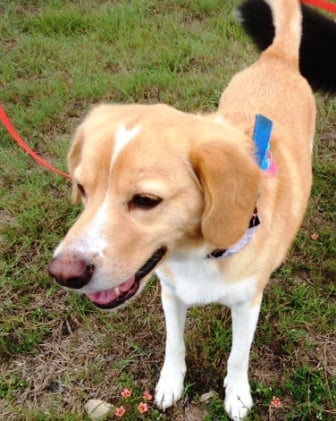 We recently received a question from Laura, who was looking for solutions for pet insurance while shipping her pets:
We recently received a question from Laura, who was looking for solutions for pet insurance while shipping her pets:
Hi PetRelocation!
I am curious if pet insurance is recommended/commonplace during the import/export process. Can you recommend good coverage? Are there any websites out there with more details?
Thank you! -Laura
Pet Travel Insurance
On the other hand, pet travel insurance is specifically designed to cover risks associated with traveling with your pet. This can include coverage for costs incurred due to travel delays, cancellations, lost or delayed pets, and even some medical emergencies that occur while your pet is in transit. For example, pet travel insurance could cover if your pet is scheduled to fly from San Francisco to London on United Airlines Flight UA 733, departing at 13:00 on 11 June 2023 and arriving at 16:45 on the same day the costs if there are any unexpected delays or cancellations.
However, it's important to note that pet travel insurance typically only covers incidents related to the travel itself and not broader health issues your pet may experience. It's also usually a one-time or short-term coverage for the travel duration.
Pet Health Insurance
Pet health insurance typically covers veterinary costs associated with your pet's illness or injury. This can include everything from routine check-ups and vaccinations to surgery and other medical treatments. It's more of a long-term coverage that ensures your pet's health needs are cared for, no matter where you are.
Most pet health insurance plans offer various coverage levels, from basic plans that cover accidents and illness to comprehensive plans that include wellness care. However, pet health insurance does not cover the costs related to travel or potential issues that may arise during travel, such as lost or delayed pets.
Use these as starting points for further pet health insurance research, do a few Google searches, talk to your vet, and check out Pet Insurance Review, which offers ratings and client reviews for pet insurance programs.
Choosing the Right Insurance for Your Pet
When choosing the right insurance for your pet, it's essential to consider your pet's specific needs, travel plans, and what each type of insurance covers. If you frequently travel with your pet or plan a significant relocation, pet travel insurance might be worth considering. However, pet health insurance is the go-to option for overall health coverage.
Remember, it's crucial to read the fine print of any insurance policy to understand what is and isn't covered. Always consult with your pet relocation consultant or insurance provider to ensure you make the best decision for your pet. Here are a few of the frequently asked questions:
- How much does pet travel insurance cost? The cost of pet travel insurance varies depending on the company, the type of coverage you choose, and the age and health of your pet. However, you can expect to pay anywhere from $20 to $100 monthly for pet travel insurance.
- How much does pet health insurance cost? The cost of pet health insurance also varies depending on the company, the type of coverage you choose, and the age and health of your pet. However, you can expect to pay anywhere from $10 to $50 monthly for pet health insurance.
- What are some of the benefits of pet travel insurance? Pet travel insurance can help you cover the costs of unexpected medical care, lost or stolen luggage, and other travel-related expenses. This can give you peace of mind when you're traveling with your pet.
- What are some of the benefits of pet health insurance? Pet health insurance can help you cover the costs of routine and unexpected veterinary care. This can save you money in the long run, especially if your pet has a pre-existing condition.
Need help arranging your pet shipping logistics for an upcoming move? Contact us to speak to a pet travel consultant.
Author:
PetRelocation Team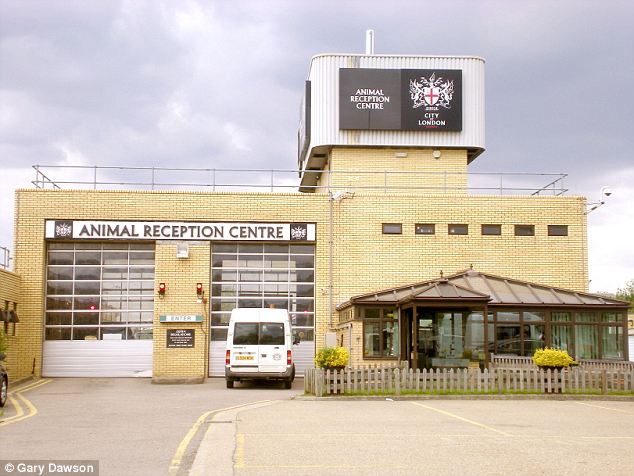 The Heathrow Animal Reception Centre (HARC) is more than just a hub for pet travel - it's a world-class facility dedicated to ensuring the safety and well-being of your pets during their journey. As one of the largest and most advanced pet reception centers globally, HARC plays a crucial role in the pet relocation process.
The Heathrow Animal Reception Centre (HARC) is more than just a hub for pet travel - it's a world-class facility dedicated to ensuring the safety and well-being of your pets during their journey. As one of the largest and most advanced pet reception centers globally, HARC plays a crucial role in the pet relocation process.
What is the Heathrow Animal Reception Centre?
The HARC is the world's leading animal reception facility in the heart of London's Heathrow Airport. Handling thousands of animals annually, it's designed to make your pets' travel experience as comfortable as possible. With a team of dedicated veterinarians and pet care experts, HARC goes above and beyond to ensure your pet's travel experience is safe and stress-free.
Why HARC is an Essential Part of Pet Travel:
When your pet arrives at Heathrow, they're taken directly to the HARC. The professional veterinary staff gives them time to rest, eat, and assess them. This process ensures that potential health issues are detected early and handled promptly, providing peace of mind during your pet's journey.
Understanding the Services at HARC:
From routine check-ups to emergency veterinary care, HARC provides many services to meet your pet's needs. The facility has comfortable kennels, feeding stations, and even a pet exercise area where your pet can stretch their legs after a long flight. All these amenities are designed to keep your pet comfortable and stress-free throughout their stay.
To save you some time, we've compiled several details about the HARC so that families transporting pets to the United Kingdom will know what to expect.
First, here's the process: upon arrival at Heathrow, pets are transferred to the HARC for their vet check and customs clearance — a process that can take 6–8 hours to complete (times can increase during peak times). After the check is finished, pets are released into the care of the designated pet owner or agent, who shows a photo ID.
The Centre is open every day (even holidays), and pets can stay for up to 24 hours at no additional charge. Pets can stay longer at a rate of £52 per additional day.
Here are a few facts about the HARC:
- All pets imported under the Pet Travel Scheme through the Centre get a vet check, microchip scan, bathroom break, and individual kennel to rest in a while waiting on pickup.
- About 16,000 dogs and cats passed through the Centre last year.
- About 2,000 birds, 200,000 reptiles, and 400 horses also visited.
- 40 dogs can be held here at once.
- The HARC employs about 30 full-time employees.
- A waiting room with sofas, TVs, and vending machines is available for families waiting for their pets.
Here is where the HARC is located in relation to the airport (click on the map for a better look):
Want to know more? Take a look at a couple of videos touring the HARC:
For additional information, here's a list of frequently asked questions and tips relating to the HARC, and if you like cute pet reunion pictures (who doesn't?), follow them on Facebook and Twitter.
Please contact us if you have more questions about moving pets to the United Kingdom (or anywhere else), and happy traveling!
Bringing pets to EU?
Here’s what to know about moving pets to EU.
Author:
PetRelocation TeamTopic:
Air Travel, Airlines, Airports, Ask the Experts, News, Incredible Experiences, QuarantinePet:
Cats, DogsCountry:
UK, EU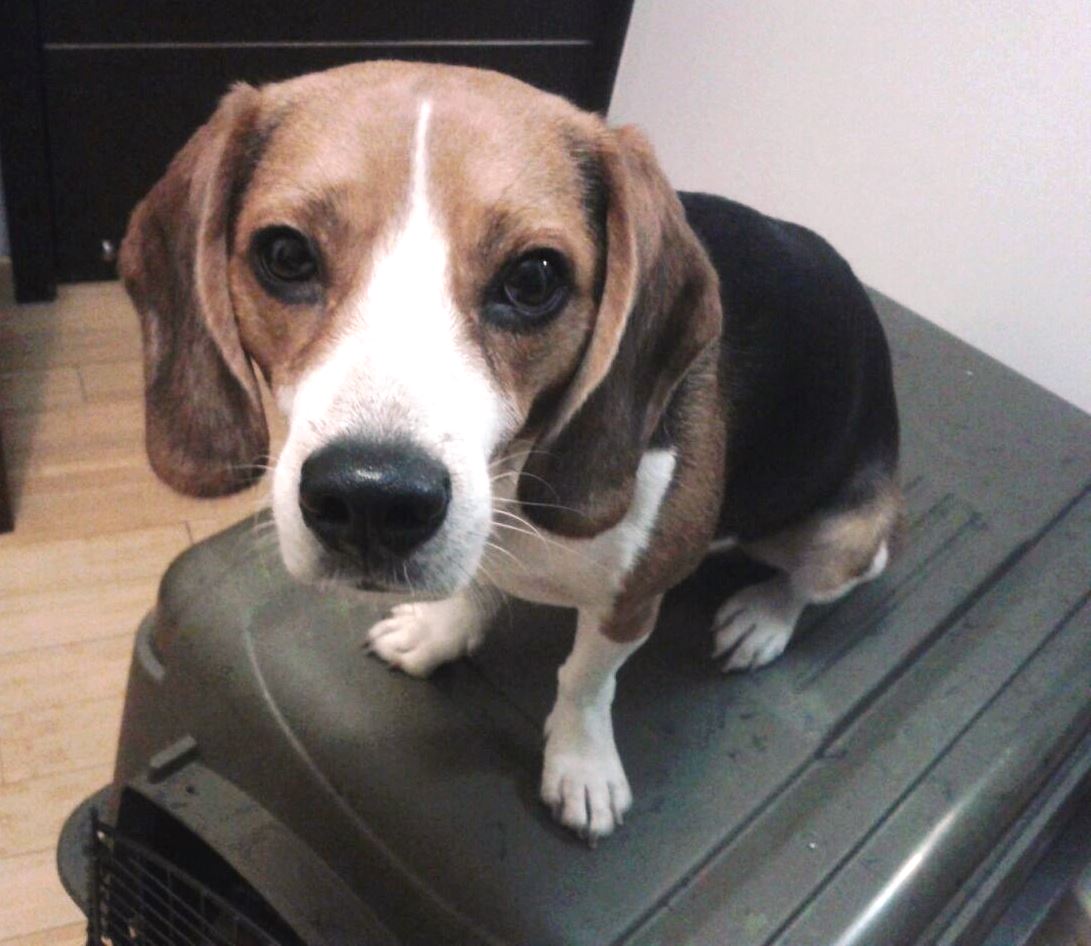 Pet Cargo Air Travel vs. Checked Baggage
Pet Cargo Air Travel vs. Checked Baggage
Hi PetRelocation,
Which transportation method is better when shipping my dog Kala -- cargo or as checked baggage? I would fly either into Boston/Logan airport or Bradley/Hartford airport -- my preference is Hartford, as it's closer to our home and smaller and less crowded. However, if I check her as baggage, I'm concerned about the layover and plane switch.
If she is shipped as cargo, it should be a direct flight, correct?
Thank you,
Janet
Thanks for your questions/concerns about the safest method of travel for your dog! Many other pet owners have pondered the same question, and we're happy to provide some guidance.
Having your pet travel via cargo instead of checked baggage would be best. When pets fly via cargo, they are not attached to your ticket, which means they can fly separately from you and be more easily tracked and monitored. Here is more information about how cargo travel works for pets and why it's our preferred method.
At PetRelocation, we use a few preferred airlines when transporting our clients' pets client's country or worldwide.
-
Delta Airlines: Delta has many East Coast destinations, and its pet policy is convenient to navigate. They have specific rules regarding dogs in the cabin and dogs in cargo. They do have some breed restrictions. They require health certification for pets traveling via cargo. The fee for domestic carry-on pets is $95 each way, and the fee for international carry-on pets is $200 each way.
-
Southwest Airlines: Southwest makes traveling with pets easy, especially around the southern United States. They allow dogs in the cabin only, with some limitations. They have a per-pet carrier fee of $95, and there are no specific breed restrictions. Their crate size limits for the cabin are 18.5” long x 13.5” w" de x 9.5” ta"l.
-
JetBlue: "JetBlue is a good choice for travel across the Caribbean. They allow dogs in the cabin with specific limitations, and they do not allow dogs in cargo. They charge a fee of $125 each way for cabin travel. They have a weight limit of 20 pounds for your dog and carrier combined3.
-
Alaska Airlines: This airline allows air travel with large dogs up to 150 pounds, including the pet and carrier. They have an each-way way fee for dogs traveling in cargo or cabins. There are some breed restrictions for travel via cargo, but these breeds are permitted to travel in the cabin if they fit into the required carrier.
UPDATE: New Course Alert - United States Packs
We have something exciting to share for pet parents who are planning a relocation within the United States! PetRelocation now offers a comprehensive course to assist you in this process. This course is designed to provide you with all the necessary knowledge and resources to ensure a smooth and stress-free relocation experience for your furry friend.
This course covers everything from understanding the different airline policies for pet travel to learning how to prepare your pet for the journey. It also provides step-by-step guidance on navigating potential challenges you may face during the relocation process.
We aim to make the pet relocation process more accessible and less daunting. Remember, you are not alone in this journey. Our expert team will guide you every step of the way.
For more information about the United States DIY Guide and to sign up, click here.
Bringing pets to United States?
Here’s what to know about moving pets to United States.
Author:
PetRelocation Team
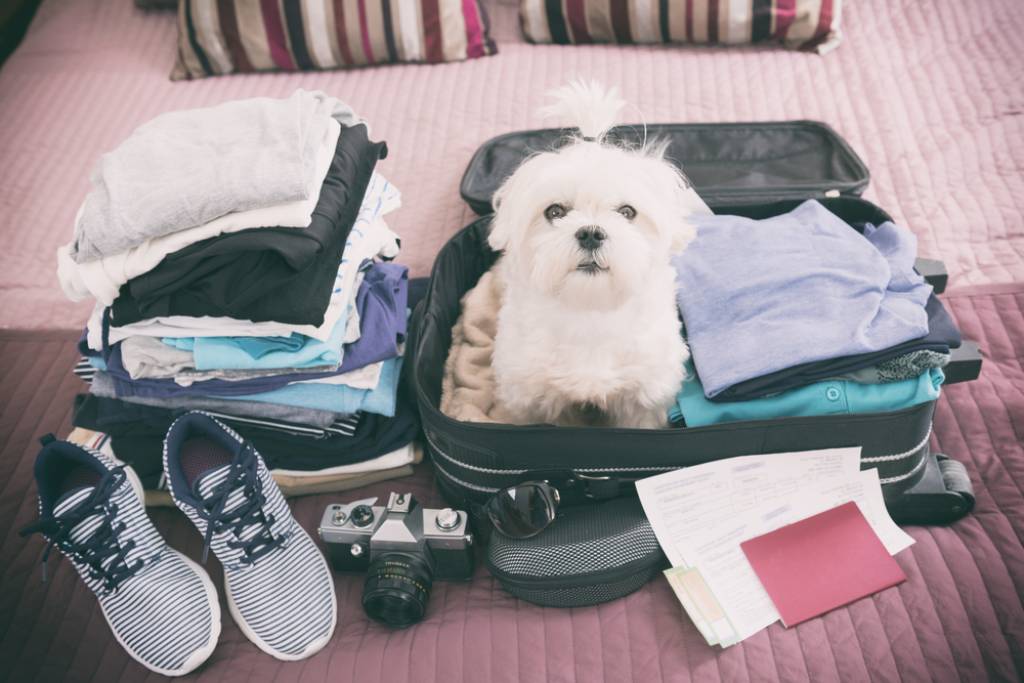
Pet owners around the world have been left wondering what to do in light of recent news that the Centers for Disease Control and Prevention (CDC) has issued a ban on dogs entering the United States. Many are asking themselves, “How long will the CDC dog ban last”? In this article, we’ll discuss all you need to know about these restrictions and what is needed before bringing your pup across international borders. Read on for a CDC dog ban update and find out how long it may be enforced.
The Reason Behind the CDC Dog Travel Ban
At the beginning of 2023, the CDC placed a temporary ban on dogs entering the United States from high-risk countries due to concerns about the canine rabies virus variant. Dogs that have been in one of these countries within six months are also subject to travel restrictions. This is due in part to an increase of over 450 cases at the height of COVID-19 where there were incomplete or fraudulent vaccination certificates accompanying pets attempting to enter the U.S.
This ban is necessary to protect both the health of imported dogs and public safety, as rabies can be fatal if left untreated. As the CDC states, “Rabies is over 99% fatal and is 100% preventable.” In fact, the United States successfully eliminated dog rabies in 2007, however, more than 100 countries still experience outbreaks. The CDC has put regulations in place to prevent the reintroduction of dog rabies, ultimately protecting animals and people from infection and avoiding costly containment efforts.
Vaccination against rabies is essential for CDC-approved animal care centers across all states to save lives. Taking these precautionary measures will help keep Americans and their pets safe from any potential outbreaks until further research is conducted into this dangerous virus.
How Long Will the CDC Ban on Dogs Last?
The CDC’s temporary suspension of imported dogs from high-risk countries started in February of this year. In order to protect public health, the ban will continue until July 31, 2023. With this extension, the CDC has implemented certain requirements for dogs to be allowed entry into the U.S. These include:
- Having a valid CDC Rabies Vaccination & Microchip Record.
- Obtaining either a CDC Dog Import Permit or a reservation at a CDC-approved animal care facility.
- Ensuring that the vaccination against rabies is administered when the dog is at least 12 weeks old and within 28 days before their arrival in America.
On top of that, dogs that have received a rabies vaccine and an ISO-compatible microchip within the U.S., are at least 6 months old, and arrive healthy can re-enter without an Import Permit if they enter through one of 18 airports with quarantine stations.
Additionally, those bringing three or more pets from high-risk nations must make prior reservations at approved animal care facilities when entering specific ports of entry for compliance purposes. Following these regulations will ensure your pup's safe return!
Overall, this temporary suspension for dogs is intended to prevent the further spread of dog-related diseases within communities across the U.S. – all while ensuring safety standards remain intact for those who bring furry family members from abroad.
The Impact of the Extended CDC Dog Ban
The recent extension of the CDC dog travel ban has had a significant impact on pet owners and those looking to adopt dogs abroad. This has caused many people considerable distress about the time it will take to get their beloved four-legged companions home. However, this period of suspension will be used as an opportunity to enhance the importation process to better protect both imported canines and their US families and communities.
In the meantime, dog owners should use this period of time of suspension as an opportunity to research further responsible dog ownership practices, such as proper vaccination schedules and preventative health measures.
How PetRelocation Can Help Ease the CDC Dog Ban Process
Traveling with a furry companion has become more complicated due to the extended CDC dog ban. This regulation was put in place to protect from rabies, but how long will this last? Fortunately, PetRelocation provides resources and expert assistance that can help you safely relocate your pup without any stress on your part, so you don't have to worry about taking your canine companions abroad!
If you’re looking for dog shipping services, see how PetRelocation can help you today. Our experienced team can help make the process go smoothly and safely.
Bringing pets to United States?
Here’s what to know about moving pets to United States.
Author:
PetRelocation Team Breaking Down the Costs of Pet Transport Services
Breaking Down the Costs of Pet Transport Services
Relocating a pet is a complex and delicate process that requires careful planning, attention to detail, and consideration for the well-being of your furry companion. At PetRelocation, we understand the concerns of pet owners and are dedicated to providing exceptional pet transport services. But why does it cost so much to move a pet? Let's break down the components of pet relocation to provide a clear picture of what's involved.
Essential Components of a Pet Move:
Import Permits and Government Endorsements
- Moving your pet to a new country may require obtaining formal permission and endorsements from government authorities, such as the USDA or Consular Offices. These documents ensure compliance with regulations and safe entry for your pet.
Vet Health Certificate
- A vet health certificate is often required to show the airline that your pet is healthy and fit to fly. This certificate is typically issued within 10 days of departure.
Pick-up and Delivery: A Comfortable Ride for Your Pet
- Your pet will be transported in a climate-controlled vehicle by a trusted driver, ensuring a safe journey from your home to the airport and to their new home upon arrival. Time and fuel costs for pick-up and delivery are essential considerations.
Your Pet's Plane Ticket: Choosing the Right Route
- The airfare for your pet is a significant part of the cost. Pets must be carefully routed through pet-friendly airlines, and any extended layovers must include comfort stops at pet hotels. Airlines also charge higher rates for live animals due to liability and the additional attention they require.
Airport Check-In and Customs Clearance
- Navigating check-in procedures and customs clearance requires specialized assistance. Tariffs, taxes, and country-specific fees are paid upon entry, and paperwork must be in order. Assistance with entry procedures ensures a smooth transition for your pet.
Personalized Care: A Dedicated Relocation Coordinator
- Your Pet Relocation Coordinator is your point of contact for every aspect of your pet's move. From researching flight options to securing import approvals, our specialists are dedicated to keeping you informed and ensuring a smooth move. Communication with customs offices, import permissions, and real-time updates are part of the personalized care we offer.
Trust the Experts: Your Pet's Well-Being Is Our Priority
- While it may be tempting to look for cheaper options, hiring experienced professionals ensures that your pet receives the best care throughout their journey. Our clients often express their gratitude for our attentive services and the peace of mind it brings. Your pet is more than just cargo—they're a beloved member of your family, and their safety and comfort are our top priorities.
Ready to talk about how to ship your pet safely? Contact us for a pet travel consultation.
Author:
PetRelocation TeamName: Vicki
Number of Pets: One
Pet Type: Dog
Pet Breed: Mix
From: China
To: Kansas, USA
Dear PetRelocation,
My husband is working in Handan, China, and he found a stray puppy that needed medical treatment and wants to bring it back home to join our family.
The puppy was taken to a vet and was malnourished with a severe eye infection. She was treated for 5 days and was picked up yesterday. He is currently keeping her at the office with him.
Could you please tell us exactly where to get information on what needs to be done for him to bring this dog home? The vet is planning to give the first set of vaccines next week. Still, I read somewhere that vaccines were not supposed to be given by a privately owned veterinarian in China to be able to be transported internationally.
Thanks,
Vicki
Hi Vicki,
Thanks for the question; we also applaud your kind-hearted plans!
Please take a look at the pet import requirements for the United States for an outline of what you'll need to do. The good news is that the United States has pretty simple requirements -- the dog will need proof of an updated rabies vaccine and a health certificate stating she is healthy and fit to fly (the airline requires this, and it should be issued within 10 days of departure).
Starting from March 1, 2023, new documentation requirements apply to dogs imported from high-risk rabies countries. Additionally, the CDC's temporary suspension for dogs entering the United States from high-risk countries for dog rabies has been extended through July 31, 2023. Review the CDC and USDA websites for the most current pet travel requirements.
You can take a look at the USDA website for more details or give our office a call if you're concerned that your vet is not properly certified -- since China is listed as a country affected by screwworm, you'll also need to show proof (using the vet's signature) that your dog has been inspected and found to be free of the condition.
Hope this helps... Please contact us if you have further questions, and good luck with your new dog!
Bringing pets to China?
Here’s what to know about moving pets to China.
Author:
PetRelocation Team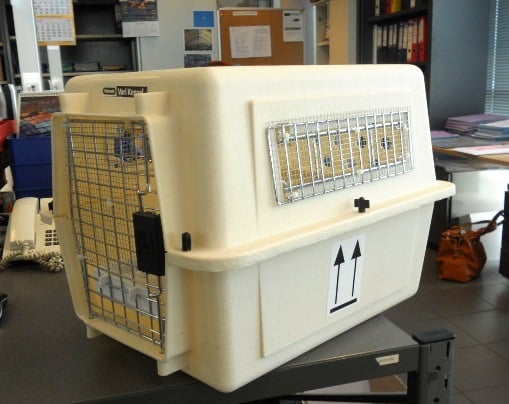 Shipping Rabbits by Air
Shipping Rabbits by Air
Hi PetRelocation,
I'm just wondering what I need to do documentation-wise to ensure Willie gets to move to the US from London as we corporate relocate back home.
Also, I'm clueless about how to move him physically. Does he go under the seat, in a luggage/pet area, or what?
Thanks! I Look forward to talking with you. Have a good day!
Susan
Hi Susan,
Thanks for your question! Per the USDA, the United States does not impose restrictions on rabbits entering the country, so you must follow the airline guidelines you choose. Typically a vet health certificate is required to show the airline the pet is healthy and fit to fly.
We often use British Airways to transport pets from London to the United States -- find out more about the procedure here. Pets are not allowed in the cabin on this route; they are transported in the cargo area, which is pressure and temperature controlled.
You'll also need an airline-approved travel crate. Often rabbit owners buy a small pet crate and modify it slightly in order to ensure safety... Please see the picture above for an example.
Let us know if you'd like help arranging Willie's move, Susan. Thanks for reading, and we hope to hear from you again!
Essential Steps for International Rabbit Travel
1. Documentation: Vet Health Certificate
While the United States does not impose restrictions on rabbits entering the country, you need to adhere to the guidelines of your chosen airline. A vet health certificate is typically required to confirm your rabbit's health and fitness for travel. Ensure that you have this documentation ready before your journey.
2. Air Travel: Cargo Area
Pets, including rabbits, are generally transported in the aircraft's cargo area, which is pressure and temperature controlled. Rabbits are not allowed in the cabin on most routes, so verifying the airline's pet travel policy is essential.
3. Travel Crate: Safety and Comfort
Selecting the right travel crate is vital for your rabbit's comfort and safety. Purchase an airline-approved pet crate and make any necessary modifications to ensure it's rabbit-friendly. The crate should provide ample space, ventilation, and security.
PetRelocation: Making Your Rabbit's Move a Success
Whether you're moving from London to the US or any other international destination, our team at PetRelocation is ready to assist you. With our expert guidance and support, you can relax knowing that your rabbit's journey is in safe and caring hands.
Pet Transport Question Details:
Name: Susan
Number of Pets: 1
Pet Type: Rabbit
Pet Breed: Lop Eared
From: London, UK
To: New Canaan, CT, USA
Looking for help with your pet's relocation? Contact us to discuss your pet transport options.
Bringing pets to UK?
Here’s what to know about moving pets to UK.
Author:
PetRelocation Team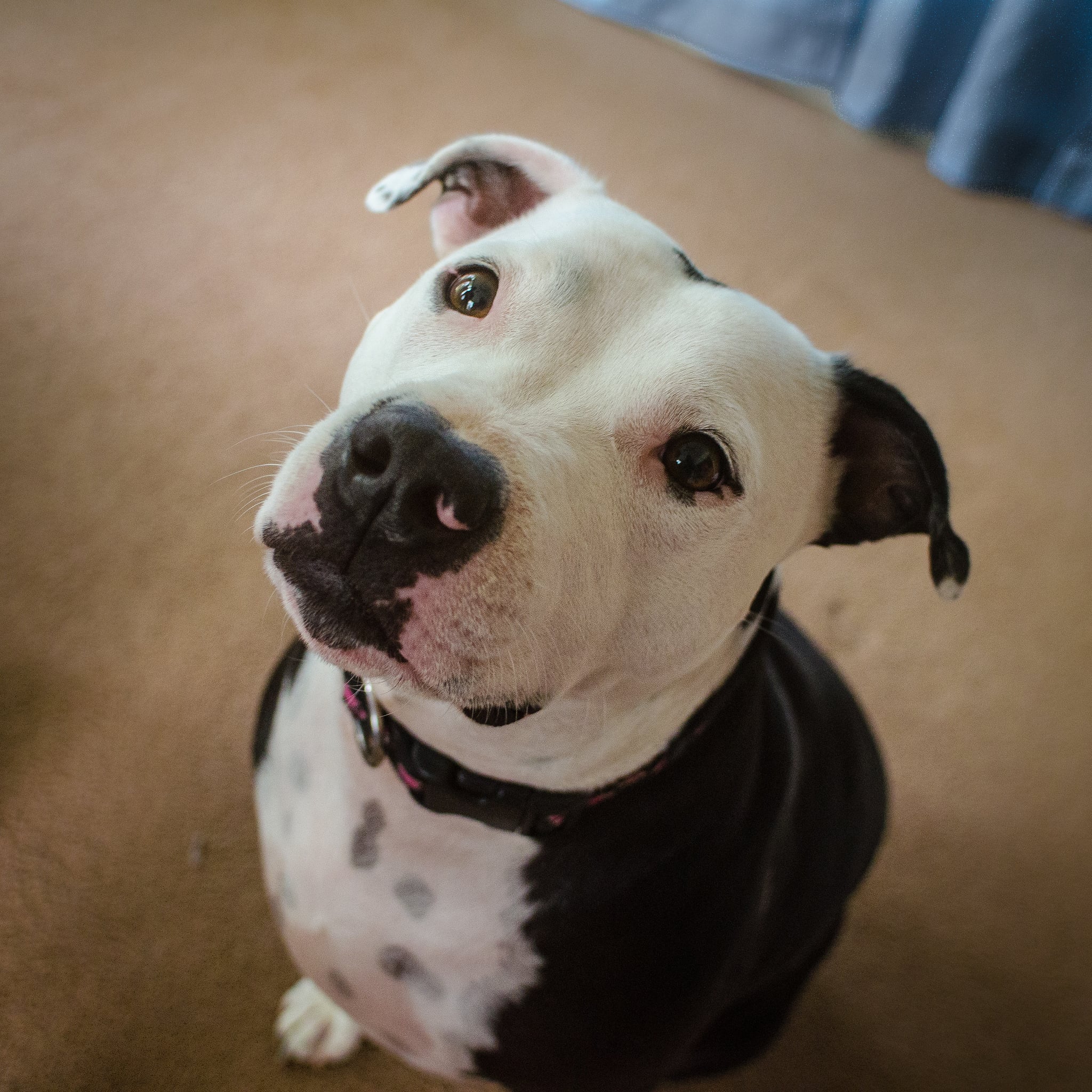 Hi PetRelocation,
Hi PetRelocation,
I've been researching individual airline guidelines for transporting dogs and have found that the restricted breeds are often subtitled "brachycephalic or snub-nosed breeds," which I thought referred to dogs such as Pugs and English Bulldogs.
However, the restricted breeds also list purebred or any mixed breeds of Pit Bull Terriers and American Staffordshire Terriers. Is this because they are considered brachycephalic/snub-nosed, or is it an additional/unrelated issue? I am considering a move to Europe and will not move without my dog, but I also do not want to take any extra risks if it is a greater health hazard for his breed to fly.
Additionally, I was unclear whether dogs transported in the cargo compartment can be flown in the crates that are metal only, or are you supposed to use the carriers that are plastic enclosures with metal doors?
My dog is well-behaved in his normal metal crate, where he can easily see out, but is often anxious and frightened inside of a plastic crate with a limited number of slits.
Thanks for your help!
Hello,
Thanks for the question; we'd be happy to offer some guidance. Breeds such as Pit Bulls and Staffordshire Terriers are often listed as "restricted" because of historic breed bans rather than health issues. Though you'll find plenty of evidence to support the fact that these breeds are no more dangerous than any other (as we're sure you already know), their size, appearance, and possible strength still dictate the policies of many countries and airlines.
We often refer to breed-specific legislation resources online when helping our clients plan international moves, as some countries do not allow certain breeds to be imported. For example, we helped a dog named Stan move to the Netherlands when his owner found out that he couldn't go to Denmark, where Pit Bulls are banned. Advance planning and creative solutions might also be necessary for your move, so it's great that you're starting the process now.
As far as travel crates, this is up to the airline. United (an airline we often choose to fly with) requires that Pit Bulls and a few other breeds travel in reinforced crates meeting IATA Container Requirement #82. KLM, Lufthansa, and British Airways are also airlines that we typically select, so we recommend researching these carriers' current rules and procedures when planning your dog's move.
We also recommend contacting the Ministry of Agriculture in Bulgaria and any local authorities and vets who may be able to shed light on how Pit Bulls are regulated (if at all) there. Every country is different, and it's best to learn as much as possible about laws and cultural attitudes before you go.
Finally, we recommend that all dogs have a period of crate acclimation before traveling. Especially because you mentioned your dog can feel nervous in certain crates, we suggest looking at these dog crate training tips soon.
Hopefully, this helps! Just let us know if you'd like some help arranging this move (you can fill out our online consultation form at your convenience), and good luck with everything.
Pet Travel Details:
Name: Biggie
Number of Pets: 1
Pet Type: Dog
Pet Breed: Pit Bull mix (though hasn't had DNA testing)
From: Chicago, USA
To: Bulgaria
(Photo credit: Chris/Flickr)
Bringing pets to United States?
Here’s what to know about moving pets to United States.
Author:
PetRelocation Team Crossing the US Canada Border with Pets
Crossing the US Canada Border with Pets
Whether relocating or taking a road trip, crossing the US-Canada border with your pet requires careful preparation. To ensure a smooth and hassle-free experience, it's important to familiarize yourself with the requirements for pet travel across the border. Let's explore the key steps to successfully driving across the US-Canada border with your beloved pet.
Key Requirements for Crossing the Border with Pets
Here's what you need to have and to know to cross the Canadian border with a pet:
-
Rabies Vaccine Certificate: Bring an original Rabies vaccine certificate for your pet. This document must include vaccine details, the pet's microchip number, and the administering veterinarian's signature.
-
International Health Certificate: Obtain an International Health Certificate within 10 days of departure. This certificate verifies your pet's health status and must be issued by a licensed veterinarian.
-
USDA Endorsement: Depending on the location, you may need to contact your local USDA office to have the health certificate endorsed. Different USDA offices may have varying preferences, so confirming this requirement is essential.
-
Be Well-Prepared: Border experiences can vary, with some agents being stricter than others. Ensure you have all necessary documents and anticipate potential questions about your pet's travel.
-
Safe Transportation: Follow best practices for transporting pets by car. Keep your pet securely buckled, pack extra supplies, and provide plenty of water for hydration.
Final Thoughts
As you embark on your journey with your pet, remember that careful planning is key to a successful border crossing. Have all documents ready and be prepared for any inquiries from border agents. You and your pet can enjoy a seamless and memorable adventure across the US-Canada border with the right approach.
Contact PetRelocation with any more questions about driving pets to Canada. We're happy to help!
Editor's Note: This post was originally published in May 2012 and has been updated with new information. Photo by meddygarnet via Flickr
Bringing pets to Canada?
Here’s what to know about moving pets to Canada.
Author:
PetRelocation Team Planning a trip to Puerto Rico with your furry companions?
Planning a trip to Puerto Rico with your furry companions?
Navigating the pet import regulations for Puerto Rico can seem complicated, but we're here to help! As a US commonwealth, pet travel to Puerto Rico is considered domestic if you're from a US state. This guide will walk you through the key information you need for smooth and stress-free pet relocation to Puerto Rico.
Dog & Cat Travel Requirements
-
Before you depart, obtain a Vet Health Certificate for your pet within 10 days of your travel date. This certificate confirms that your pet is healthy and fit for air travel, and it's required by most airlines.
-
Vaccinate your pet against rabies at least 30 days before your trip.
-
PetRelocation recommends that pets have all basic vaccinations and be microchipped for their journey.
-
For detailed information on Puerto Rico's pet import regulations, via the USDA.
Travel Logistics and Tips
-
The best option for pet travel to Puerto Rico is flying out of Miami. Getting to Miami via ground transport is the usual choice for pet owners. Amerijet is a preferred carrier for flights between Miami and Puerto Rico, as their pet-friendly cargo program prioritizes safe pet travel.
-
Preparing for pet travel? Here are a few tips: select an airline-approved travel crate, familiarize your pet with the crate ahead of time, and consult your vet for any health-related concerns.
-
As you start to plan your trip, remember these basic tips for any pet relocation: choose an airline-approved travel crate, help your pet to acclimate to the kennel well before it's time to move, and speak to your vet about any concerns or questions relating to your pet's health.
-
If you're busy with your move logistics and feel overwhelmed by your pet's move details, remember that professional assistance is available and can make the process much less stressful.
Still have questions about moving your pet to or from Puerto Rico? Contact us to speak to a Domestic Pet Travel Specialist.
Bringing pets to Puerto Rico?
Here’s what to know about moving pets to Puerto Rico.
Author:
PetRelocation TeamName: Connie
Number of Pets: One
Pet Type: Dog
Pet Breed: Miniature Pinscher Parsons Terrier Sharpei
From: Calgary, Alberta, Canada
To: London, England
Dear PetRelocation,
What are the travel requirements for my dog if we go from Canada to London?
Thank you,
Connie
Hi Connie,
Thanks for contacting us with your question about dog travel from Canada to the UK. We're here to help you navigate the process and ensure that your furry companion has a safe and smooth journey.
First, it's important to note that the pet import requirements for the UK have become more relaxed in recent years. While there used to be a 180-day quarantine, you'll be pleased to know this is no longer required.
As Canada is an approved non-EU country for pet travel to the UK, here are the key steps you need to follow:
- Microchip: Your dog must be microchipped for identification purposes.
- Rabies Vaccine: Your dog must receive a rabies vaccine after the microchip is implanted.
- Wait Period: You must wait at least 21 days from the day of the rabies vaccination before traveling to the UK.
- Vet Health Certificate: Obtain a health certificate issued by a licensed veterinarian, certifying that your dog is healthy and fit for travel.
We understand that relocating your pet can be a complex and sometimes overwhelming experience. That's why our team of pet relocation experts is here to offer comprehensive guidance, support, and coordination throughout the entire process. From understanding the import requirements to arranging safe transport for your dog, we're dedicated to making your pet's move to the UK as easy and stress-free as possible.
If you have any further questions or would like assistance with your dog's move to the UK, don't hesitate to contact us for a free quote. We invite you to explore our website and check out our social media channels to learn more about our services and meet some of the pets we've helped relocate.
Thanks again for submitting your question, and we look forward to assisting you with your pet's relocation journey.
Best regards,
The PetRelocation Team
Bringing pets to Canada?
Here’s what to know about moving pets to Canada.
Author:
PetRelocation Team Exploring Lufthansa's Pet Cargo Options
Exploring Lufthansa's Pet Cargo Options
Lufthansa, a world-renowned airline, goes above and beyond to provide a premier pet cargo program, ensuring your furry companions' safe and comfortable transport. Whether you're relocating internationally or planning a vacation, Lufthansa's animal cargo program is designed to cater to the needs of pet travelers.
Thinking of using Lufthansa to transport your dog or cat for an upcoming international pet move? Here's a video that offers a look behind the scenes, and read on to learn more about your options from Martin Riecken, the Head of Corporate Communications for Lufthansa.
Riecken was kind enough to answer a few questions about Lufthansa's top-notch pet-friendly options and offered some great advice for pet travelers.
How Lufthansa's Pet Program Works
Depending on their weight and size, Lufthansa transports pets either in the cabin or in the cargo hold of its passenger aircraft. In addition, Lufthansa’s wholly-owned Cargo subsidiary has its own animal transport business, a customized service guaranteeing the fast and competent transport of animals (either accompanied or unaccompanied by owners).
Pets that cannot be transported inside the aircraft cabin will be transported by Lufthansa in appropriate containers in an air-conditioned area of the cargo hold. Customers may also transport their pet in their container, provided it complies with the relevant IATA (International Air Transport Association) regulations.
State-of-the-Art Animal Lounge
Lufthansa's state-of-the-art Animal Lounge at Frankfurt Airport is a testament to their commitment to animal welfare. This 43,000-square-foot facility is equipped with adjustable stalls, individually-controlled climate areas, and distinct zones for export, import, transit, and health inspections, all of which adhere to the highest hygienic and veterinary EU regulations.
Lufthansa's Dedication to Pet Travelers
With decades of experience in animal transport, Lufthansa's dedication to meeting customer demands and providing high-quality services for transporting pets is unwavering. If you have questions or are considering flying with your pets, PetRelocation is here to assist you with your pet cargo travel options.
Bringing pets to EU?
Here’s what to know about moving pets to EU.
Author:
PetRelocation TeamSo, you’re moving to Europe? Paris! Brussels! Amsterdam! How exciting! Moving to a new country with your best friend—your pet—adds to the excitement of exploring new horizons. We want to make this journey as smooth as possible for you and your furry companion. The good news is that if the import steps are followed correctly, there is no quarantine for cats and dogs entering the EU from the United States.
At PetRelocation, we've created this comprehensive guide to help you navigate the process of bringing your dog or cat to the European Union. Let's take a look at our guidelines to ensure you are well-prepared for a successful move.
Time Requirements: Plan Ahead for a Stress-Free Move
- When starting from square one, you'll need at least 21 days to plan your pet’s move. However, we recommend allowing at least a month of preparation time.
- Pro Tip: Begin researching and preparing as soon as you know you'll be relocating to Europe. Adequate planning allows you to handle any unexpected situations and ensures your pet's comfort.
Vaccination Requirements: Preparing Your Pet for Travel
Your cat or dog must meet specific import requirements put in place by the European Union. Here's what you need to know:
- Microchip: All pets must have a 15-digit ISO-compatible microchip. If your pet has a non-ISO-compatible chip (usually having 9 or 10 digits), it may still be feasible to use. However, for a smoother customs clearance, we recommend obtaining the 15-digit chip.
- Rabies Vaccine: After microchipping, your pet needs a valid rabies vaccine, administered after the microchip is implanted. The vaccine must be at least 21 days old at the time of travel.
- Other Vaccines: Although no other vaccines are mandatory for entry into the European Union from the United States, we highly recommend keeping your pet updated on DHPP and Bordetella vaccines (for dogs) or FVRCP vaccine (for cats).
Final Veterinarian Appointment: The Importance of Health Certificates
- For export from the United States to any foreign country, your pet must have a country-specific health certificate issued by a USDA Accredited Veterinarian. This health certificate then must be sent to your state’s USDA office (or the office advised on the USDA website ) for endorsement.
- Pro Tip: Make sure the health certificate is not older than 10 days at the time of arrival into the EU. Plan your vet appointment accordingly.
Estimated costs for endorsement: Up to five pets can be be documented on one international health certificate. If you are traveling with more than five pets, you will incur costs for two endorsements. Currently UK health certificates are $38 USD per endorsement.
A few notes:
- Ask your veterinarian if they have the proper USDA accreditation. If your paperwork arrives at your state’s USDA office and it is issued by a veterinarian that does not have the proper accreditation it will be rejected & will cause delays for your pet’s move.
- The health certificate cannot be older than 10 days old at the time of arrival into the EU. Make sure to arrange this appointment in the proper amount of time
- The country-specific health certificates can be found on the USDA website. If the country you are traveling to is a non-English speaking country (Spain, Italy, Greece, etc...) your pet will need a bilingual certificate.
The good news is, the EU is one of the less stressful destinations since it requires minimal vaccinations, and preparation time and does not require a TITER test. However, we understand that the process can be daunting, and we would love to help!
Commercial vs. Non-Commercial Pet Travel: Understanding the "5-Day Rule"
- Pet owners must travel to the EU within five days of their pet’s arrival to avoid the move being labeled as a “commercial” shipment. This is often referred to as the "5-day rule" and applies to all countries in the European Union. If you cannot travel within five days of your pet, you can still send them a commercial health certificate. However, the timeline will be tighter, and a tax will be imposed upon the arrival of your pet.
- Commercial pet moves require a health certificate to be completed (and endorsed by a government entity) within 48 hours of the pet’s departure. If you don’t have a government office (like a USDA office in the United States, for example) nearby you may need to consider having your pet depart from a different city to make the short timeframe work.
- Once your pet arrives in the UK as a commercial move, you will be expected to pay at least 50 Euros or more depending on the size of your pet Also, the arrival process for a commercial move may take more time than a non-commercial move considering the stricter requirements.
Crate Training and Traveling as Manifest Cargo: Acclimating Your Pet to Their Travel Crate
- Most families moving to the EU with their pets find flying their pets as manifest cargo the safest and most convenient option. This means it’s important to start acclimating your pet to their travel crate early and practice crate training often.
- Pro Tip: If your pet is a very large dog, you may need to have a custom crate built to accommodate their size in manifest cargo.
Estimated costs for manifest cargo airfreight: Manifest cargo flights for pets are based on dimensional weight (or how much space your pet takes up in the aircraft). For international flights, these fees can range from $1,000 USD for a Chihuahua and up to $4,500 USD for a Great Dane.
Need an expert to help plan your pet’s move? Contact us to set up a consultation with our EU pet travel team.
Bringing pets to EU?
Here’s what to know about moving pets to EU.
Author:
PetRelocation Team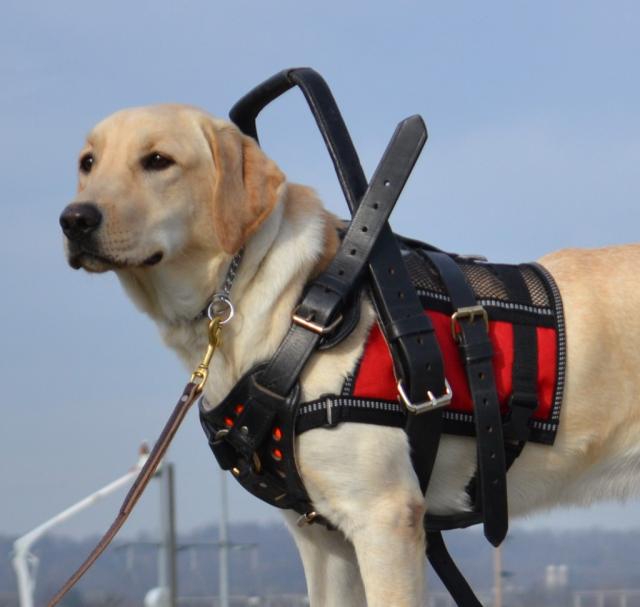
Navigating the World with Your Trusted Companion
Traveling internationally with a service dog offers unique challenges and opportunities. Service dogs are vital in providing assistance, independence, and companionship to their human partners. When planning international travel, it's essential to understand the specific procedures and requirements that apply to service dogs to ensure a seamless journey for both you and your furry companion.
At PetRelocation, we're here to guide you through the process and provide the information you need to travel the world with your trusted service dog confidently.
Airline Procedures and Best Practices for Service Dog Travel
Airlines often have different procedures when traveling with service dogs than regular pets. Here are some key points to consider:
-
In-Cabin Travel: Many airlines allow service dogs to travel in the cabin with their human partners. For example, United and Lufthansa have specific instructions for traveling with service animals. Be sure to review the airline's policy in advance.
-
Official Paperwork: Prepare to show official documentation verifying that your service dog is legitimate. This may include a letter from your medical doctor or mental health professional.
-
Seating Arrangements: Service dogs typically need to fit on the floor in front of the passenger seat and are not allowed to sit on the seat. Importantly, service dogs usually travel free of charge.
-
Advance Notice: Contact the airline to notify them that you'll travel with a service dog. Cabin space can be limited, so providing advance notice helps the airline make accommodations.
-
Country Import Rules: While airlines may have special provisions for service dogs, countries still have specific import rules, including vaccinations and paperwork. Research the import requirements of your destination country and allow adequate time to prepare.
-
Behavior Considerations: Carriage may be denied if a service animal behaves disruptively or disturbs other passengers. Properly trained service animals should not pose an issue.
-
Special Quarantine Exemptions: Certain countries may have quarantine exemptions for service dogs. For example, Australia allows service dogs to fulfill their quarantine at home with their owners instead of in a quarantine facility.
Proactive Planning for a Smooth Journey
In addition to verifying country import rules, contact the airline directly to inquire about procedures for traveling with a service dog. Information may not always be readily available online, and procedures may change over time.
Whether traveling to Australia or another international destination, planning is crucial to ensure a smooth and enjoyable journey for you and your service dog.
At PetRelocation, we understand the unique bond between service dogs and their human partners. We're here to support you every step of the way, providing expert guidance and personalized solutions to help you and your trusted companion explore the world together.
Photo Credit: www.servicedogproducts.com
Bringing pets to Australia?
Here’s what to know about moving pets to Australia.
Author:
PetRelocation TeamExperience First-Class Pet Travel at the Lufthansa Animal Lounge
Air travel with pets has evolved significantly, becoming safer and more transparent. However, navigating the details and processes of pet travel can still feel mysterious, especially for first-time pet parents. Lufthansa Cargo, a pet-friendly airline, has demystified the experience with a behind-the-scenes look at its dedicated Animal Lounge in Frankfurt, Germany.
The Lufthansa Animal Lounge is a modern and accommodating facility that provides first-class care for pets traveling to Frankfurt or transiting through the airport. The facility ensures a more orderly and less stressful travel experience for pets, giving pet parents peace of mind.
In this video, Lufthansa Cargo provides an exclusive tour of the Frankfurt Animal Lounge, showcasing the amenities, services, and dedicated staff that contribute to a safe and comfortable pet journey. From spacious kennels and exercise areas to expert veterinary care and attentive staff, the Animal Lounge is equipped to handle the unique needs of traveling pets.
PetRelocation frequently chooses Lufthansa for our internationally traveling pet clients. The airline's commitment to pet welfare and its exceptional Animal Lounge contribute to a positive travel experience. If you're planning to travel with your pet and want to explore safe and reliable options, Contact us at PetRelocation to find out how we can assist you.
Take a moment to explore the Lufthansa Animal Lounge in Frankfurt through this informative video and learn more about the first-class care your pet can experience during their journey.
Bringing pets to Germany?
Here’s what to know about moving pets to Germany.
Author:
PetRelocation TeamRELOCATING PETS IN AND OUT OF CHINA
Moving your pet to or from China can seem daunting at first glance due to the strict import rules and quarantine requirements.
While China's regulations are confusing, the good news is that several options for leaving and entering China are safe for pets – whether quarantine is required.
If you're ready to discuss a specific plan for your pet? Contact us to set up a consultation with our dedicated team here to assist you with a personalized consultation!
PET IMPORT REQUIREMENTS FOR CHINA
Chinese import protocols are strict concerning pets, and different cities and provinces may have varying requirements. To begin with, all pets entering China must meet the following conditions:
- Microchip: All pets must have a microchip compatible with international standards.
- Rabies Vaccinations: Pets must have a rabies vaccination within a year of departure (older than 30 days at the time of travel) and a second rabies vaccine.
- Rabies Titer Test: A rabies titer test is required for pets from non-approved countries. Pets from approved countries (e.g., New Zealand, Australia, the U.K., Japan, and Singapore) are exempt from the rabies titer test requirement.
- One Pet per Passport: A strict one pet per passport rule applies if entering China directly.
Failure to meet the above requirements may result in a 30-day quarantine and limit approved ports of entry. Additionally, many major cities in China require that dog owners obtain a dog license once the dog has arrived in the city.
Pro Tip: Always double-check the vaccination validity and microchip information before travel. Also, research the specific pet import requirements of your destination city in China to avoid surprises.
MOVING MULTIPLE PETS TO CHINA
If you have more than one pet, there are two options for importing multiple pets into China:
- Use another relative or friend's passport(s) to import your other pet(s).
- Enter China through Hong Kong.
The best choice for your family depends on your destination city in China. We're here to help you navigate this process, whether you have one pet or multiple furry companions.
PET QUARANTINE
As mentioned above, you can still enter China without a rabies titer test from an approved lab. However, your pet must stay in quarantine for 30 days before going home. Although the word quarantine can be intimidating, your pet will be cared for, and you
You can still enter China without a rabies titer test from an approved lab, but your pet must stay in quarantine for 30 days before going home. Although "quarantine" can be intimidating, your pet will be cared for in a clean, air-conditioned unit with outdoor areas for dogs and a cattery for cats. Pets are fed twice a day, and dogs are walked regularly.
Pro Tip: Familiarize yourself with the quarantine facility and its policies in advance. Inquire about communication options to check in on your pet throughout their stay.
PET EXPORT REQUIREMENTS FOR LEAVING CHINA
When you're ready to leave China, pets have no pre-export quarantine, making the process smoother. However, your pet must have the following:
- A completed vaccination booklet (with stickers) from a Chinese vet.
- A health certificate.
- An export permit from a government-approved vet or a government vet.
As some cities require a copy of your physical passport to be present during check-in for your pet, we recommend traveling after your pet has departed.
Pro Tip: Plan your departure date carefully, and coordinate with the government vet to ensure all necessary documents are in order for a seamless pet export process.
As you can tell from the information above, how you move your pet to or from China is primarily determined by the origin and destination cities. At PetRelocation, our team of experts is dedicated to providing you with personalized guidance and support, ensuring a safe and stress-free journey for your beloved pet.
Bringing pets to China?
Here’s what to know about moving pets to China.
Author:
PetRelocation TeamRelocating a beloved pet can be an exciting and daunting experience for pet parents. In this comprehensive guide, we'll cover everything you need to know to ensure a smooth journey for your furry friend.
Preparation Is Key
- Start the planning process several months in advance
- Consult with a veterinarian in Japan
- Consider enlisting the services of a reputable pet relocation company
Pro Tip: Keep a relocation checklist to track each process step and stay organized. A well-prepared plan minimizes stress for both you and your pet.
Health Requirements and Vaccinations
- Ensure your pet is up-to-date with all necessary vaccinations, including rabies.
- Obtain a valid CDC Rabies Vaccination and Microchip Record
Pro Tip Create a digital folder to store copies of all vaccination records, certificates, and test results. Having organized digital documents ensures easy access during travel.
Microchipping
- Confirm that your pet has an ISO-compatible microchip
- Update the microchip information as needed
- Confirm the microchip was implanted before the rabies vaccination.
Pro Tip: Periodically verify that your pet's microchip is functioning and can be scanned correctly. Ask your vet to perform a quick scan during regular checkups.
Travel Arrangements and Arrival
- Determine the best travel method (cargo or in-cabin) for your pet
- Reserve pet-friendly flights and choose one of the 18 designated airports with a CDC quarantine station for your pet's arrival
- Review the specific pet policies and requirements of your chosen airline
Pro Tip: For long-haul flights, inquire about layover options for pet relief breaks. Properly planned layovers can enhance your pet's comfort during travel.
Compliance with State and Local Regulations
- Review the specific regulations of your destination state or territory at USDA APHIS Pet Travel.
Pro Tip: Reach out to local pet organizations and rescues for insights on state-specific regulations. They can offer valuable guidance on regional pet laws and resources.
Settling into Your New Home
- Gradually introduce your pet to their new surroundings
- Create a cozy space with familiar items like their bed and toys
- Monitor your pet's health and well-being
Pro Tip: After settling in, consider exploring pet-friendly parks, trails, and activities in your new area. Engaging in outdoor adventures together helps strengthen the bond with your pet and promotes a happy, active lifestyle.
Anecdote: A Successful Journey
At PetRelocation, we've had the privilege of assisting many pet parents with their international relocations. One such story is of Momo, a playful Shiba Inu who traveled from Tokyo to San Francisco. With careful coordination and attention to detail, Momo's journey was seamless and stress-free. Upon arrival, Momo's family expressed gratitude and joy at reuniting with their beloved companion in their new home.
Pro Tip: Like your passport, your pet's documents should accompany your pet while traveling. Bring all of your pet's documents, including the CDC Rabies Vaccination, Health Certificate, and Microchip Record,
Whether you're an experienced pet traveler or are embarking on your first international relocation, we hope this comprehensive guide has provided valuable insights and information. By following these steps and seeking professional guidance when needed, you and your pet can look forward to a successful relocation and a warm welcome to your new home.
Bringing pets to Japan?
Here’s what to know about moving pets to Japan.
Author:
PetRelocation TeamFrom: Boston, MA USA
To: Florence, Italy
Pet: Spaniel (41 pounds, 5 years old)
Dear PetRelocation,
Thanks,
Bringing pets to Italy?
Here’s what to know about moving pets to Italy.
Author:
PetRelocation Team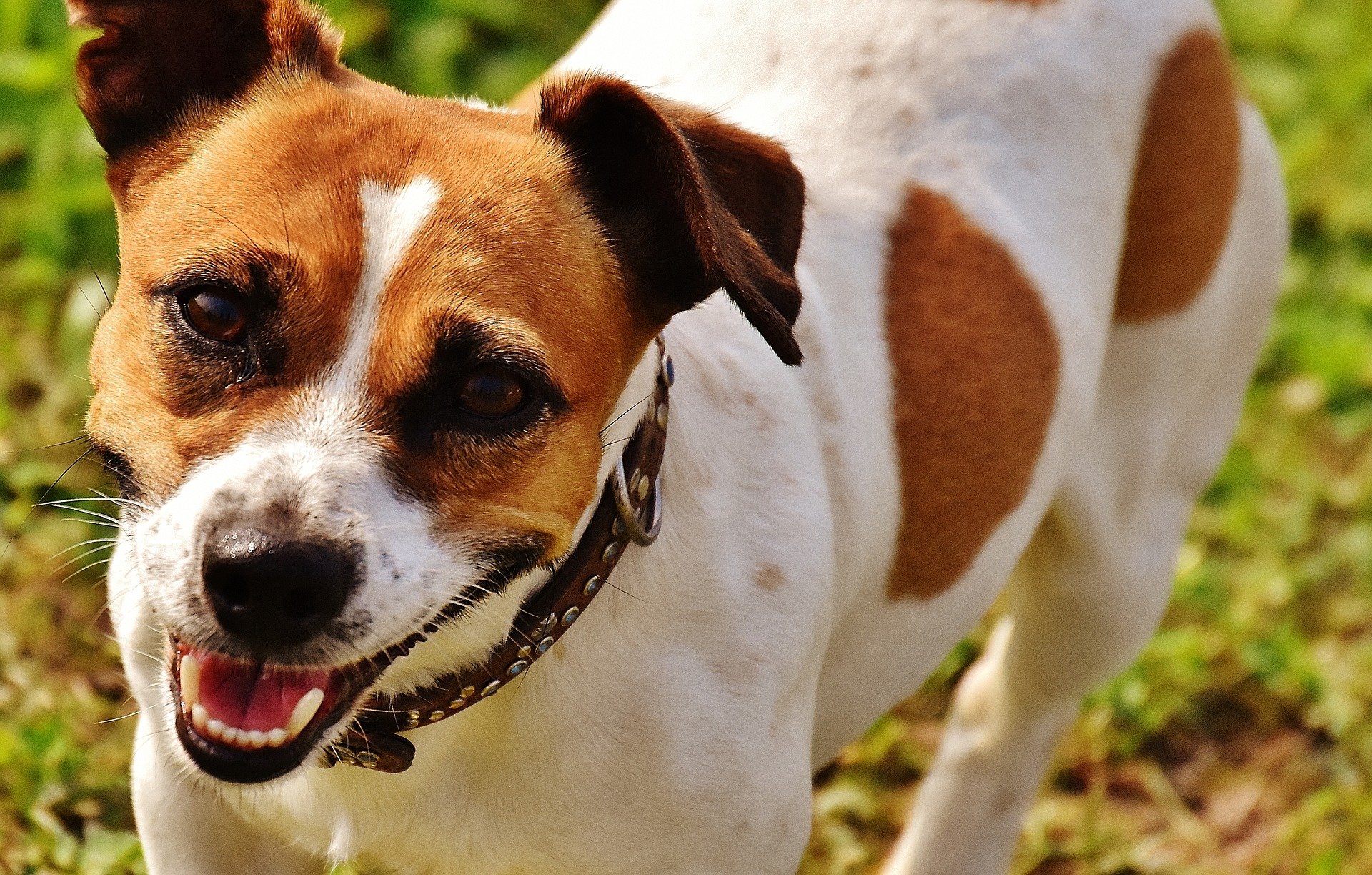 Arranging Unaccompanied Pet Air Travel
Arranging Unaccompanied Pet Air Travel
Hi PetRelocation,
Can I ship my pets without actually taking a flight with them?
Best,
Elizabeth
Hi Elizabeth,
Yes, you can certainly arrange for your pets to travel without accompanying them on the flight. Most of the pet moves we handle involve pets flying without their owners. If you aren't flying with your dogs, you'll need to organize for someone to take them to the departure airport and meet them upon arrival at the destination. This could be a friend, family member, or a hired pet travel agent.
If you're planning your pet move and would like to hire a professional pet ground transporter to assist with airport transportation, consider checking out IPATA (International Pet and Animal Transportation Association). Suppose you'd prefer comprehensive assistance with your pet move, including flight and ground transportation arrangements. In that case, you can fill out our online consultation form to learn about our door-to-door services.
Additionally, you must familiarize yourself with the pet import requirements for your destination country. For instance, if you're moving to Taiwan, review Taiwan's pet import requirements to understand what documents you need before shipping your pets. And if you want to read about dogs we have recently helped move to Taiwan, be sure to check out one of our past Pet Moves of the Month.
Thank you for your question, and we wish you the best of luck with your pet move
Pet Travel Question Details:
Name: Elizabeth
Number of Pets: 2
Pet Type: Dogs
Pet Breed: Jack Russell Terriers
From: Los Angeles, CA, US
To: Tainan, Taiwan
Contact PetRelocation to find out more about your safe pet shipping options.
Author:
PetRelocation TeamTopic:
Pet:
Country:
Moving into Saudi Arabia with your beloved canine companion can seem daunting. With some of the most complex pet import processes globally, Saudi Arabia also has an extensive list of banned dog breeds. In accordance with the strict interpretation of Islamic sharia, dogs are primarily allowed for specific roles such as hunting, protection, assistance (e.g., seeing-eye dogs), and work. Despite the challenges, relocating with your pet is possible with careful research and planning.
Understanding Banned Dog Breeds in Saudi Arabia
It's important to know that certain dog breeds are prohibited from entering Saudi Arabia, including but not limited to:
- Affenpinscher
- Boxer
- Brussels griffon
- Bulldog/English bulldog
- Bullmastiff
- Bull terrier
- Great Dane/Deutscher
- Hovawart
- Japanese spitz
- Japanese akita / Akita inu
- Lancashire Heeler
- Leonberger
- Mastiff / Old English mastiff
- Neapolitan
- Newfoundland
- Rottweiler
- Staffordshire bull terrier/Pitbull
- Swedish Vallhund /Swedish cattle-dog
- All terrier and toy breeds
Frequently Asked Questions About Bringing Dogs to Saudi Arabia
What if my dog is categorized as a banned breed?
This is a challenging situation. We comply with all international pet import regulations. We recommend consulting with our team to assess your options and determine the feasibility of pet relocation.
What if I have a mixed-breed dog?
Most people call their dogs one primary breed—aka “Labrador Retriever mix”—using her dominant features even if she has characteristics from one of Saudi’s banned breeds. If your dog qualifies as a mix of one of the allowed breeds, this may be a viable way to bring her into the country.
Can my toy breed be categorized as a guard dog?
Perhaps! Some of our past clients have brought their small dogs into Saudi Arabia using a working dog letter. Essentially, this is an official statement from your veterinarian explaining that you have a guard dog. As mentioned, we recommend speaking with one of our consultants about your situation to discuss some possible options.
What about customs clearance? Can authorities deny my dog entry?
Although it’s almost impossible to predict how customs will go, we’ve never had a circumstance where a pet was turned away upon arrival in Saudi Arabia. After spending weeks preparing your dog’s paperwork, obtaining U.S. State Department/Saudi Consulate Endorsements, and obtaining the import permit from The Ministry, you can rest assured we have permission to bring your dog into the country.
This situation can be tricky, but we are here to help. If you are unsure if your pet will be allowed into Saudi Arabia, please allow us to help! To ensure your pet’s move is on track to be safe and smooth, please reach out to us here for more specific information.
Bringing pets to Saudi Arabia?
Here’s what to know about moving pets to Saudi Arabia.
Author:
PetRelocation Team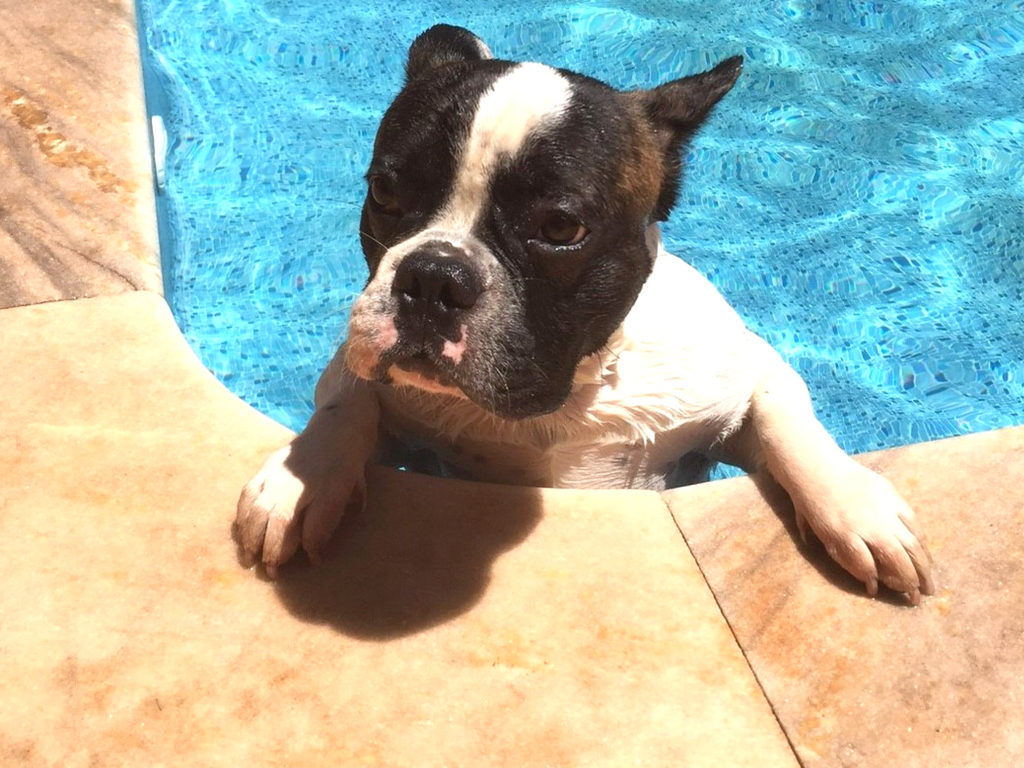
Whether you're moving across the country, relocating internationally, or simply planning a summer vacation with your furry friend, there are critical considerations for pet travel during the warm season. Summer travel poses unique challenges for pet owners, from bustling airports to soaring temperatures.
Here are our top tips for ensuring your pet's safety, comfort, and happiness during summer travel.
1. Navigating Airline Embargoes for Summer Pet Flights
Summer months often come with airline pet cargo restrictions. Some airlines may limit pet travel hours or restrict certain breeds from flying due to heat concerns. Research major airlines' summer flight embargoes and, if needed, contact our team at PetRelocation for guidance.
Pro tip: Airlines often decide which months to start their summer embargoes based on the previous year’s temperatures. Make sure to check last year’s weather patterns when planning your vacation or relocation.
2. Timing Your Pet's Travel to Avoid Extreme Heat
Some airlines will only allow pets to travel as cargo during the early morning and evening hours when the sun is down. For instance, the pet-safe airline Lufthansa will only allow snub-nosed pets to fly when they know the temperature will be under 80 degrees Fahrenheit at both the departure and arrival locations. Avoid surprises by knowing the best times for your pet to travel.
Pro tip: We see the least amount of weather embargoes in the spring and fall seasons. If possible, consider planning your pet’s travel to coincide with this.
3. Opting for Ground Transportation for Pet Relocation
Ground transportation may be the only option if your pet moves across the United States this summer. When driving long distances, especially with dogs in the car, having a co-driver or another human passenger is essential. This will make bathroom breaks for both humans and pets safer.
It would be best to inspect your vehicle to ensure there are no repairs your car may need for the long journey ahead. For instance, ensuring your air conditioning will last the duration of the trip is very important in the summer months. Also, consider the terrain you're traveling on. In desert states, such as New Mexico and Arizona, tires that are underinflated or unequipped for hot asphalt to falter are not unheard of. Ensure your vehicle— especially your tires—are ready to weather harsher conditions.
Pro tip: Make sure your pet’s crate is in a shaded area within your vehicle. Consider draping a light-colored sheet across the top of the crate to provide unexpected sun exposure.
4. Buy the Right Travel Crate and Acclimate Your Pet
When creating a positive travel experience for your pet, ventilation is critical. This guide will help you choose the right travel crate for any type and size pet. If there's extra space in your vehicle or allowed by your airline, sizing up your crate might be a good idea to provide your pet with more fresh air and room to move.
You'll want to purchase your travel crate as far in advance as possible to ensure it's the right fit and to get your pet acclimated to it. Practice crate training early and often with your pet.
Pro tip: Begin crate training your pet by feeding them in their crates with the door open, or off. This will help them get comfortable and form a positive association with their crate.
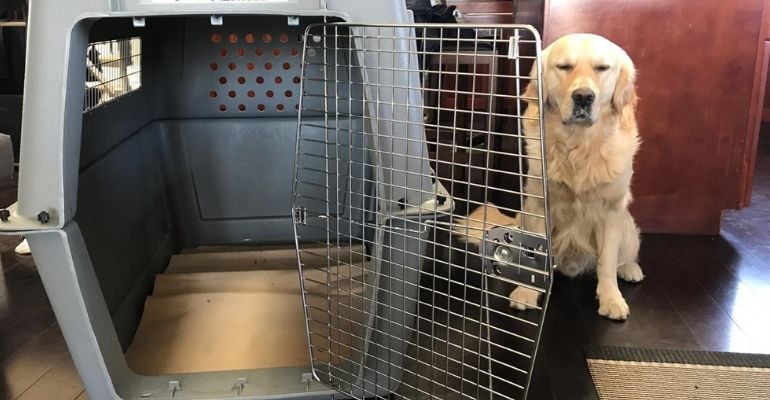
5. Scheduling a Pre-Travel Veterinary Visit
Before any summer move or vacation, ensure your pet is healthy for transport. Pets with weight or health issues may not be suitable for long trips.
Pro tip: For international trips, your veterinarian may need to issue a health certificate endorsed by the USDA. Know the destination requirements before booking.
6. Grooming Your Pet for Comfortable Travel
Depending on your pet's hair type, he or she may benefit from a little pre-travel summer grooming. Trimming an unruly mane is a good idea, but read this pet grooming advice before taking things too far. A pet's hair acts as a natural cooling system, and some coverage can protect their skin from sun damage, so a buzzcut could leave them hot and bothered.
Pro tip: It’s always a good idea to keep your pet’s nails short during travel. This will make handling an excited dog easier. Check with your groomer about getting your pup pedicured before embarking on your trip.
7. Ensuring Proper Nutrition and Hydration for Your Pet
When it's hot outside, and your pet will be traveling for an extended period, it's even more vital that they eat the right amount at the correct times and stay hydrated (just like you)! Food and exercise should be monitored the days before your trip to keep your pet as calm and normal as possible. Make sure fresh water is always available in the hours before you head out so your pet reaches healthy hydration levels.
Even if there's a long journey ahead, it's best to avoid food for at least two hours before taking off to avoid tummy upsets.
Give your pets plenty of water before and after your trip, and make sure water is available during your entire trip. You should attach a water bowl securely to their crate and fill it at the last moment before taking off.
Pro tip: If you’re traveling by air, freeze your water bowls or trays the night before the move so the water will melt slowly over time, to reduce spillage and ensure water is available for longer! If you’re traveling by ground, make sure to bring portable water bowls with you to provide water on rest stops.

8. Tiring Out Your Pet for a Smooth Journey
A couple of extra walks or extended playtime the evening before and the morning of your trip will tire out your pet and increase the chances of travel napping. Make sure you carve out time in the days before your trip to devote to your pet and his or her travel prep.
Pro tip: Explore dog-friendly trails here. Hiking early in the morning before a journey begins is a great way to tire your pet out.
Following these tips should help make your summer relocation a breeze! Make sure to share your experience with us on social media! You can tag us on Instagram @PetRelocation and use the hashtag #PetRelocation.
If you have questions about traveling with your pet this summer, schedule your free consultation today!
Bringing pets to EU?
Here’s what to know about moving pets to EU.
Author:
PetRelocation TeamTopic:
Air Travel, Airlines, Airports, Ask the ExpertsPet:
Cats, Dogs, Snub-Nosed BreedsCountry:
United States, UK, Australia, EU Pet Shipping Tips: Plan for Future Travels When Adopting a New Pet
Pet Shipping Tips: Plan for Future Travels When Adopting a New Pet
If you're considering adding a pet to your family, there are several factors to keep in mind when making your choice.
Choose Adoption!
While you may have a specific image of your "ideal puppy," opting for a breeder or pet store contributes to issues like overbreeding and overpopulation within the pet community. Consider visiting your local shelter, where you may be smitten with one of the many adorable and deserving pets seeking a forever home.
Consider the Age, Breed, and Size of Your Pet
Bringing home a tiny, perfect puppy may be appealing, but reflecting on your capabilities is crucial. Do you have the resources to train a young pet? Is your living space suitable for an energetic dog? Do you have a work schedule that accommodates regular walks?
Upon reflection, you might realize that adopting an older pet, a mixed breed with a suitable temperament, or a more independent cat aligns with your lifestyle.
Keep Future Travel Plans in Mind
Could your job require relocation in the near future? Are you planning extended travel or frequent trips? Consider arrangements for your pet during vacations and the financial implications of pet relocation.
If you plan to adopt a Pit Bull, Staffordshire Terrier, or an exotic animal, be aware that certain breeds and species face travel restrictions and may be subject to strict regulations.
Becoming a pet owner is rewarding and enjoyable, but it also entails responsibility—especially if you have future travel or relocation plans.
Exploring Pet-Friendly Travel Destinations
As a pet parent, you may wish to explore new destinations with your furry companion by your side. To ensure a smooth and enjoyable journey, it's important to research pet-friendly travel destinations in advance. Many locations worldwide offer pet-friendly accommodations, parks, and activities that welcome pets with open arms. By choosing destinations that cater to your and your pet's needs, you'll be able to create lasting memories and embark on exciting adventures together.
The Importance of Microchipping and Identification
The Importance of Microchipping and Identification One essential step in preparing your pet for travel is ensuring proper identification. Microchipping your pet provides a permanent form of identification that can greatly increase the chances of a safe reunion if your pet is lost or separated. Additionally, ensure your pet's identification tags are up-to-date with your contact information. Proper identification is vital for your pet's safety and can provide peace of mind as you embark on your travels.
Crate Training for a Stress-Free Air Travel Experience
Air travel can be an experience for pets, especially for those unaccustomed to being in a crate. To help ease the process, consider crate training your pet well before your travel date. Start by acclimating your pet to their travel crate in a familiar environment, gradually increasing the duration they spend inside. Reinforce positive behavior with treats and praise. A well-crate-trained pet is likelier to remain calm and comfortable during air travel, leading to a more pleasant experience for you and your furry friend.
Have questions about pet travel? Contact us to discuss your pet shipping options.
Author:
PetRelocation Team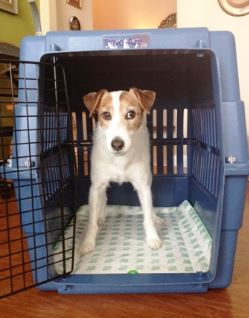 Are Pet Move Expenses Tax Deductible?
Are Pet Move Expenses Tax Deductible?
The answer is a resounding yes, but with a catch—you must be moving for work-related reasons.
Pet owners who begin researching what it will take to move their furry family members are often surprised by a few things -- the rules, the airline procedures, and yes, the costs.
Though relocating pets can be costly, there are effective strategies to save on expenses, provided you're willing to invest extra time and effort. Here are some specific tips on how to control the costs of a pet move).
How Can You Save More Money? Claim a Tax Deduction!
If your move is due to a change in employment, then the pet move expenses are tax deductible under current IRS regulations. It's important to consult your tax adviser to understand the finer details of these deductions.
For transferees feeling overwhelmed by the stress and costs of moving, whether internationally or domestically, this tax deduction opportunity could be a welcome relief.
Contact PetRelocation with any questions you have about moving your most precious cargo as safely and as cost-effectively as possible.
Bringing pets to United States?
Here’s what to know about moving pets to United States.
Author:
PetRelocation TeamTips for Flying With Older Cats
Hi PetRelocation,
My cat is 19, and although she's in good health she does get stressed. I am very worried about moving her on an 11-hour flight to Los Angeles. Do you have any suggestions? She has been with me for 19 years and I cannot leave her behind.
Also, what paperwork does California want?
Thanks,
Christie
Hi Christie,
Thank you so much for the question -- as a caring pet owner, your concerns are certainly understandable.
Before moving older pets, we do advise talking to your veterinarian to discuss the possible risk factors and requesting they perform a geriatric exam. If it helps, know that we've helped many older pets move safely both domestically and internationally and we've gathered several tips for flying with older cats to help shed light on this process.
It definitely helps to crate train pets of all age and temperament before a move, so also take a look at our tips for how to crate train a cat. For cats who tend to get stressed during travel, helping them feel as comfortable as possible with the travel crate can make a huge difference.
Finally, if/when you decide to go forward, here are the pet import requirements for the United States. Primarily you'll need updated vaccines and an International Health Certificate issued within 10 days of departure.
Please contact us if you have any more questions, and good luck with your travels!
Pet Travel Question Details:
Name: Christie
Number of Pets: 1
Pet Type: Cat
Pet Breed: Moggie
From: London, England, UK
To: Los Angeles, CA, US
Bringing pets to United States?
Here’s what to know about moving pets to United States.
Author:
PetRelocation TeamAs a pet owner and seasoned pet relocation expert, I understand pet parents' love and devotion for their furry friends. That's why relocating with pets can seem daunting, especially when faced with the challenges of traveling and settling into a new home. But fear not, pet parents! After helping thousands of families move with their pets, I've compiled the top 17 pet relocation tips to ensure a smooth and stress-free journey for you and your beloved companions.
Get Acquainted with Travel Regulations
- Research the regulations of your destination country or state, as they may have specific pet entry requirements. This includes vaccinations, microchipping, and documentation. Consult your veterinarian to ensure your pet meets all requirements and avoid any surprises at customs. For pet transportation within the United States, visit USDA APHIS PET TRAVEL.
Choose the Right Pet Travel Crate
- The right pet travel crate is crucial for your pet's comfort and safety during travel. Ensure the carrier is airline-approved, well-ventilated, and spacious enough for your pet to move around. Allow your pet to become familiar with the carrier by using it for short trips or as a cozy spot at home.
Create a Soothing Travel Kit
- Prepare a travel kit to keep your pet calm and comfortable during the journey. The kit should include everyday items like your pet's favorite blanket, toys, and treats. You can also include calming aids like pheromone sprays or supplements. Check with your vet for recommendations on natural calming remedies, as we do not recommend any form of sedation.
Consider Hiring a Pet Relocation Service
- As an employee at PetRelocation, I've seen firsthand how professional pet relocation services can streamline the moving process. These services handle the logistics of pet travel, from booking flights to navigating customs. With their expertise, you can focus on settling into your new home while ensuring your pet's safe and stress-free journey.
Prioritize Pet-Friendly Housing
- When choosing your new home, prioritize pet-friendly housing options. Research local pet policies and inquire about any pet breed or size restrictions. Once you've secured your new home, create a safe and familiar environment for your pet by setting up their bedding, food, and water bowls.
Stay Calm and Composed
- Pets are intuitive and can sense their owner's emotions. On a moving day, stay calm and composed to help your pet feel more at ease. Offer your pet plenty of reassurance and affection to alleviate their stress.
Allow Time for Adjustment
- Upon arrival at your new home, give your pet time to adjust to their new surroundings. Explore the new environment together, and maintain familiar routines to provide stability. Monitor your pet's behavior for any signs of stress and consult your vet if needed.
Be Patient and Allow Exploration
- Pets, much like humans, need time to adjust to their new surroundings. Upon arrival at your new home, be patient with your pet and offer plenty of attention, affection, and treats. Let them know that they are safe and loved in this new environment. Additionally, allow your pet the freedom to explore your new home on their terms, which can help them become more familiar and comfortable with their new space.
Avoid Sedating Your Pet for Air Travel
- While it may be tempting to sedate your pet for air travel to keep them calm, it's essential to avoid doing. Sedation can affect a pet's ability to regulate their body temperature and adversely affect their health during air travel. Always consult your veterinarian before administering any medications to your pet for travel purposes.
Practice Safe Leash Habits During Travel
- When traveling with your pet, you must always prioritize their safety. One practical tip is to attach your pet's leash before you open any vehicle doors and only detach it after the doors have been closed. In new and unfamiliar environments, pets can quickly become spooked and attempt to run off. Keeping the leash connected ensures you and your pet remain safe and secure during the journey.
Consider Using a Pet Transportation Company for Unaccompanied Travel
- If you cannot accompany your pet during the move, consider using a reputable pet transportation company. These companies offer door-to-door service, picking up your pet from your current home and delivering them to your new destination. Services may include providing appropriate shipping containers, handling required health documents, delivering your pet to the air freight terminal, and picking them up upon arrival. Using a pet transportation company can help ensure your pet's safe and comfortable journey even when you can't be there.
Create a Comfortable Refuge for Your Pet at Your New Home
- Settling into a new home can be a big adjustment for pets. To help ease the transition, create a quiet and comfortable refuge for your pet away from the unpacking activity. Set up a familiar space with their bed or crate, favorite toys, and comforting items. This refuge will help your pet relax and feel secure as they adjust to their new surroundings. Encourage your pet to explore their new home at their own pace, and be patient as they become familiar with their new environment.
With these top 12 pet relocation tips, you'll be well-equipped to provide your pet with a smooth and positive moving experience. As you embark on this new adventure together, remember that patience, preparation, and a little extra love ensure your pet's happiness and well-being. Safe Travels!
Bringing pets to United States?
Here’s what to know about moving pets to United States.
Author:
PetRelocation Team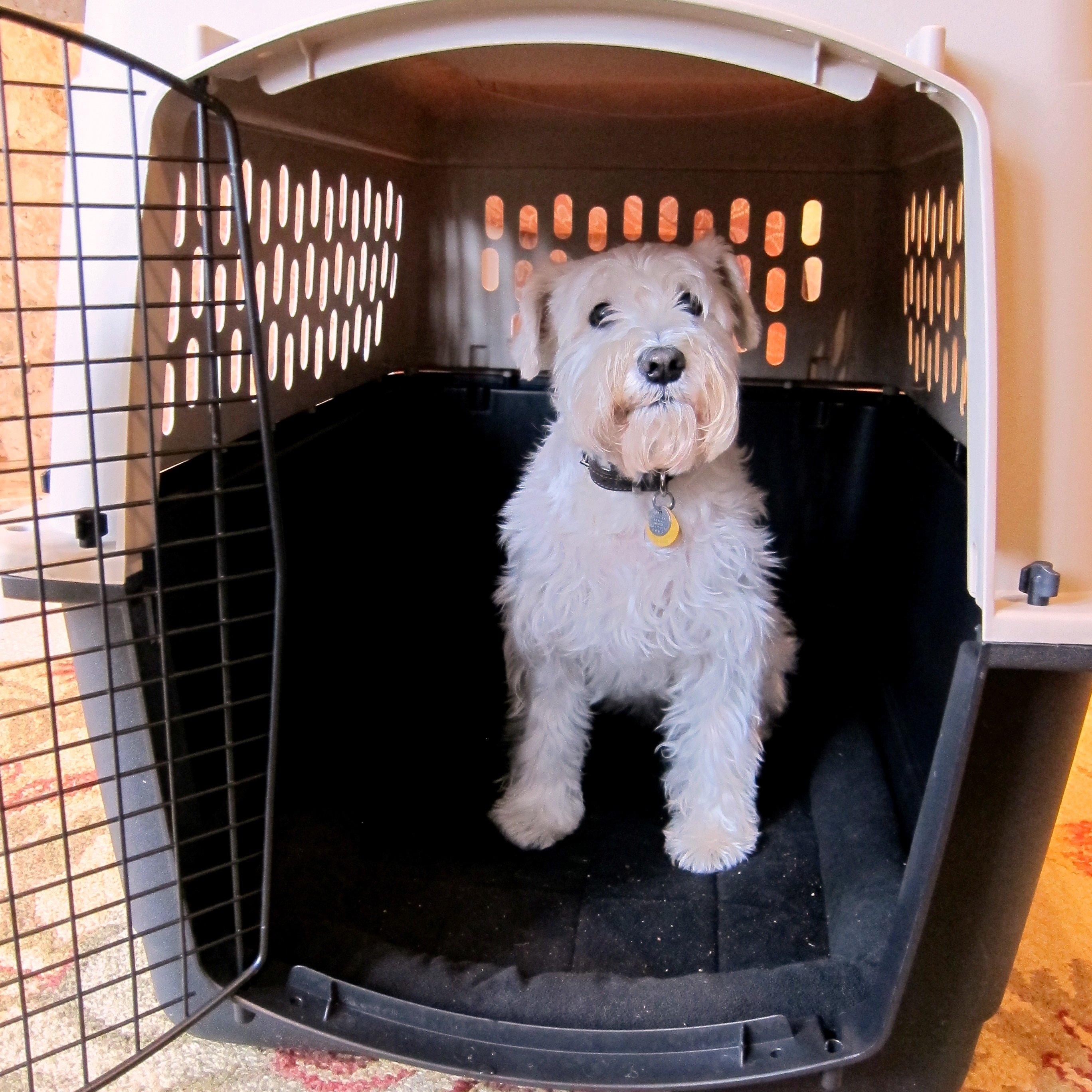 Setting Your Canine Companion Up for a Safe and Comfortable Journey
Setting Your Canine Companion Up for a Safe and Comfortable Journey
Crate training is a critical part of successful pet relocation. When your dog is comfortable and confident in their travel crate, it can significantly ease the anxiety associated with long-distance travel, both for your pet and you. This guide offers practical tips for crate training your dog and ensuring a smooth and stress-free move.
Taking a few training steps before your day of departure can alleviate much of the potential stress surrounding cargo pet travel. Here are our tips for helping your dog acclimate to the travel kennel before your relocation.
*(Have a cat? Check out our cat crate training tips.)
Begin Training Early
As soon as you know you're moving, purchase your dog's travel crate. Measure your dog accurately to acquire the correct airline-approved crate size. Giving your dog several weeks to acclimate to the crate can contribute to a low-stress move.
Gradual Introduction to the Crate
For a dog unfamiliar with crates, start by placing only the bottom portion of the crate in a common area of your home. Gradually add the top and the door as your dog becomes more comfortable.
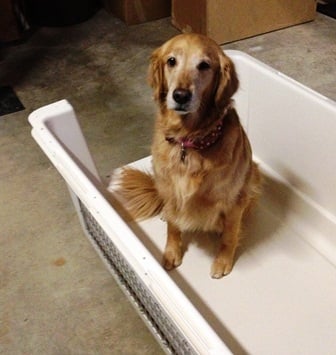
Make the Crate a Positive Space
Encourage your dog to explore the crate by placing their favorite toys, treats, and meals inside. With time, your pup may naturally nap and play in the crate. (These tactics even work for cats!)
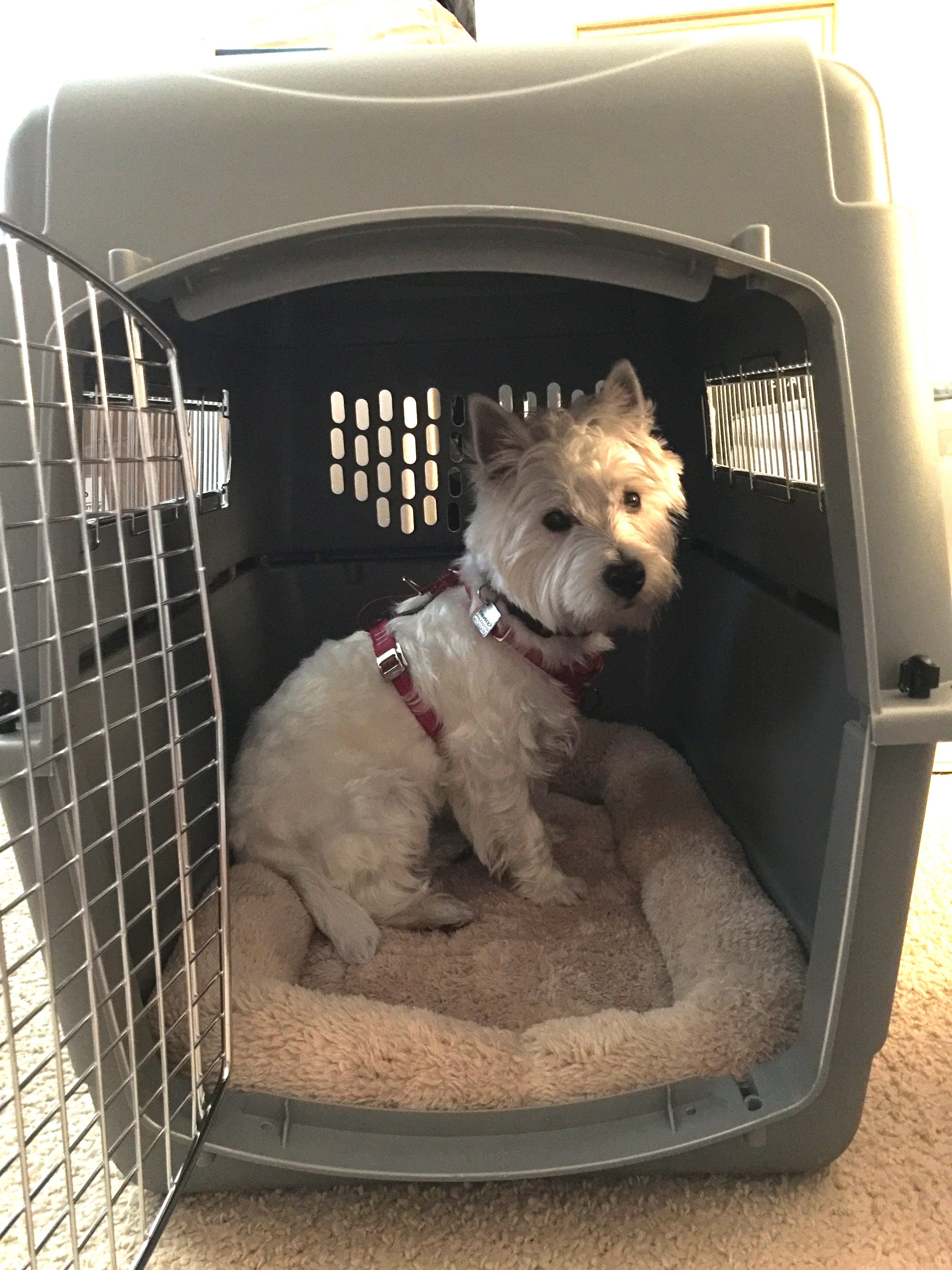
Be Patient and Consistent
Crate training takes time, so avoid forcing or rushing the process. Be patient, and allow your dog to get accustomed to the crate at their own pace.
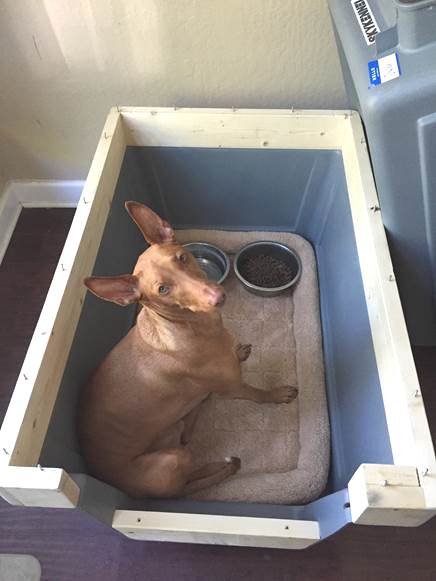
Practice with Closed-Door Sessions
Once your dog is comfortable with the crate, practice short sessions with the door closed, starting with a few minutes and gradually increasing. Consider taking short car rides with your dog in the crate.
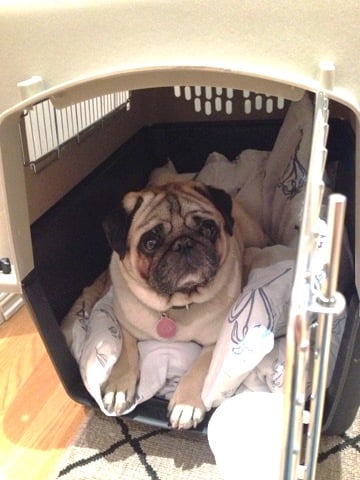
Offer Positive Reinforcement
Reward your dog with treats, verbal praise, and affection for positive behavior related to the crate. Consistent positive reinforcement is key to successful crate training.
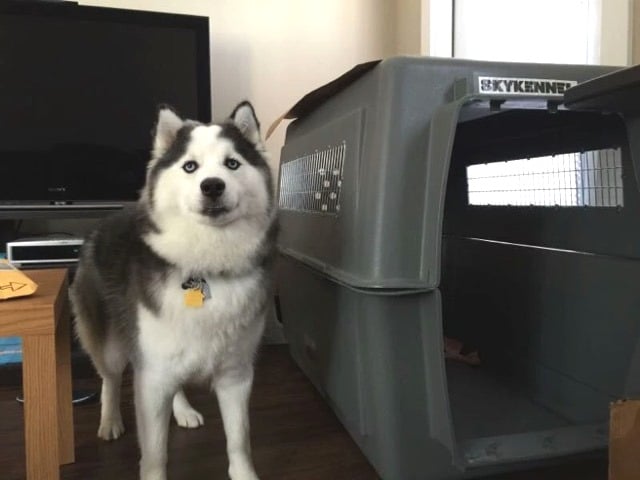
Age Is Just a Number
It's never too late to crate-train your dog. Older dogs can be successfully crate-trained with patience and persistence.
Need help planning your dog's safe relocation? View our service packages and pricing to get started >
Author:
PetRelocation TeamTopic:
Pet:
Country:
Understanding the Rabies Titer Test and Its Role in Pet Travel
Preparing for international pet travel involves navigating various pet import regulations, securing an airline-approved pet travel crate, and booking a pet-friendly airline. In addition, one essential step for moving your pet to certain countries is the rabies titer test.
This guide will walk you through the importance of the rabies titer test, the process of obtaining one, and what you need to know to ensure a smooth pet transport experience.
What is the Rabies Titer Test?
- The rabies titer test, also known as the Rabies Antibody Titre Test (RNATT), is a blood test that measures the effectiveness of a rabies vaccine.
- It's required for pets entering rabies-free or rabies-controlled countries such as Australia, Singapore, Japan, and New Zealand.
- The test is administered 1 to 30 days after the rabies vaccine and involves drawing blood from your pet and sending it to an approved laboratory for analysis.
Who Performs the Test and Where is It Sent?
- A USDA-accredited veterinarian must perform the blood draw. The sample is then sent to an approved laboratory for analysis. The most common laboratories are Kansas State University (KSU) and FAVN. Your assigned PetRelocation Specialist can guide you through this process.
Key Steps and Considerations for the Rabies Titer Test
-
Research the Rules: Verify the import regulations and titer test requirements for your destination country.
-
Microchip Your Pet: Ensure your pet is microchipped before the blood draw. If your pet has multiple microchips, all must be recorded on the test submission form.
-
Rabies Vaccination: Administer the rabies vaccine before the titer test. Make sure you have the original rabies certificate with the vaccine date.
-
Timing: Rabies titer test results have an expiration date that varies by country. Consider your move timeline and any changes that could affect validity.
-
Obtain Test Results: Obtain the official test results, which are required for travel and documentation. Some countries require original results mailed from the approved lab.
Allergic to Rabies Vaccines? Alternative Options
- For pets allergic to rabies vaccines, KSU offers the alternative of Rapid Fluorescent Focus Inhibition Test (RFFIT) testing.
Expert Assistance for a Stress-Free Pet Move
- Navigating the complexities of international pet travel can be challenging, but you're not alone. Our team at PetRelocation offers personalized support and guidance to ensure successful pet transport, including handling rabies titer tests and other requirements.
Looking for assistance with your upcoming pet move? Please contact us for a pet travel consultation.
Author:
PetRelocation TeamTopic:
Pet:
Country:
A Comprehensive Guide to Pet Quarantine in Australia
Relocating to Australia with a furry friend? Moving to Australia with a pet is certainly a process. Many of our customers get particularly nervous about one piece of the journey: the required quarantine period when their dog or cat arrives. Your pet’s quarantine period in Australia will be fine as long as you're organized. And a pet-owner reunion is even sweeter down under!
All dogs and cats entering Australia must spend 10 days at the same post-entry quarantine facility: Mickleham Quarantine Station in Melbourne. It’s always a 10-day stay; there are no exceptions to this rule. This state-of-the-art facility cost the Aussies a whopping $380 million to build! (The Weekly Times)
Overview of Mickleham Quarantine Station
All dogs and cats entering Australia must spend 10 days at the Mickleham Quarantine Station in Melbourne. This state-of-the-art facility opened in 2015 and is one of the world's most advanced animal quarantine facilities.
Mickleham boasts modern amenities, including floor heating, veterinary examination rooms, and exercise yards. Each pet is housed in a private, climate-controlled pen with dedicated caretakers.

- Location: 135 Donnybrook Rd, Mickleham VIC 3064, Australia
- Pet Release Hours: Every Day: 10:00 AM – 12:00 PM
- Phone Number: 1800 900 090 /+61 2 8318 6700
- Email: [email protected]
How to Secure Your Pet's Stay at Mickleham Quarantine Facility
To ensure your pet's successful quarantine stay at Mickleham, you'll need to follow these steps:
- Request an import permit
- Book a reservation at Mickleham
- Pay all Mickleham Quarantine fees
- Schedule a release appointment
- Plan for pickup or post-quarantine pet transportation
Requesting an import permit (takes approximately 10-20 days)
Once your dog or cat has passed results for the Rabies Antibody Titer Test and these results have been endorsed by a government entity, you’ll need to apply for an import permit through Australia’s BICON (Biosecurity Import Conditions) System.
To use BICON, you’ll create a user account. Once you have an account, follow the prompts BICON provides to apply for your pet’s import permit. You’ll be required to upload the following documentation:
- Rabies vaccination certificate
- Rabies Antibody Titer Test results
- RNATT Declaration from your country’s government
- For animals with any ongoing medical condition(s), a completed veterinary medical form from your veterinarian detailing the condition(s) your animal is suffering from and the treatment (if any) that is required to manage it.
It’s easiest to have these files ready before beginning the application process.
If your pet requires special food or medication, you should note this on your pet’s import permit application under the “special needs” section. This information will get passed along to Mickleham.
Most Australian pet import permits take 10-20 days to be assessed, but it can take longer during busy seasons or if you have a complicated application. You’ll be able to track the progress of your application through the BICON system, and you’ll receive an email if there are any issues with your application once your submission has been processed.
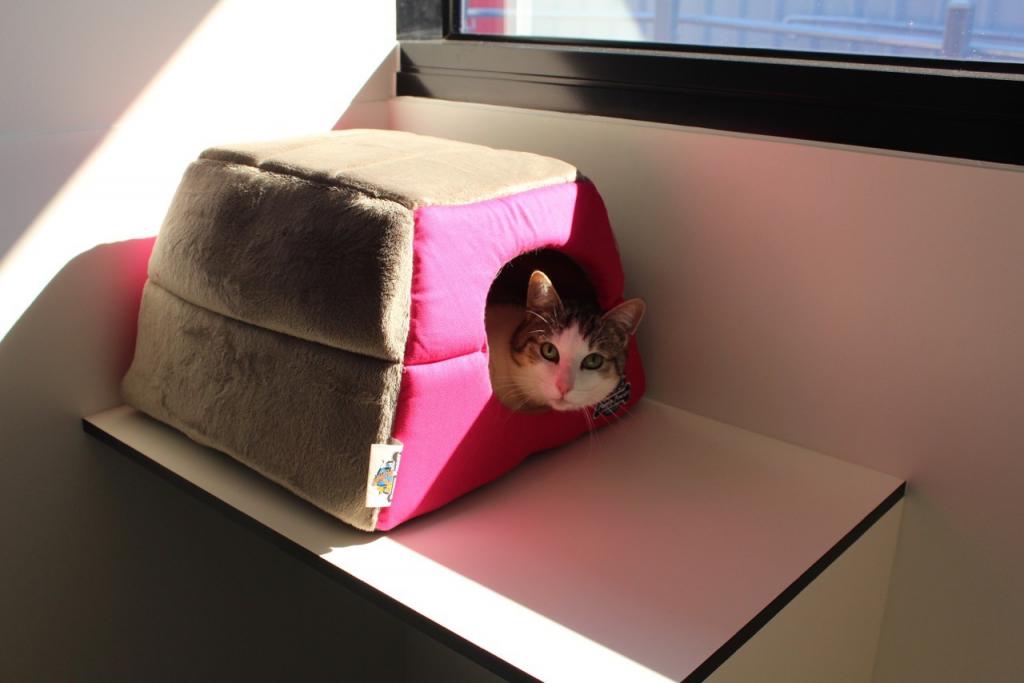
Booking Your Pet’s Stay at Mickleham
Once you’ve received your pet’s import permit and booked your flights, you can request quarantine space at the Mickleham facility in Melbourne. It’s important to do this before your pet’s arrival, as space can fill up quickly, and your pet’s import permit does not guarantee quarantine availability.
You’ll use the Post Entry Biosecurity System to make a quarantine booking. This portal will walk you through each section needed to confirm space for your pet. Be prepared to supply your pet’s import permit information, along with their flight information.
Like the import permit application, you can check on your pet’s reservation status and make any changes or updates to the reservation as needed. You’ll also need to schedule a release appointment for your pet on this system to pick them up from quarantine after the mandatory 10-day period.

“Moving your pet to Australia can be quite a lengthy endeavor, up to six months! The most complex elements are applying for the import permit and setting up the vet visit treatment schedule, hands down.
Clients are often surprised at the lengthy explanations we provide to their vets before each visit, with instructions down to how notes need to be taken from their exams.”
–Andrea Gold
Getting Your Pet to Mickleham
Many pet owners inquire about picking up their pets from the airport and taking them to Mickleham. This is not a possibility; the Mickleham staff must pick up all pets from the airport in Melbourne and transport them directly to PEQ (Post Entry Quarantine) where they will be cared for and monitored until 10 days have passed.
The facility will always notify us (or the pet owner) of your pet’s safe arrival within 24 hours.
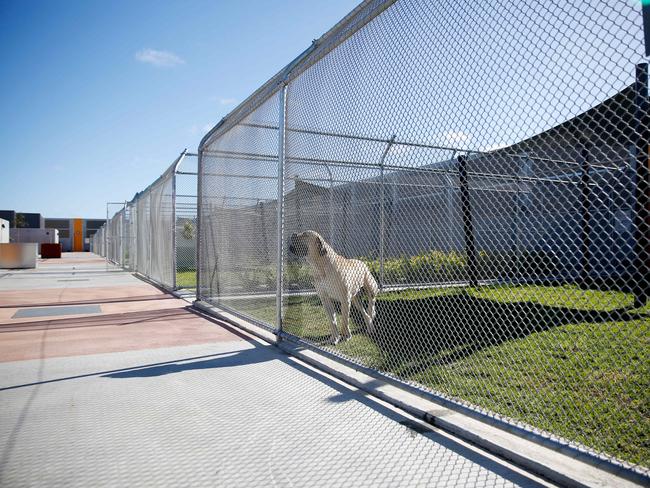
Ensuring Your Pet's Comfort and Safety at Mickleham
Mickleham's team prioritizes your pet’s well-being. If your pet has dietary restrictions or requires medication, mention these in the “special needs” section of your pet’s import permit application.
Mickleham provides high-quality "Advance AU" dry food. Special food arrangements can be made if needed.
If your pet requires medication, you can arrange for a private veterinarian in Australia to visit and prescribe the necessary medication.
What Mickleham is Like for Your Pet
Quarantine may seem like a scary time for your pet, especially since no visitation is allowed, but Mickleham offers great accommodations and care for pets during their quarantine stay. Oftentimes, they’ll assign a specific handler to each pet to ensure the handler can closely monitor any changes during the pet’s quarantine period and react appropriately.
Each pet is assigned their own room so the staff can monitor their food and water intake properly and take action should any pet not handle the stay well.

“I have had a great experience working with the team at Mickleham since they opened. If they have any concern about how a pet is settling in, they won’t hesitate to reach out to the owner.
Due to the large number of animals they take care of, no news is good news! They will respond to any inquiries, but not hearing from them should assure you that your little one is doing great!”
–Nina Faber, Senior International Relocation Coordinator
If the staff notices a dog in a family is not handling the new environment well, they may move them to the same run as the other family dog to help provide comfort.
You, unfortunately, cannot send your pet to quarantine with their favorite toys. Any items traveling in the kennel with your pet will be destroyed upon arrival, as the Australian government deems them soiled. The facility staff provides bedding to suit age and breed needs. Your pet will only be groomed or bathed for biosecurity and/or hygiene reasons.
Mickleham provides high-quality dry food for all cats and dogs staying at the facility once daily (unless otherwise advised by a veterinarian). The current food offered is “Advance AU” dry food.
Suppose your pet has a sensitive diet and needs special food during their quarantine stay. In that case, the facility is extremely accommodating as long as you make these requests formally during the import permit and quarantine booking processes. You will be asked to source your pet’s food in Australia and post it to Mickleham with a veterinary letter.
For medications, you’ll need to make arrangements with a private veterinarian in Australia to visit your pet in quarantine and prescribe the appropriate medication. You can email the booking and invoicing team at [email protected] to make these arrangements for your pet.
Quarantine Costs
Not including airfare, any medications, or special food your pet requires, you can expect to pay around $1,200 USD ($1,710 AUD) per pet for quarantine. An import permit typically costs $369 USD ($540 AUD). Additional quarantine fees are broken out as follows:
| Service | Notes | Cost (in AUD) |
|---|---|---|
| Quarantine Entry (listed as 'Lodgement-Manual' on initial invoice) | This fee is per-animal | $33 |
| Veterinary examination of animal and health certification (listed as ‘LAI In Office (1/4hr) Anim/Rep’ on the initial invoice) |
Fee per 15 minutes. This fee is charged for each animal. |
$30 |
| Document clearance (listed as ‘LAI In Office (1/4hr) Anim/Rep’ on the initial invoice) |
This fee is charged for each animal. If additional information is required to complete the document assessment, an additional $40 per 15 minutes will be charged. |
$30 |
|
PEQ importation charge |
Levy | $1,200 |
|
Accommodation for a cat |
Daily rate per cat |
$29 |
|
Accommodation for an additional cat (if sharing accommodation with the first cat) |
Daily rate per additional cat | $29 |
| Accommodation for a dog | Daily rate per dog | $29 |
| Accommodation for an additional dog (if sharing accommodation with the first dog) | Daily rate per additional dog | $29 |
| Any additional veterinary care |
Additional veterinary needs, e.g. booster vaccinations, are provided by a private veterinarian. |
Varies |
|
International Documentation Fee (IDF) |
This fee is charged by the airline and paid by the department on your behalf upon collection of your animal from the airport. This will appear on the first invoice. |
Varies |
|
Stowage of goods |
For animals not removed after quarantine finishes | Varies |
Source: Agriculture.gov,au
If You’re Working with PetRelocatioN
Australia is one of the most popular pet relocation destinations we help our clients with. We do the heavy lifting to take this complex application and import process off your plate so you can focus on your human move.
Upon your pet’s arrival in Melbourne, our team ensures they’re booked for and properly delivered to Mickleham. Additionally, we will arrange post-quarantine destination services, including forwarding flights and home delivery, helping ensure an easier experience for you from start to finish.
If you have other questions about Mickleham quarantine care, you’re always welcome to ask our team of experts! We know the process well and recommend getting started as soon as you know you plan to bring your dog or cat to Australia.
Bringing pets to Australia?
Here’s what to know about moving pets to Australia.
Author:
PetRelocation Team Avid Microchips and International Pet Air Travel
Avid Microchips and International Pet Air Travel
We have been receiving a lot of questions about microchips, specifically AVID brand chips, and whether or not they are ISO compatible. In this updated article, we will review what a microchip is, why it's typically required for any animal traveling internationally, and address questions about AVID chips and ISO compatibility.
What is a Microchip and Why Does My Pet Need One?
The microchip is a tiny computer chip that has an identification number programmed into it. The chip is encased in a smooth, strong, biocompatible glass and is small enough to fit into a hypodermic needle. Once an animal is injected with the chip, it can be identified throughout their life by this one-of-a-kind number. Their identification cannot be lost, altered, or intentionally removed.
The chip is typically implanted subcutaneously between your pet's shoulder blades. The process does not require any sedation or anesthesia, as the needle used to insert the chip is no bigger than any normal vaccination needle. Aside from a little initial swelling from the injection itself, you will not be able to see or feel the chip afterward. The chip is inert, smooth, and biocompatible, so there is no chance of the body rejecting the microchip or developing an allergy.
The inspectors will scan the chip at the port of export and entry. It is one of the ways countries can control disease—so they always know who is coming and going and what sort of vaccinations they have had.
AVID Chips and ISO Compatibility - Updated Information
AVID Standard chips (9 digit format such as XXXXXXXXX) are not ISO compatible due to their encryption (they were produced early on). AVID Euro Chips are, in fact, ISO compatible and will work in various countries, and are 10-digit chips.
However, some countries, such as Hong Kong, still require that all pets coming into Hong Kong be chipped with an AVID Standard chip (9 digits). Animals that are already chipped with an ISO-compatible chip (such as AVID Euro or HomeAgain) may enter the country with a non-AVID Standard chip; however, Hong Kong will re-chip the pets upon arrival in Hong Kong with the AVID Standard chip. This is a compulsory government rule (similar to compulsory rabies shot upon arrival in Hong Kong) and cannot be avoided.
Updated Information (2023): The ISO is currently addressing the worldwide and growing problem of chip cloning or duplication, which takes place regularly with 15 digit chips. The new standard is # 14223, which details encryption as a method of prevention. This update reflects the latest developments in microchip technology and ISO standards.
In summary, while the attempts at an international standard are good in concept, the practical issues are even more important. The US had a huge infrastructure of microchip technology in place for ten years before ISO wrote standards. The reason there was an immediate ANNEX (A) to the standard was that a huge installed base in Europe and elsewhere already existed and continues today. The EU did a very noteworthy and commendable thing by recognizing this base.
If you have more questions about microchips or are ready to learn more about pricing, logistics, and other pet travel details, complete our consultation form.
Author:
PetRelocation TeamDispelling Common Misconceptions About Pet Quarantine
International pet travel often raises questions and concerns about quarantine procedures. Pet owners may have heard myths and misconceptions about what pet quarantine entails and how it may impact their furry companions. Here, we address five common myths and provide the facts about pet quarantine.
Myth #1: Every country requires pet quarantine upon arrival.
- Not all countries require quarantine upon arrival. While strict rabies-free countries like Australia, New Zealand, and Singapore have quarantine requirements, many places in North America, South America, the EU, and much of Europe and Asia do not. Research your destination country's regulations to determine if quarantine is necessary.
Want to see some examples? Read about Archie’s time in Malaysia quarantine, and check out this video of Tilly in Australia quarantine for a look behind the scenes.
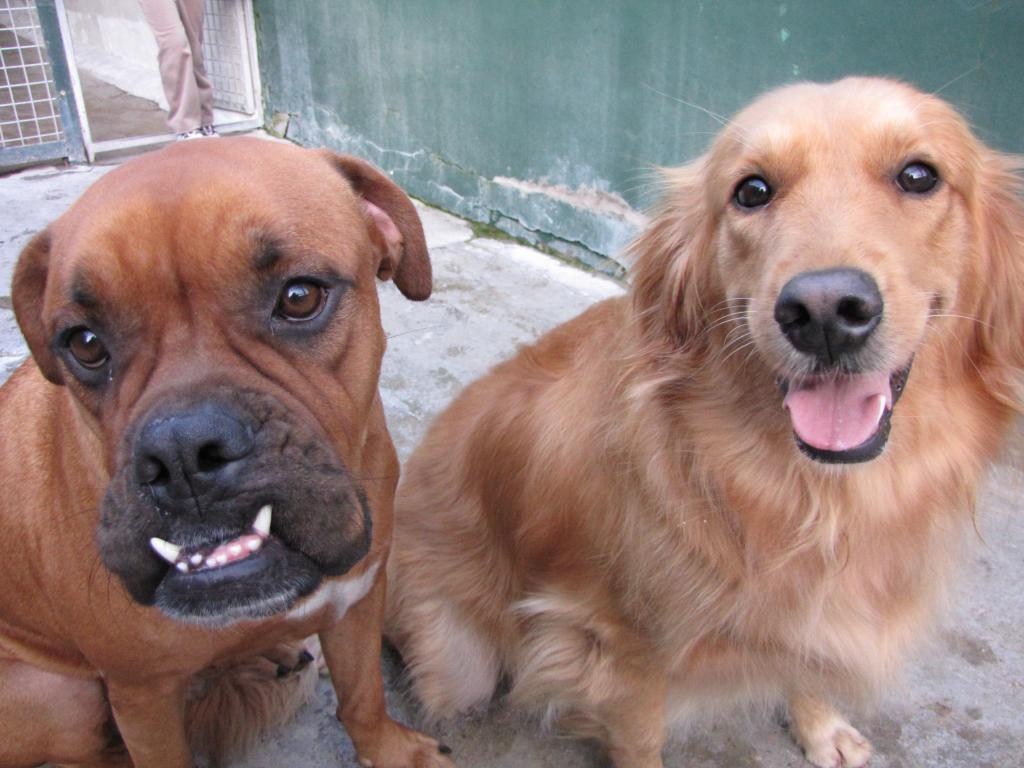
Myth #2: Quarantine facilities are basically like jails.
- Quarantine facilities are government-run and staffed by trained professionals. While not as luxurious as a pet hotel, they are safe and sufficient, with separate areas for dogs and cats, outdoor yard space, and provisions for fresh air and exercise.
Myth #3: Pets are forever changed after spending time in quarantine.
- Pets typically adapt well during and after quarantine. Pet owners often report that their pets remain healthy and quickly return to normal upon release.
Myth #4: If I pay extra fees or get “special” paperwork, I might be able to avoid quarantine.
- Quarantine requirements are official import rules and cannot be bypassed with additional fees or paperwork. Proper planning can minimize quarantine duration, but it cannot be skipped altogether.
Myth #5: Pets won’t be able to get their food or medicine while in quarantine.
- Each quarantine facility has its own rules prioritizing health and safety. Many facilities accommodate special food requests and administer medication with detailed instructions.
Takeaways
- Research import requirements and quarantine procedures well in advance.
- Be aware that rules can change, so use the most up-to-date information.
- Consider hiring expert help for a stress-free quarantine and relocation experience.
Have questions about pet quarantine or pet travel in general? Contact PetRelocation for a consultation.
(Picture #1: A dog at Sembawang Animal Quarantine Station in Singapore; Picture #2: Lucky and Diesel at London & Essex International Quarantine Kennels; Picture #3: Chunk the French Bulldog at Eastern Creek Quarantine in Sydney, Australia)
Bringing pets to Singapore?
Here’s what to know about moving pets to Singapore.
Author:
PetRelocation TeamTopic:
Air Travel, Ask the Experts, QuarantinePet:
Cats, DogsCountry:
United States, Australia, Malaysia, Singapore Flying Solo: What to Know About Sending Your Cat on a Flight Without You
Flying Solo: What to Know About Sending Your Cat on a Flight Without You
Dear PetRelocation,
Do I have to catch the same flight as my cat? I am considering spending time in China on the way to Australia. Can I send my pet ahead?
Thanks,
Dianne
Hi Dianne,
Yes, you can! It's quite common for pets to fly without their owners, and many pet owners choose to travel separately from their pets. Here's what you need to know:
Making Arrangements for Your Cat's Journey
- If you're traveling separately from your cat, you'll need to arrange for someone to bring your cat to your departure airport and pick them up at the destination airport. Professional pet relocation services like ours can help you with this.
- If your destination is Australia, your cat will be transported to an approved quarantine station, where they will stay for the first 10 days. This ensures your cat is looked after in a pet care facility before your arrival. Learn more about the quarantine facility where your cat will stay.
Preparing for Australia's Pet Import Requirements
- Moving pets to Australia involves time-sensitive requirements. Be sure to check out all of Australia's pet import requirements well in advance to gather the required certifications and documents for your cat.
Pet Relocation Services
- To learn more about our door-to-door pet relocation services and how we can simplify this move for you
Looking for assistance with your upcoming move? Contact us to discuss your pet's transport details.
Bringing pets to Australia?
Here’s what to know about moving pets to Australia.
Author:
PetRelocation TeamYour Complete Guide to Importing Dogs and Cats to Japan
Japan has specific import requirements for bringing pets into the country. With proper preparation and understanding of these regulations, you can ensure a smooth journey for your furry companion. Here's what you need to know:
Key Requirements for Importing Accompanied Pets to Japan
- Implant a Microchip: Your pet must have an implanted microchip for identification before vaccination for rabies.
- Rabies Vaccinations: Your pet must undergo two vaccinations within the effective interval. The pet must be at least 90 days old at the first vaccination, with the second vaccination administered no more than one year before import.
- Blood Test: After the second rabies vaccination, your pet must undergo a blood test to check the rabies antibody levels.
- Advance Notification: Notify the Animal Quarantine Service (AQS) of Japan no later than 40 days before arrival.
- Waiting Period: After the blood test, your pet must stay in the exporting country for at least 180 days but no more than two years before entering Japan.
Upon Arrival in Japan
- Quarantine: Pets arriving in Japan are subject to a 12-hour quarantine if all requirements are met. Without the required documents, the maximum quarantine time can be 180 days. AQS officials advise that the entire process can take up to six months.
- Documentation: Submit the following documents to AQS:
- International Health Certificate
- Two Rabies Vaccination Certificates
- Advanced Notification Acknowledgement from AQS
- Import Quarantine Application Form (provided by AQS)
Importing Pets as Unaccompanied Cargo
If your pet is arriving in Japan as unaccompanied cargo, there are additional considerations and requirements:
- Submit Documentation: Submit the same documentation as for accompanied pets. Keep in mind that cargo importation requires more time and expense.
- Owner Presence: The pet owner is not required to be present to apply for quarantine inspection. A proxy can make the application.
- Detention Fee: The Narita quarantine service charges a detention fee of approximately JPY 3,000 or more depending on the size per day for all pets, which includes basic boarding, food, and care for the pet.
- Additional Costs: Other costs may be incurred for transportation fees, kennel, customs clearances, import tax, and a proxy charge, depending on the pet and other circumstances.
PetRelocation Specialists are here to assist you in navigating the complexities of pet travel to Japan. We provide expert guidance and support to ensure your pet's safe arrival in Japan.
Do you think you might need a helping hand in moving your pet to Japan (or anywhere else in the world)? Let us help! Contact us to set up your consultation today!
Bringing pets to Japan?
Here’s what to know about moving pets to Japan.
Author:
PetRelocation Team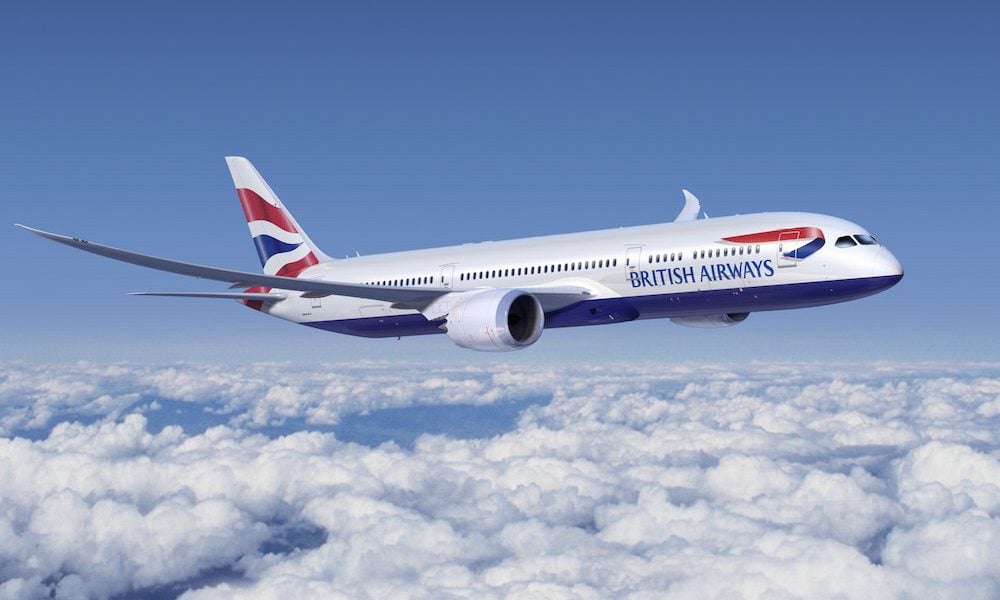 Planning a move to the UK or Europe? British Airways is a reputable option for your pet's travels and a top airline for PetRelocation. Here's what you need to know about booking your pet's transport with British Airways:
Planning a move to the UK or Europe? British Airways is a reputable option for your pet's travels and a top airline for PetRelocation. Here's what you need to know about booking your pet's transport with British Airways:
In-Cabin Pets with British Airways
-
British Airways only allows assistance dogs trained and certified by an organization that is a full member of Assistance Dogs International (ADI) or International Guide Dog Federation (IGDF) to travel in-cabin. Emotional Support Dogs and other pets without certification are ineligible for in-cabin travel.
-
Contact British Airways directly for pricing, booking, and specific requirements for your assistance dog. Remember to comply with the pet import requirements of your destination country.
Remember that even though your dog will be traveling with you in the cabin, you’ll still need to follow the pet import requirements for your destination country.
Unaccompanied Pets or Pets Traveling as Cargo with British Airways
British Airways' sister company, IAG World Cargo, handles live animal transportation via cargo with expertise in moving pets.
-
Ensure your pet's travel crate meets IATA (International Air Transport Association) standards for type and size. PetRelocation can guide you in finding the right crate for your pet.
-
To make cargo reservations, submit an inquiry on the IAG Cargo Website within 14 days of your pet's travels. IAG Cargo's specialized pet staff will assist with safe routing and inform you of the necessary steps.
When booking, provide the following information:
- Shipper information (name, address, phone number)
- Consignee information (name, address, phone number)
- Travel details (departure and arrival airports, flight day)
- Pet details (name, age, sex, species, breed, weight, kennel size)
- A picture of your pet with the travel kennel
Note: British Airways may request that you work with a dedicated pet-shipping company like PetRelocation to organize your booking.
Breed Restrictions with British Airways
- British Airways restricts certain breeds. Consider another airline if your dog is a Bulldog, Pug, Pekinese, Bull Terrier, Fila Brasileiro, Japanese Tosa, Dogo Argentino, or Pit Bull.
Pricing Structure for IAG Cargo
- Air freight charges are based on the kennel's chargeable weight (volume) in kilograms. Additional fees, like fuel surcharges or security fees, are based on the pet and kennel's combined weight. Transit or entry charges may apply for certain routes.
For assistance with your cargo booking, contact PetRelocation for safe pet travel options.
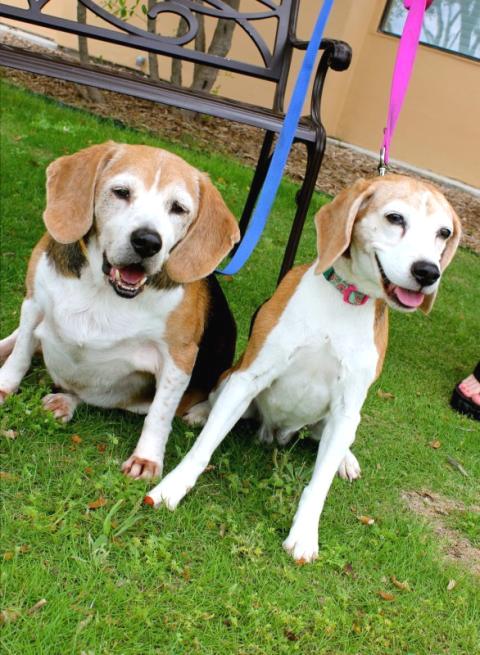
Ralph and Riley traveled on British Airways.
Author:
PetRelocation Team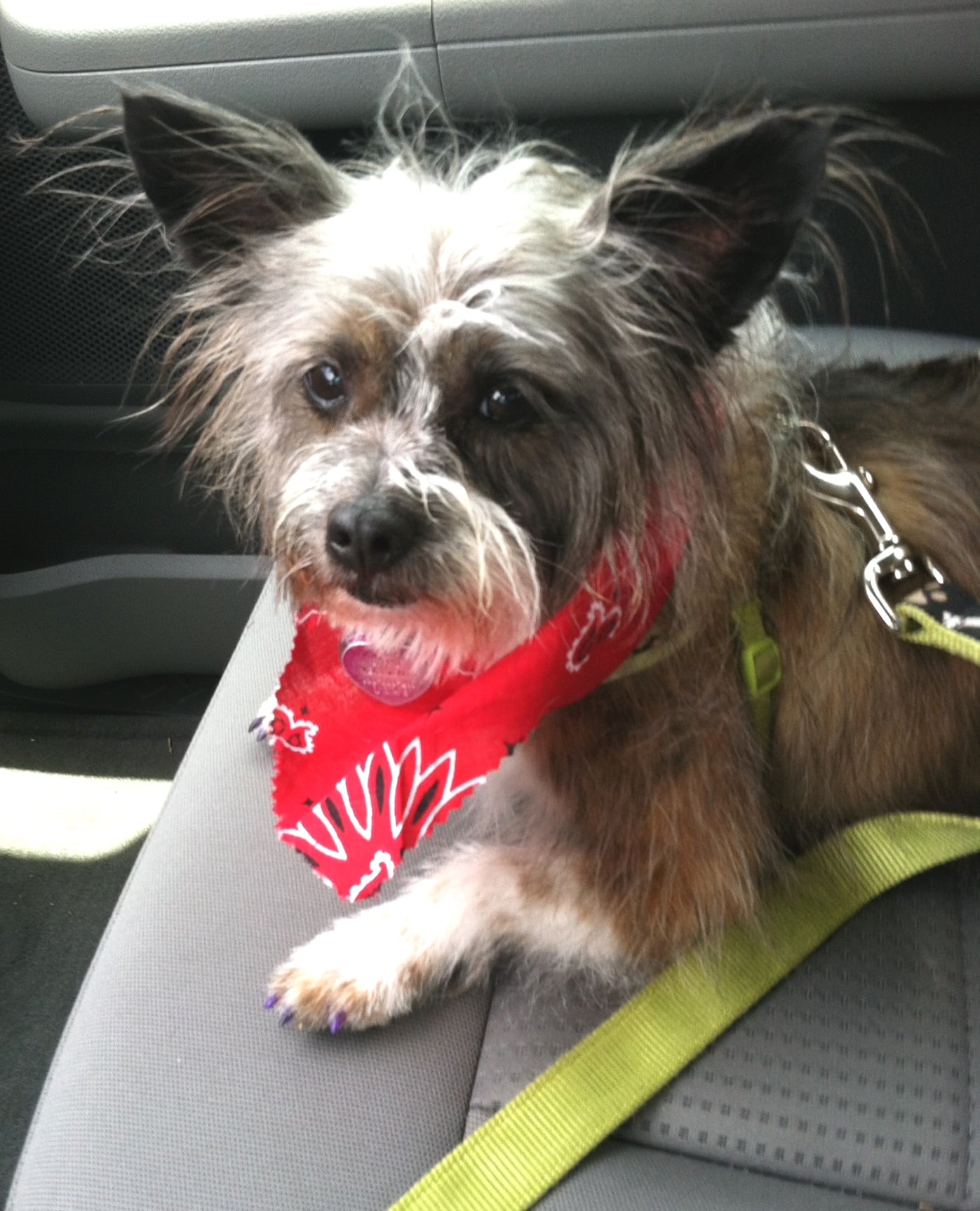 Understanding the Risks of Pet Sedation During Air Travel
Understanding the Risks of Pet Sedation During Air Travel
When it comes to flying with pets, one common question that pet owners often ask is whether they should sedate their pets during air travel. At PetRelocation, our straightforward answer is NO. Sedation carries various risks and is not recommended for pets during air travel.
According to the American Veterinary Medical Association (AVMA), sedating cats or dogs during air travel may increase the risk of heart and respiratory problems. Except in unusual circumstances, veterinarians should not dispense sedatives to transport animals.
The Risks of Sedating Pets for Air Travel
Sedating cats or dogs during air travel can increase the risk of heart and respiratory problems. According to the American Veterinary Medical Association (AVMA), sedatives should not be dispensed for transporting animals except in rare circumstances. Cargo holds in aircraft are pressurized at high altitudes, and the effects of sedation at 8,000 feet or higher are poorly understood. Some animals may react abnormally to sedatives, and there have been cases where sedated pets required veterinary care or could not be revived after air travel.
Sedation can also impair an animal's natural ability to balance and maintain equilibrium. If the kennel is moved during transport, sedated animals may be unable to brace themselves, increasing the risk of injury.
Safer Alternatives to Sedation
Instead of sedation, crate training is a recommended and effective way to prepare pets for air travel. By familiarizing pets with their travel crate ahead of time and creating a positive association with it, pets can feel more secure and relaxed during air travel. Crate training reduces the risk of anxiety or discomfort, eliminating the need for sedation.
You can explore our tips for crate-training cats and crate-training dogs for more information on crate training. PetRelocation offers various services, including consultations and assistance with customs and quarantine requirements, to help pet owners ensure safe and comfortable transport.
If you have questions about pet travel or need expert guidance, contact PetRelocation to discuss safe pet transport options.
Here are a few crate training tips for cats and dogs. Rather than sedation, consider crate training the kindest and smartest thing you can do for your pets as you prepare them to fly domestically or internationally.
Have more questions about pet travel? Contact PetRelocation to discuss your safe pet transport options.
Author:
PetRelocation TeamUncovering the Mystery: Can Pets Predict Earthquakes?
The belief that animals, including pets, possess a mysterious ability to predict earthquakes has existed for centuries. From ancient Greek observations to more recent anecdotes, this phenomenon has captured the curiosity of pet owners and scientists alike. But can pets truly sense natural disasters before they occur? And if so, how do they do it?
The History of Animal Earthquake Prediction
Historical accounts suggest that animals have exhibited unusual behavior before major earthquakes. The ancient Greeks noted the exodus of rats, weasels, snakes, and centipedes from the city of Helice days before an earthquake in 373 BC. In 2004, the Indian Ocean Tsunami devastated coastal regions, but animals fared remarkably well, raising questions about their survival instincts.
The belief that dogs and cats can predict earthquakes is long-standing in China. The city of Haicheng was evacuated in 1975 based on the behavior of animals, potentially saving an estimated 150,000 lives.
Science and Skepticism
Despite numerous anecdotes, scientists remain skeptical about animals' ability to detect earthquakes. It's challenging to test and verify in a controlled environment. Additionally, the reasons behind unusual animal behavior are not always clear, and people may only take note of it after a memorable earthquake.
Understanding the "Sixth Sense"
Dr. Stanley Coren, the author of several books on dog communication, conducted a study at the University of British Columbia in Vancouver, Canada. The study found that some dogs could detect an earthquake, with increased activity and anxiety observed 24 hours prior. Dr. Coren suggests that dogs use their remarkable sense of hearing to pick up high-pitch sounds of rocks scraping beneath the earth—an event that precedes earthquakes.
Dogs with pointy ears and smaller head sizes were better at detecting the sound than those with floppy ears and larger heads. While dogs may not understand the meaning behind the sound, it may be akin to nails on a chalkboard, prompting them to flee.
Exploring the Possibilities
While further research is needed to fully understand animals' ability to predict earthquakes, the anecdotes, and studies so far offer intriguing insights. Whether it's through hearing, sensing electromagnetic waves, or detecting subtle tremors, pets continue to amaze us with their unique abilities.
Curious about other pet behaviors? Explore more topics and connect with the PetRelocation team here.
Author:
PetRelocation TeamTopic:
Pet:
Country:

Pit Bull Travel: Navigating Breed Specific Legislation
As the proud parent of a pit bull or a breed traditionally considered "aggressive," you may have encountered the term "Breed Specific Legislation" (BSL). BSL refers to rules and regulations restricting the importation or residency of certain dog breeds in specific countries. While these laws can be challenging to navigate, we're here to guide you on where to take your beloved pit bull or similar breed. Here's a list of destinations with little to no breed restrictions.
Europe
North America
Africa
Asia
South/Central America
Europe
- Austria
- Belgium
- Czech Republic
- Sweden
- While Sweden does not ban the import of any breeds, certain pets will require extra attention.
- Estonia
- Finland
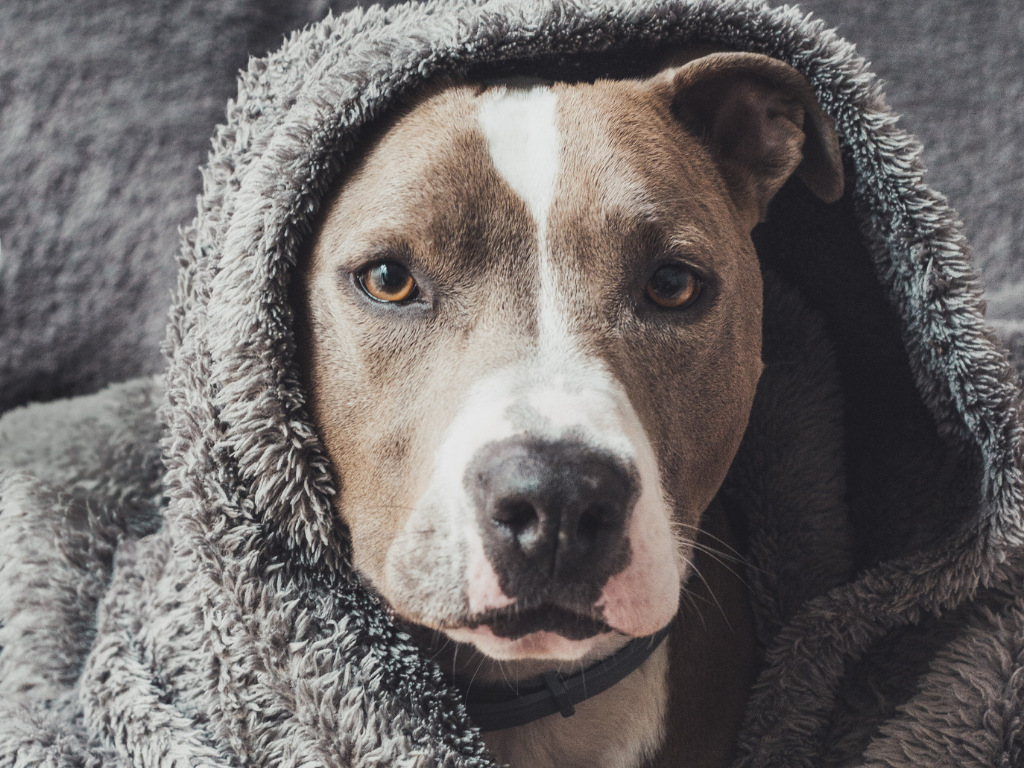
- Hungary
- Ireland
- Italy
- Venice does not allow Rottweilers.
- Latvia
- Netherlands
- Poland
- Ukraine
North America
Africa
- Kenya
- Nigeria
- South Africa
Asia
- Egypt
- India
- While India does not have a ban on any dog breeds, you cannot import any animal besides cats and dogs.
- Indonesia
- Japan
- Pakistan
- Philippines
- Russia
- South Korea
- Taiwan
- Thailand
- Turkey
South/ Central America
- Brazil
- Brazil does not have a ban on any dogs, but birds are not allowed for import.
- Costa Rica
- Ecuador
- Nicaragua
- Peru
Planning a move with your pet but not sure if their breed will be allowed? Let us help you keep your family together! Send us your questions today.

